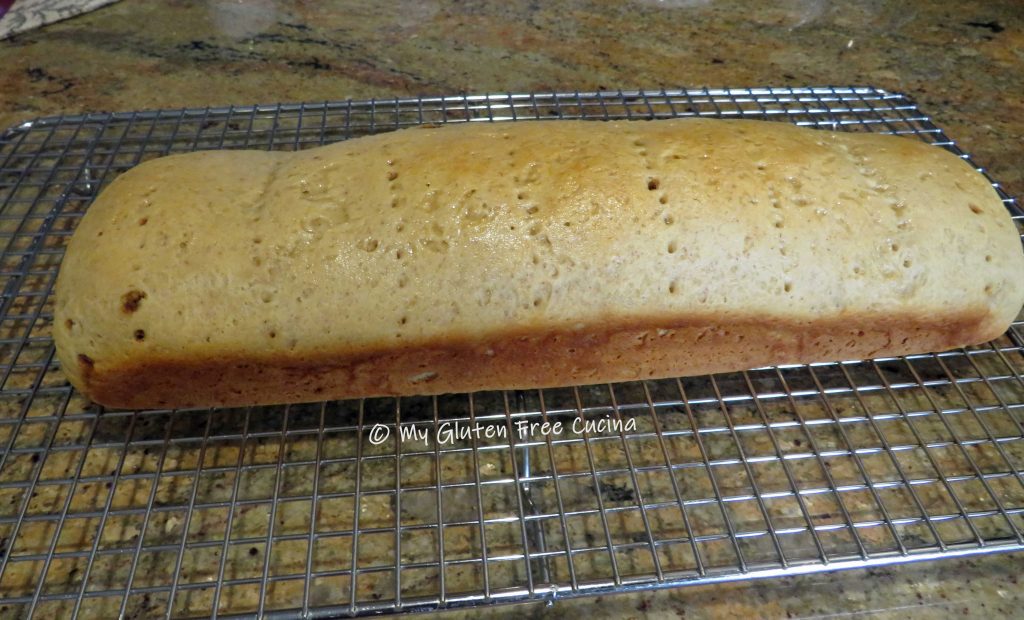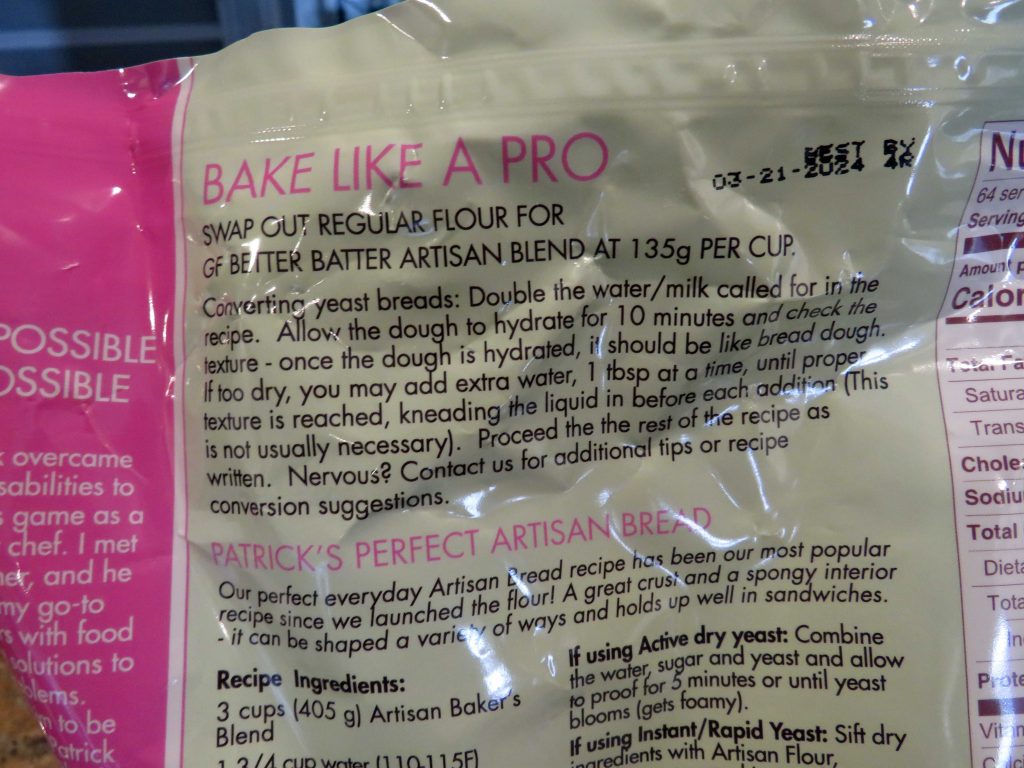My gluten free sourdough starter Sophie is getting more bubbly each week. She turned one month old recently, and I was getting ready to bake another loaf of bread in the morning. But first she had to be fed a couple of times, and there was the inevitable discard. You know I don’t want a bit of this magical culture go to waste, so I thought I would test a small batch of Sourdough Discard Pancakes.
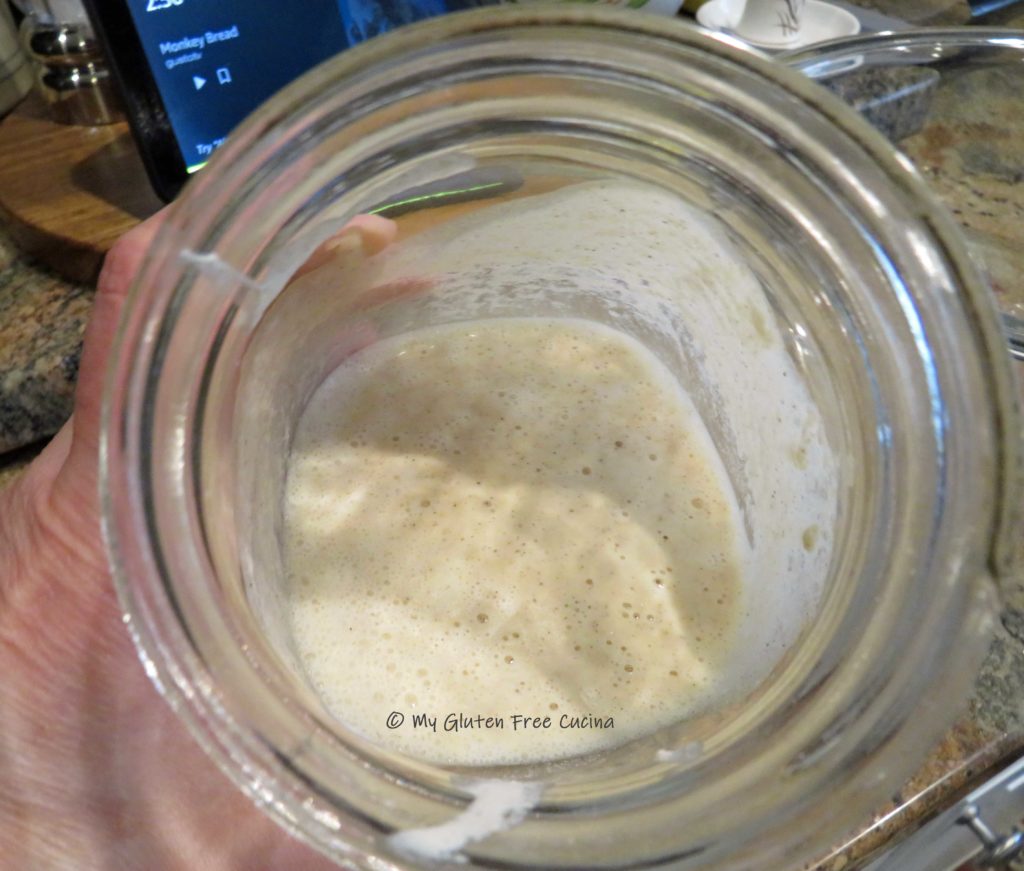
It was my first-time making pancakes with sourdough and I was pleasantly surprised. The familiar sweetness of pancakes with just the right amount of savory sourdough flavor, who knew? Using the sourdough discard seemed to give my pancakes an extra high rise too. These pancakes were hearty and filling, guaranteed to satisfy big appetites.
I made 5 pancakes with my test batch, about 1/3 cup batter each. Double the recipe for a family breakfast.
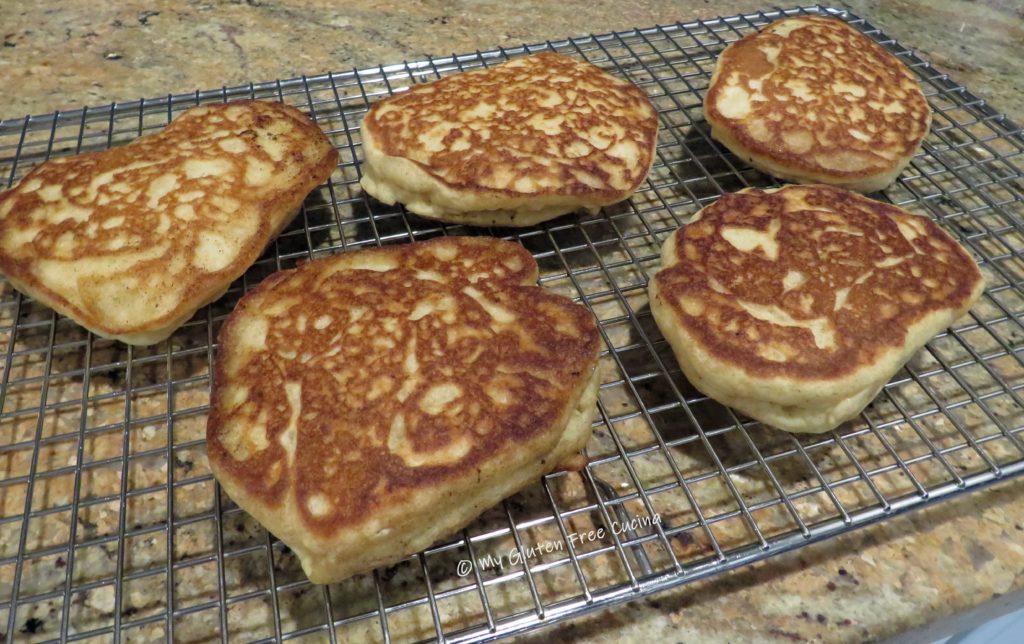
Ingredients:
- 2 tbsp. melted butter plus more for the griddle
- 2 tbsp. sugar
- 1/4 cup sourdough discard
- 1 large egg
- 1/2 tsp. vanilla
- 2/3 cups milk (I used 2%)
- 120g. gluten free all-purpose flour (about 3/4 cup)
- 1 tsp. baking powder
- 1/2 tsp. baking soda
- 1/2 tsp. salt

This post contains affiliate links.
Preparation:
Melt the butter in the microwave and set it aside to cool while you gather the other ingredients.
Combine the first 5 ingredients, butter through vanilla in a small bowl. In another bowl, whisk together the flour, baking powder, baking soda and salt.
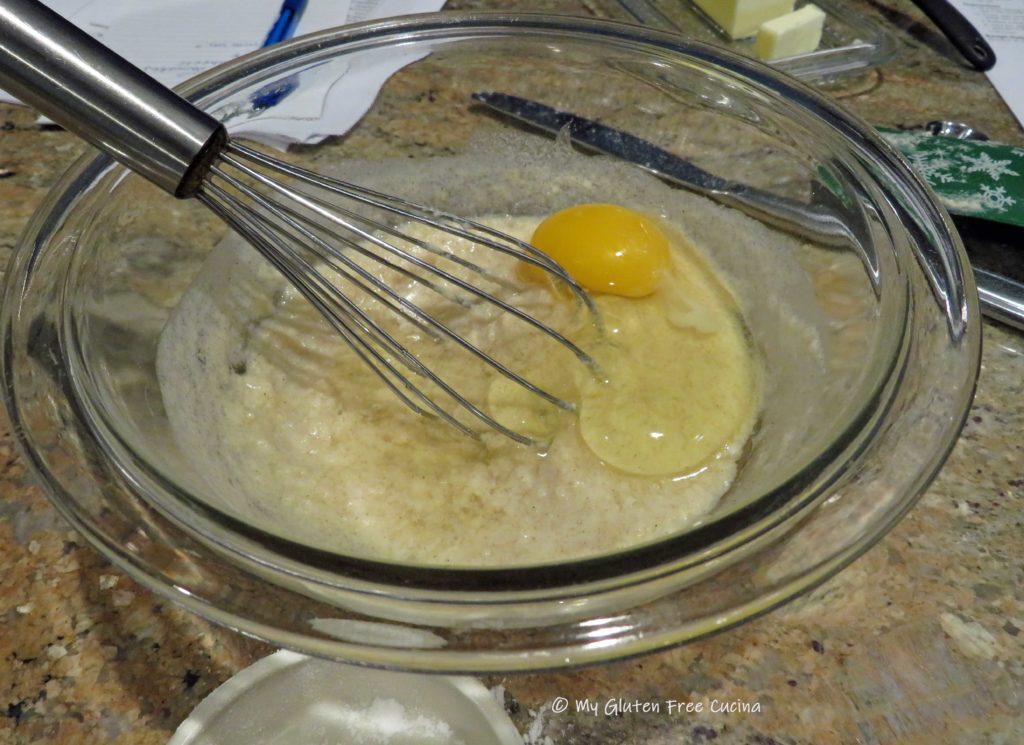
Use a batter whisk to stir the wet and dry ingredients together with 2/3 cup milk. If the batter is too thick, you can add a little more milk, 1 tbsp. at a time to reach the right consistency.
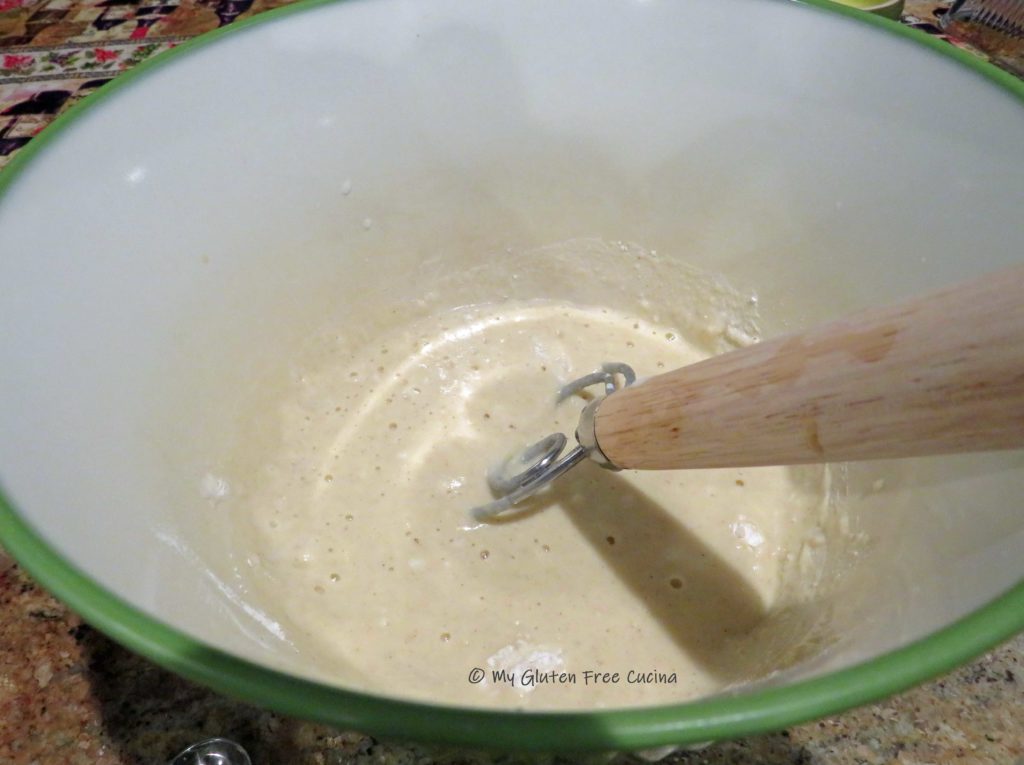
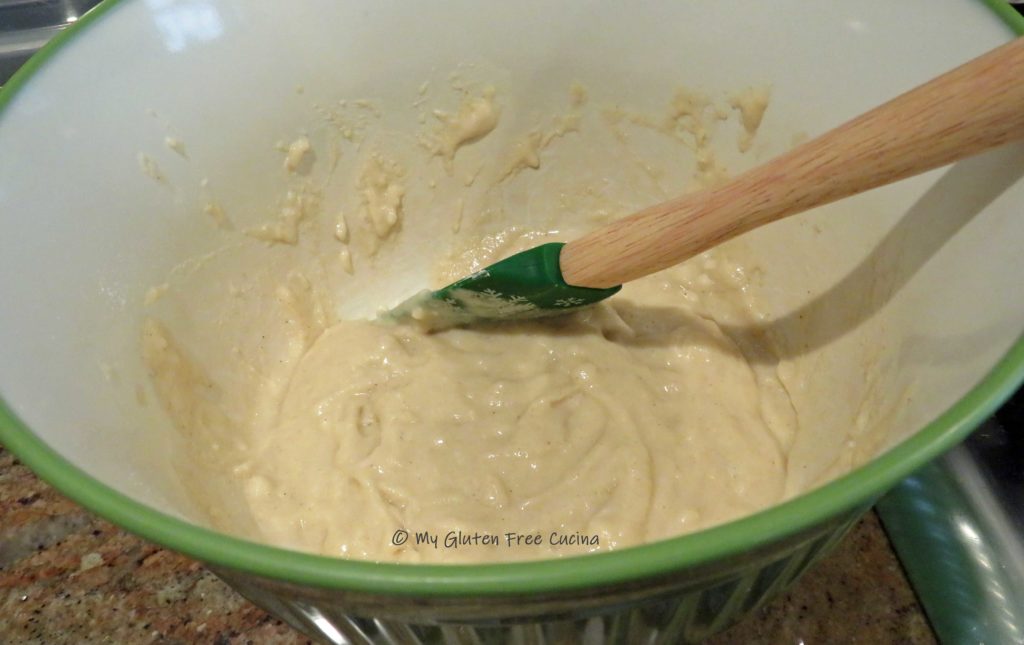
Preheat your griddle or nonstick skillet for 10 minutes and let the batter rest.
Hint: Do you know why they say the first pancake always comes out a little weird? It’s probably because the griddle wasn’t hot enough.
When you are ready to begin, butter the griddle or skillet generously and begin spooning out your pancakes. I like a nice big pancake, so I scooped the batter out with a 1/3 cup measuring cup. You can make your pancakes as large or small as you like.
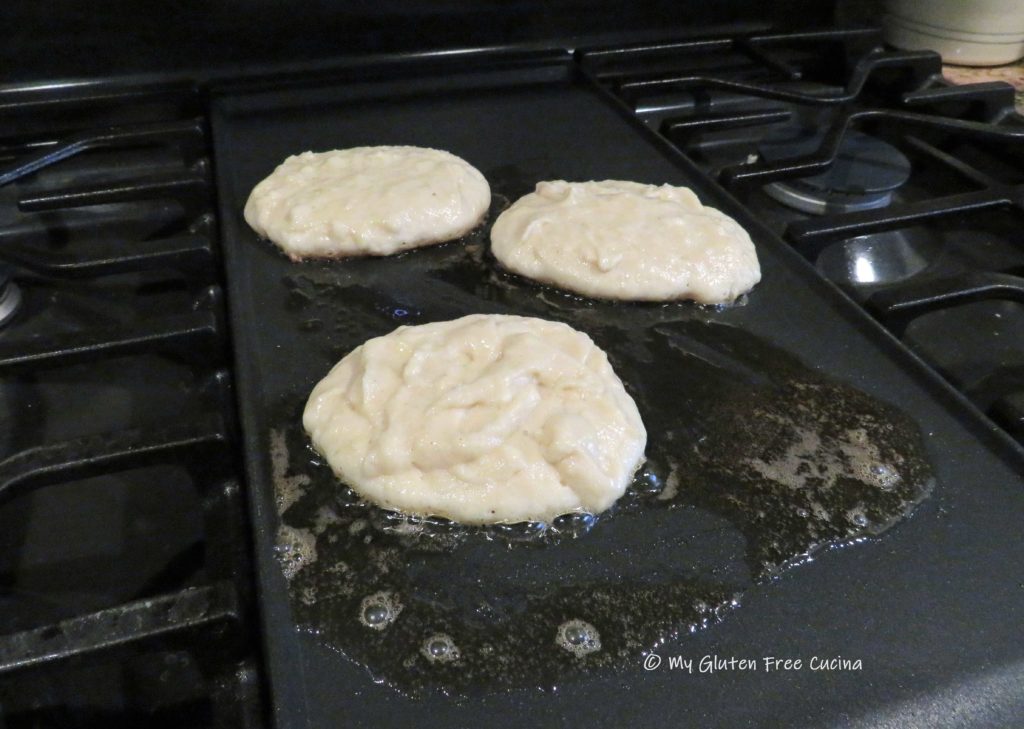
Keep a close eye and be ready to flip the pancakes over as soon as the bottom is set, time will vary depending on how large you make the pancakes.
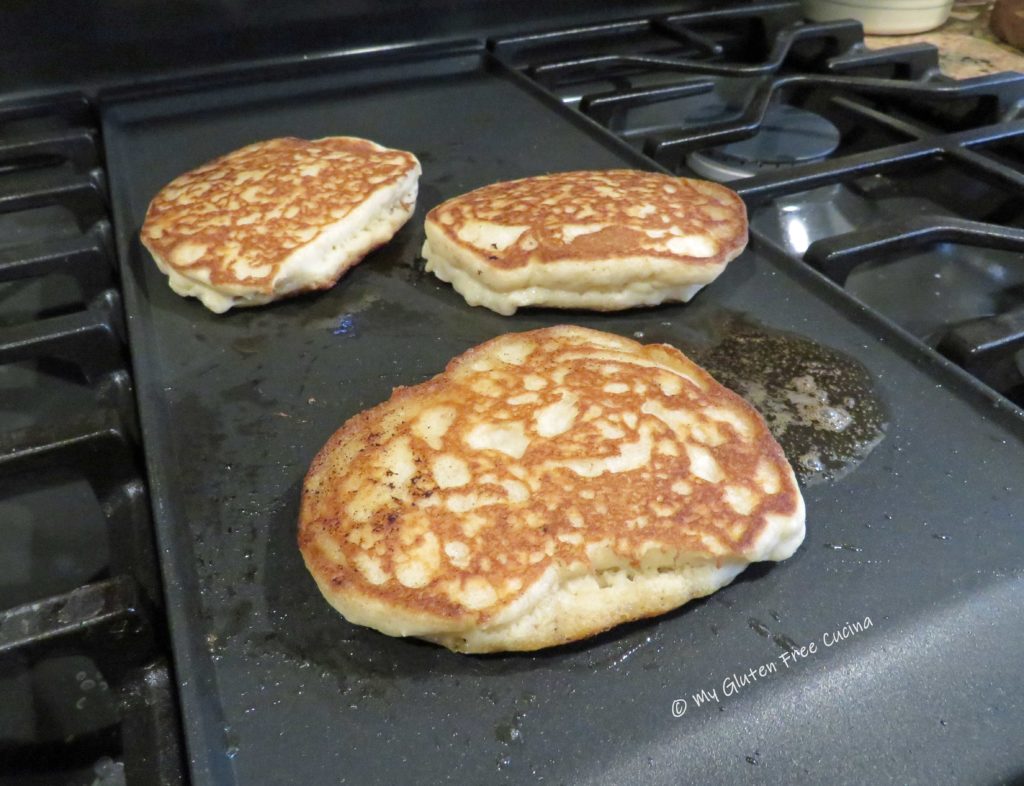
You should get a nice rise as soon as you flip them over.
 When the second side is set check the center for doneness with a toothpick. I had to flip mine another time or two.
When the second side is set check the center for doneness with a toothpick. I had to flip mine another time or two.

Here’s breakfast! This was a delicious and filling pancake; one was more than enough for me. Look how thick it is!
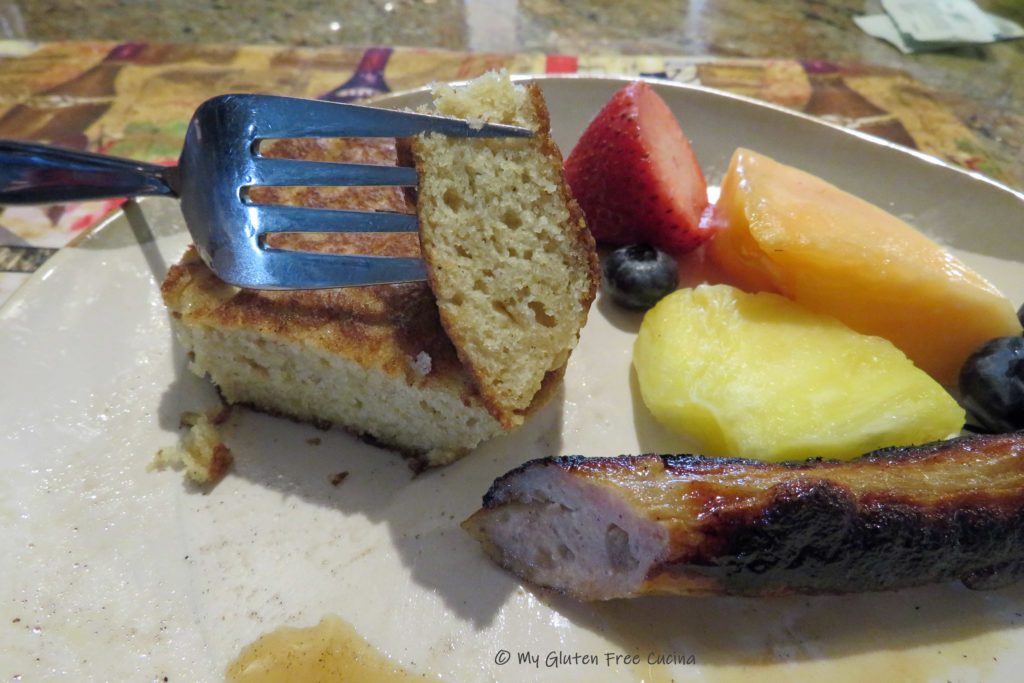

Once they were cooled to room temperature, I wrapped the rest of the pancakes individually in plastic wrap and placed in a freezer safe bag. They will keep for a couple of months in the freezer (at least) and can be defrosted and reheated in the toaster or the microwave.
Notes ♪♫ I used and recommend Better Batter Original Gluten Free Flour in this recipe. It is a high-quality flour that will change the way you bake!

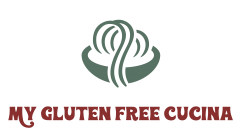

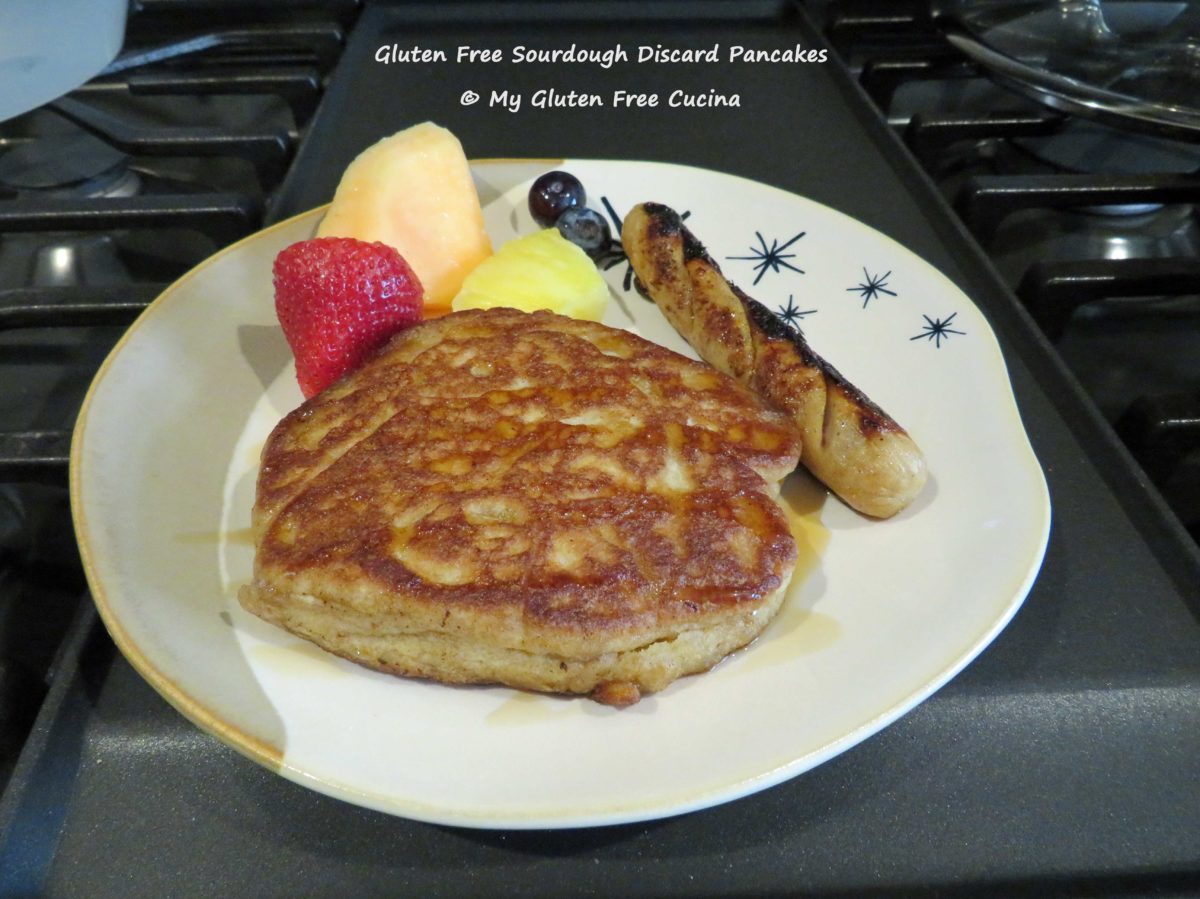

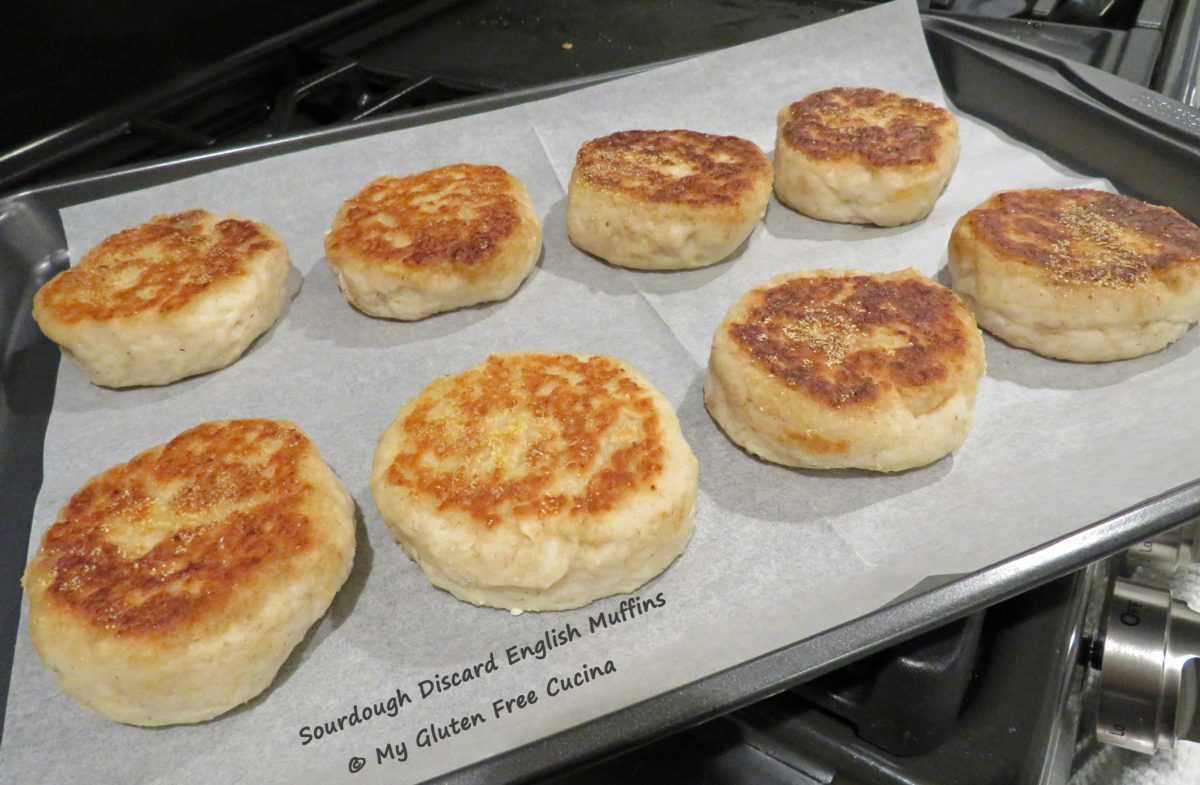
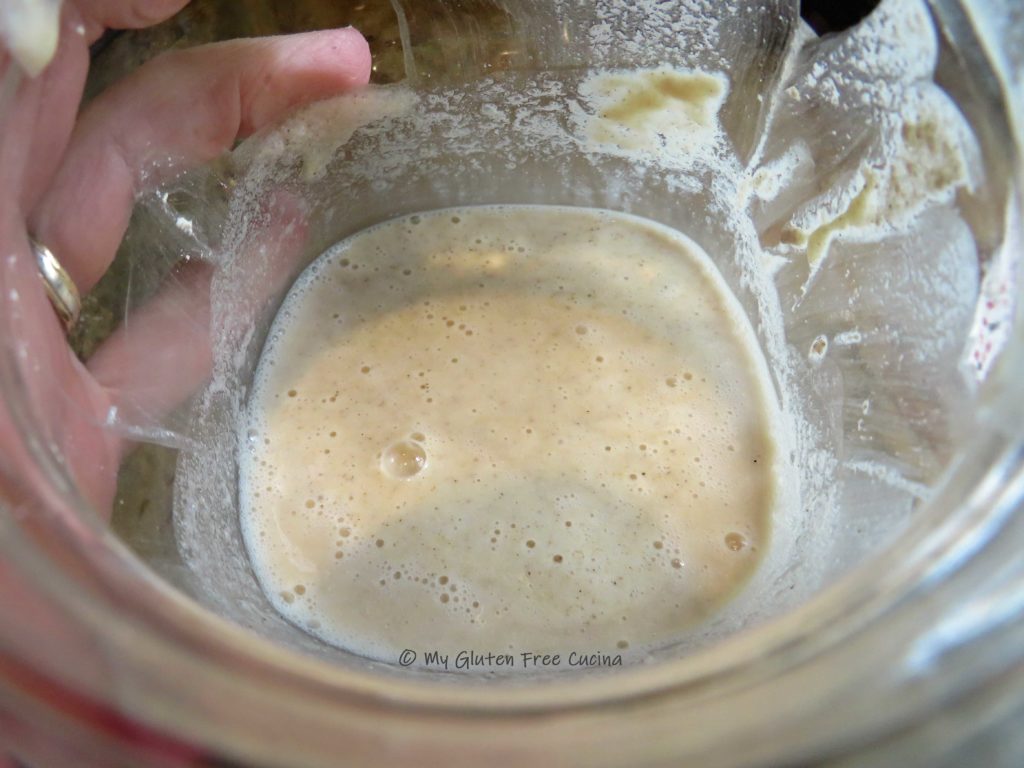
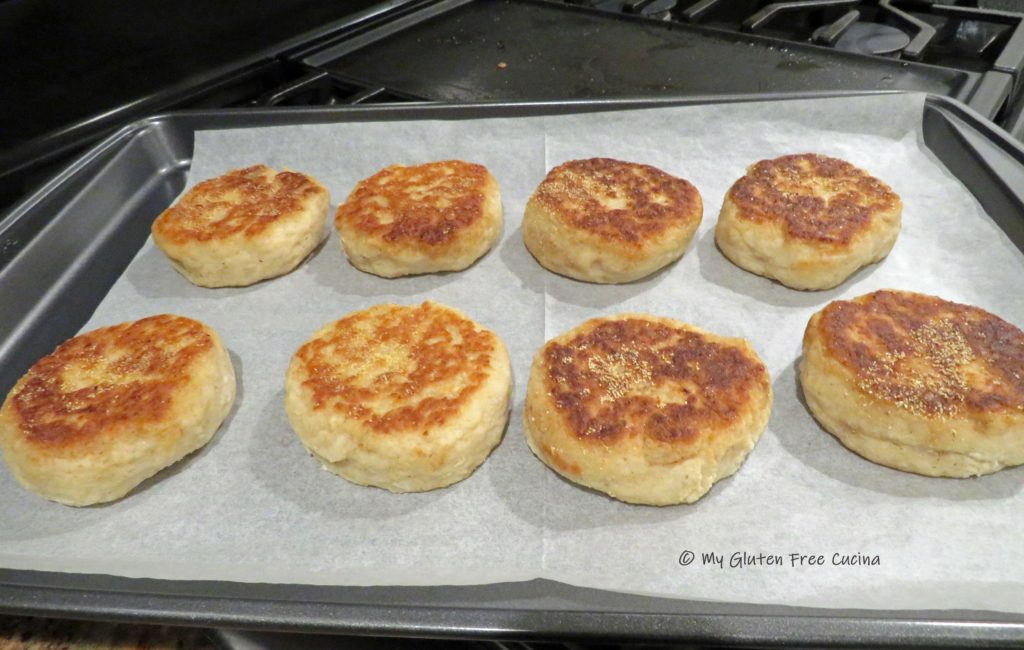

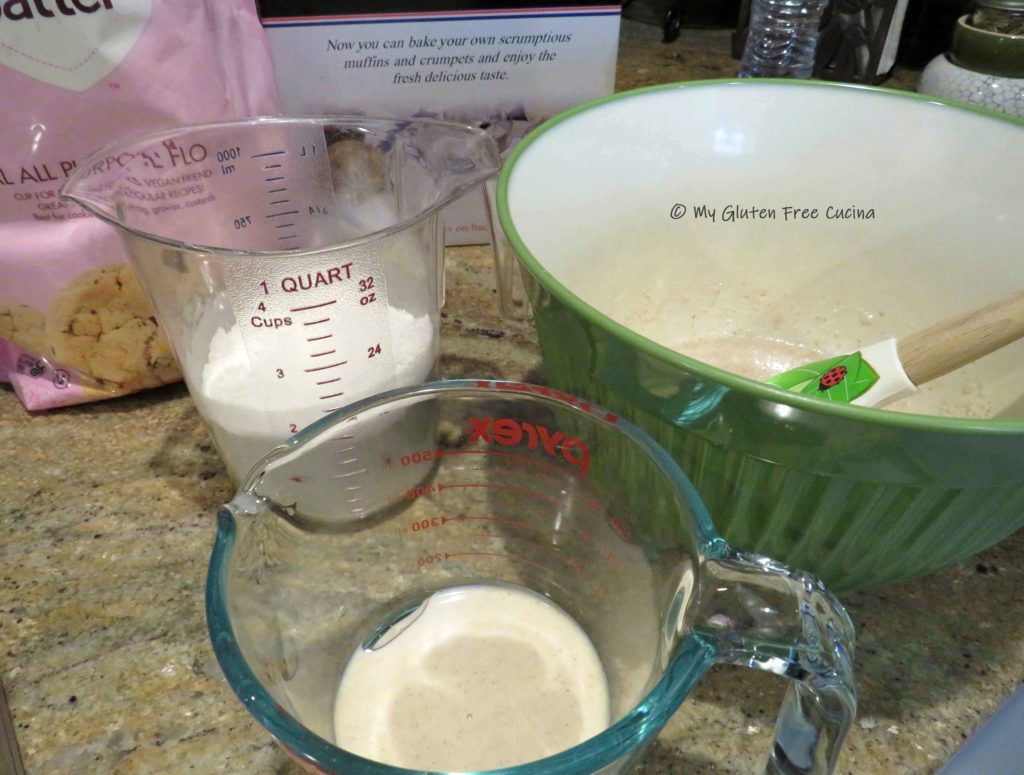

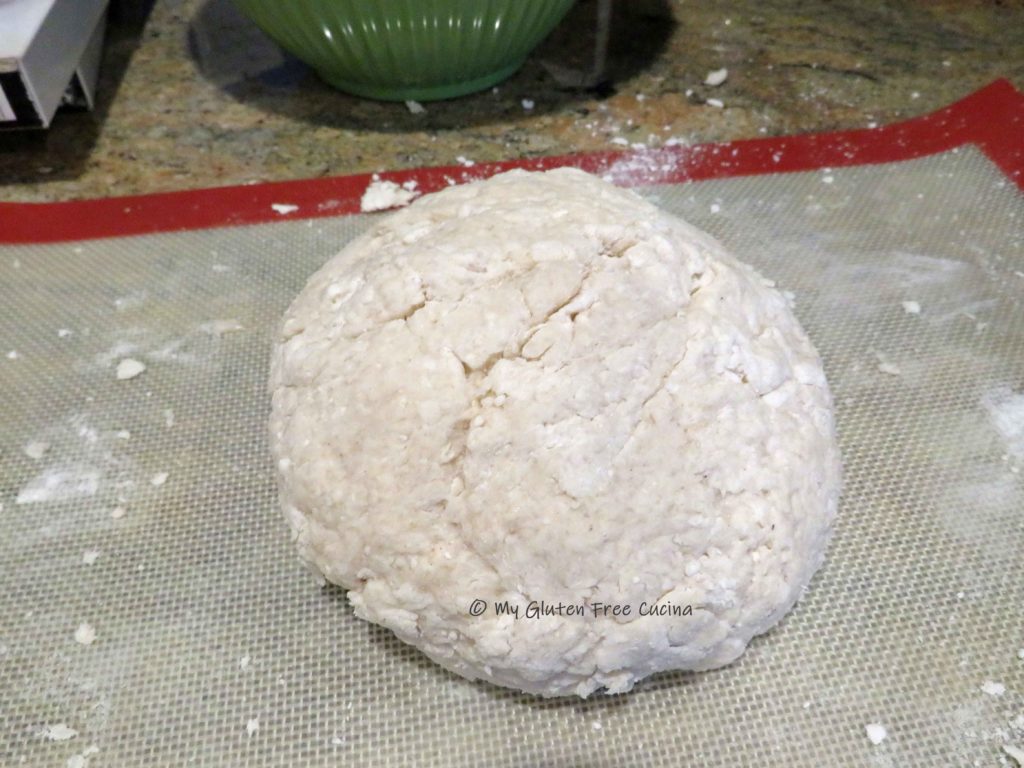



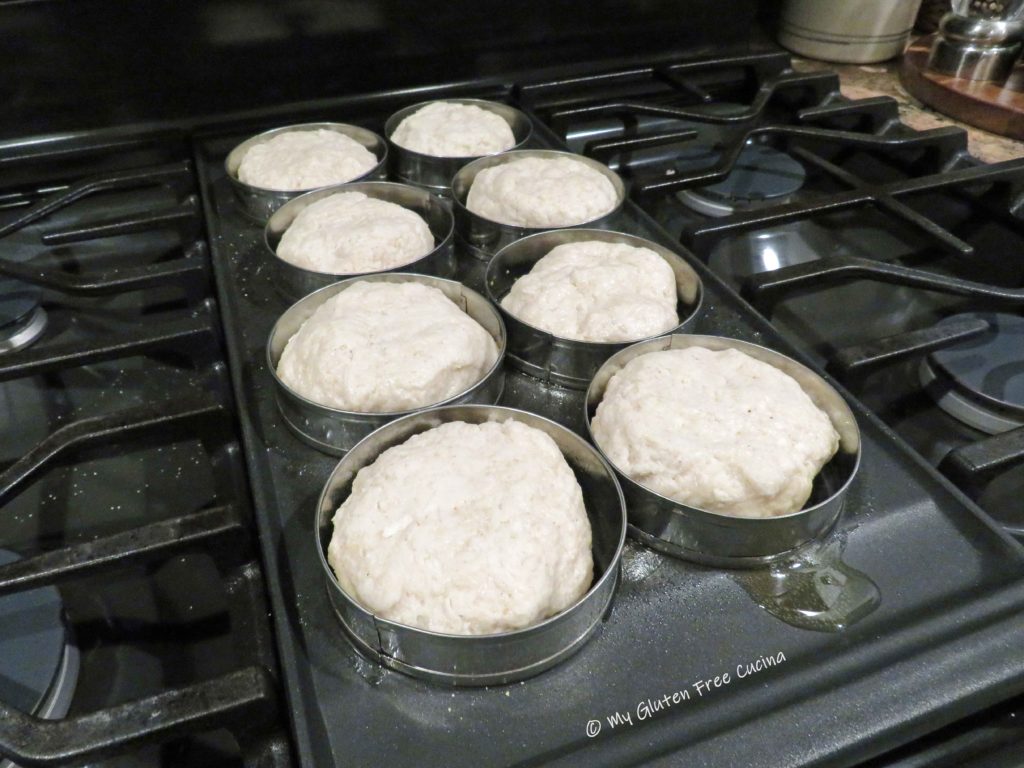

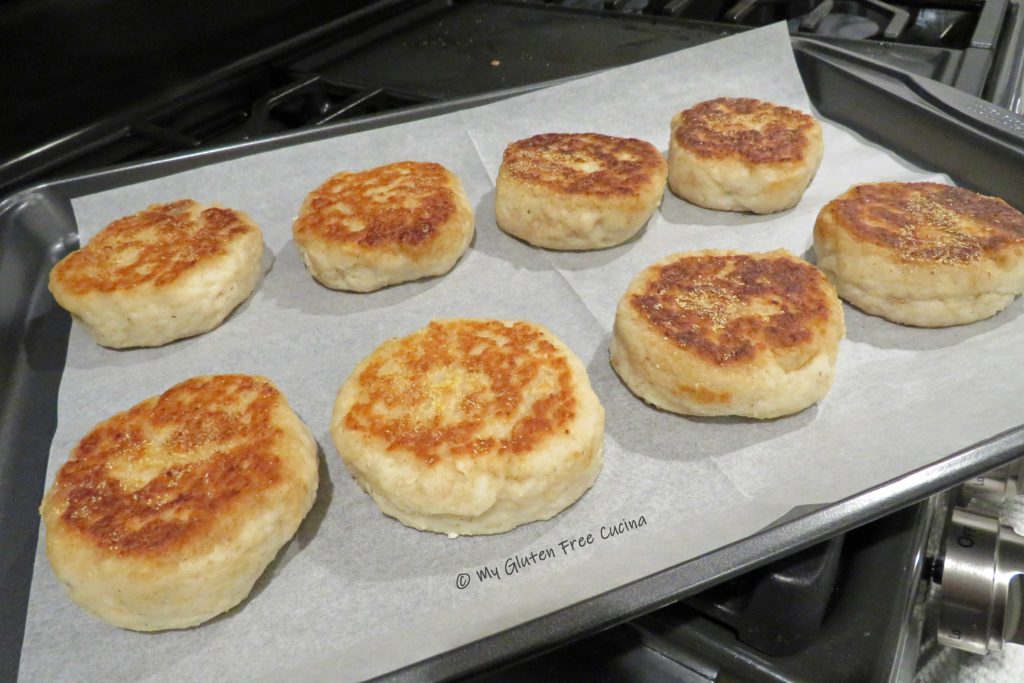
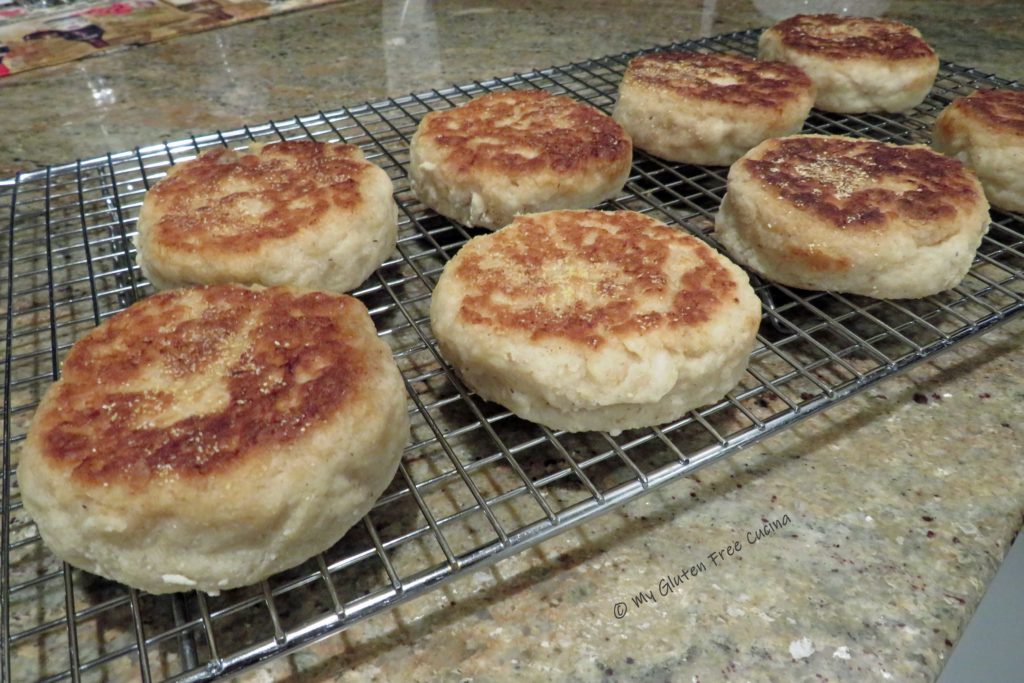

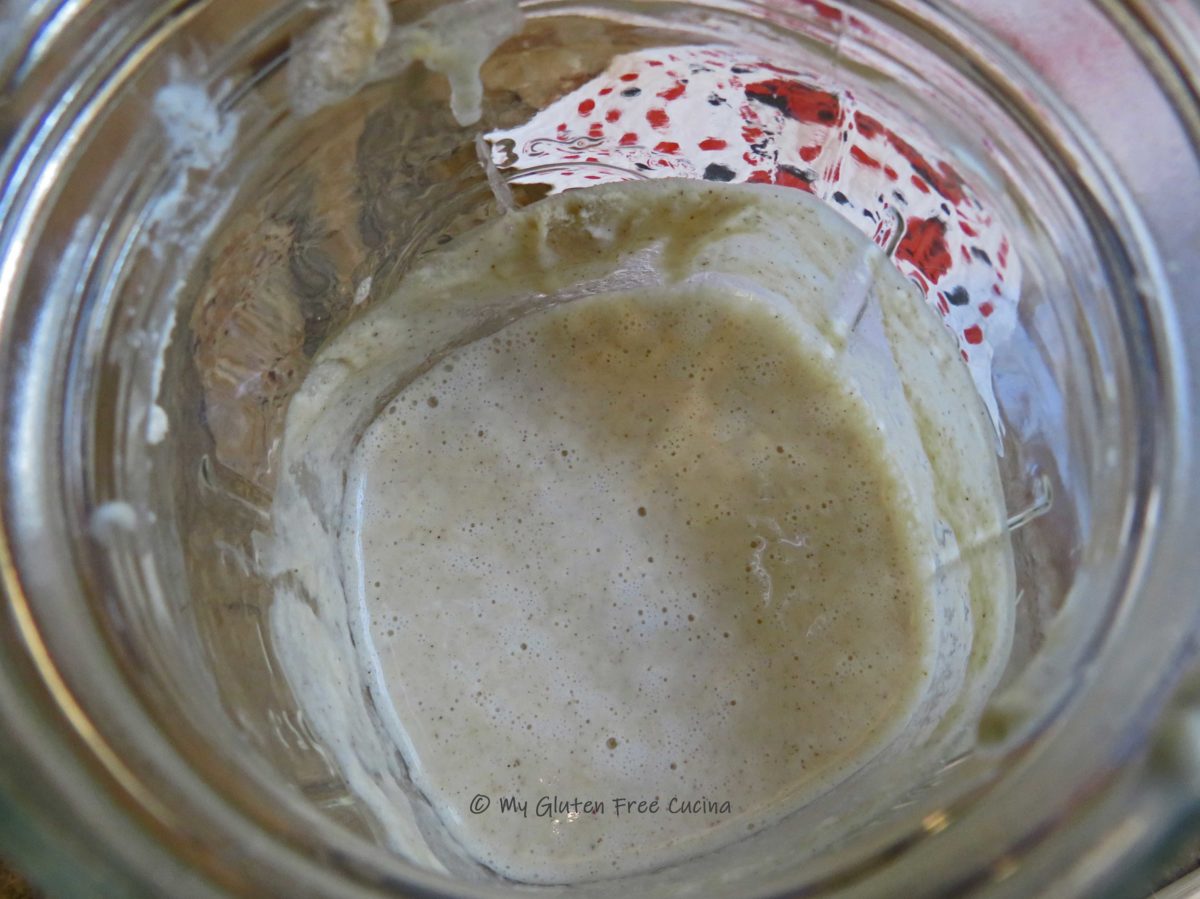


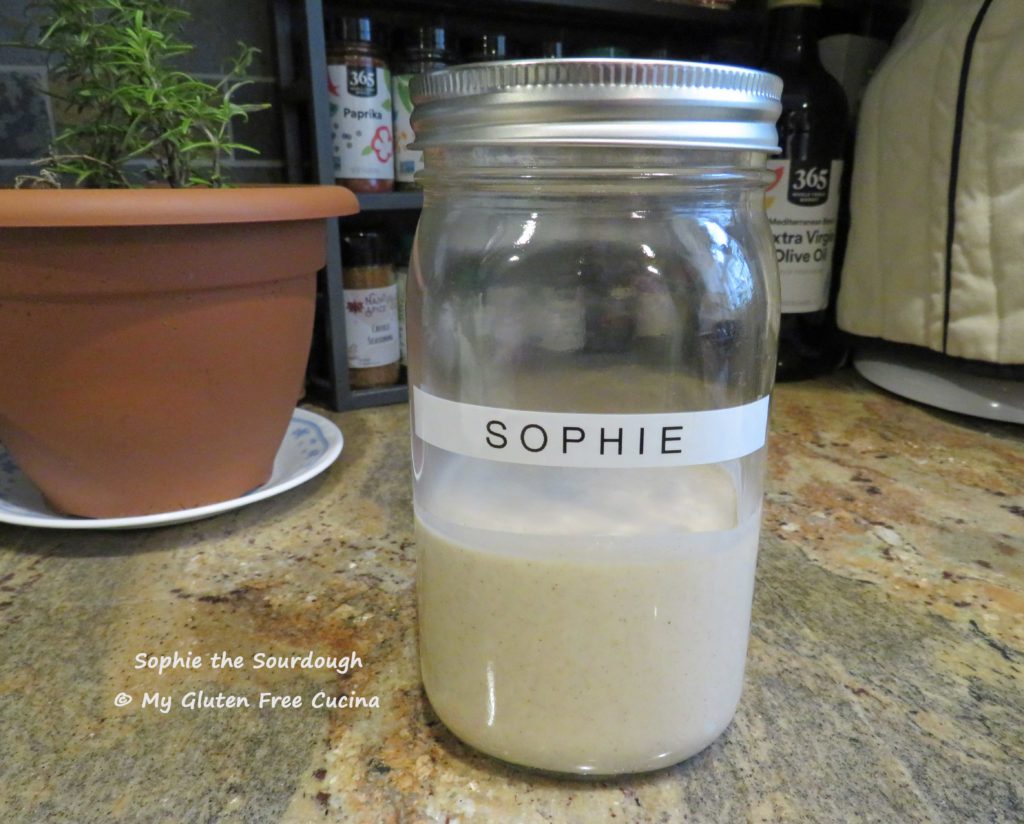

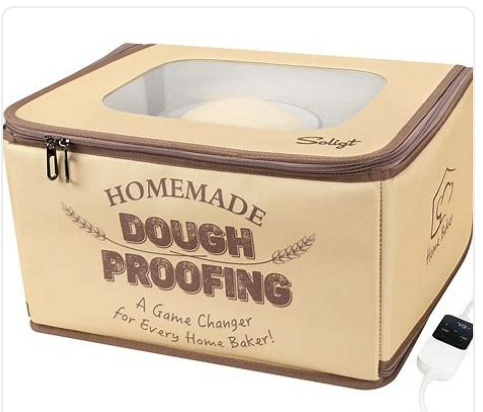
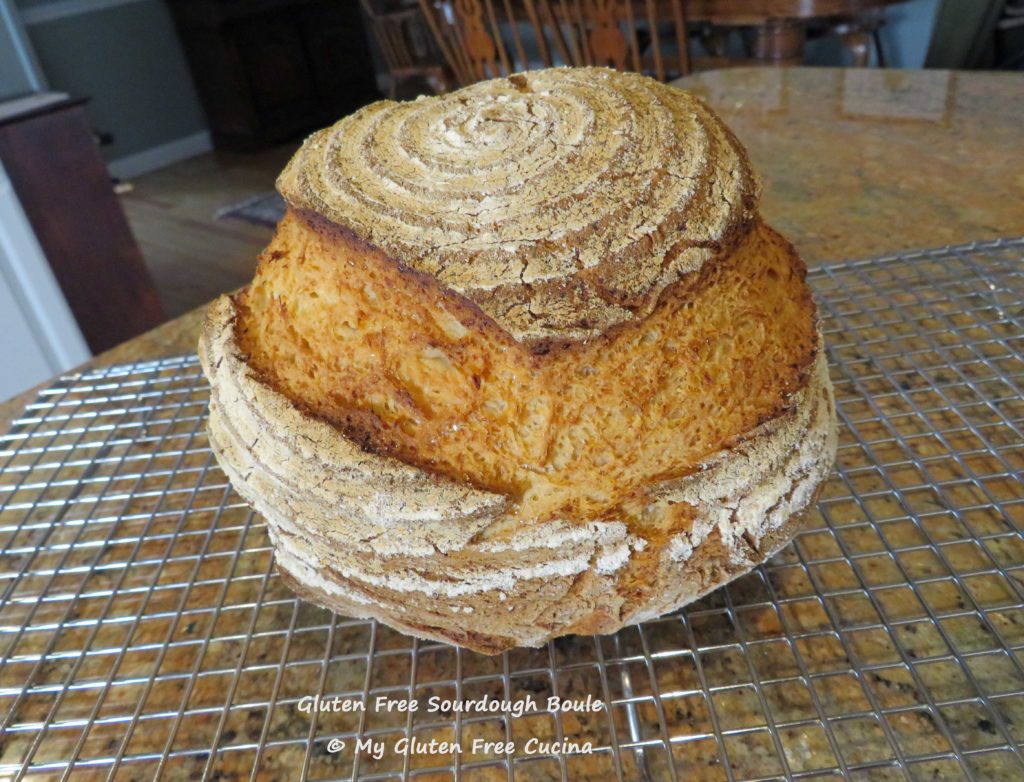
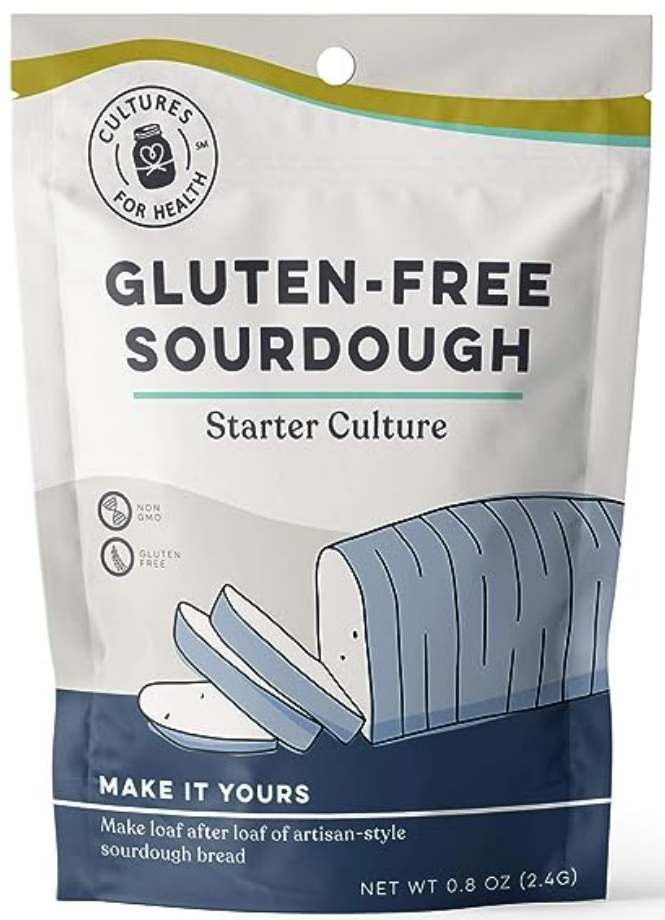


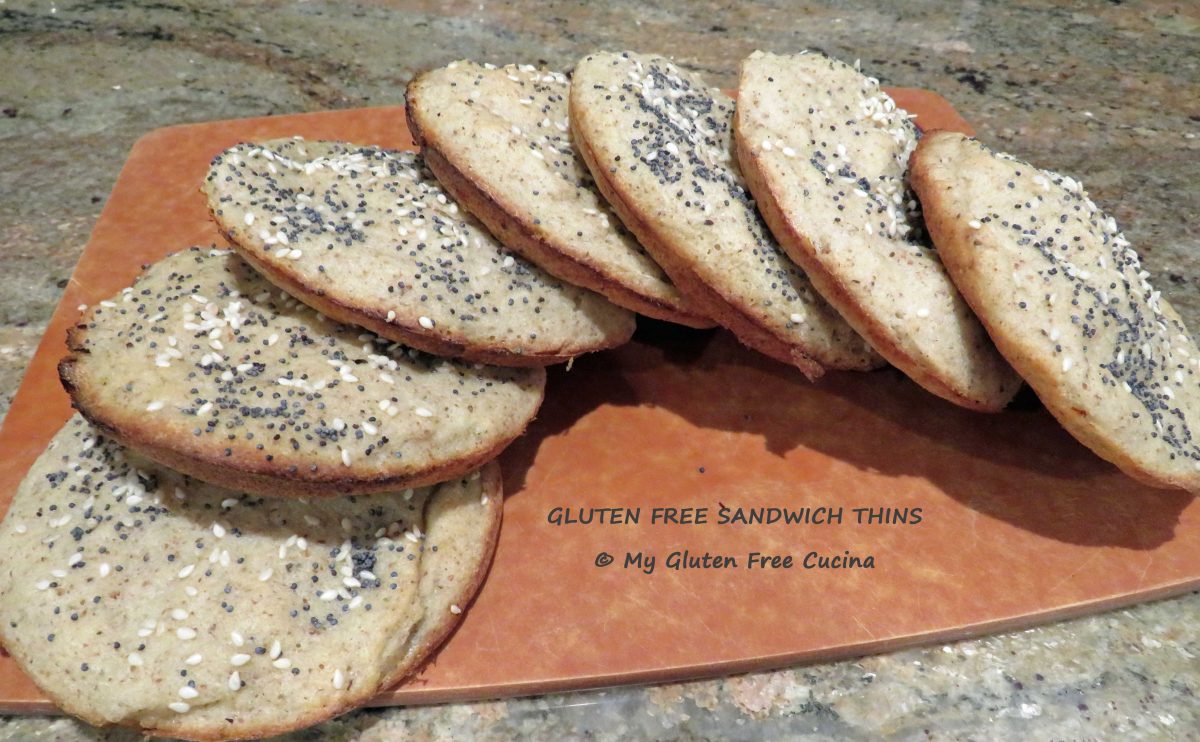
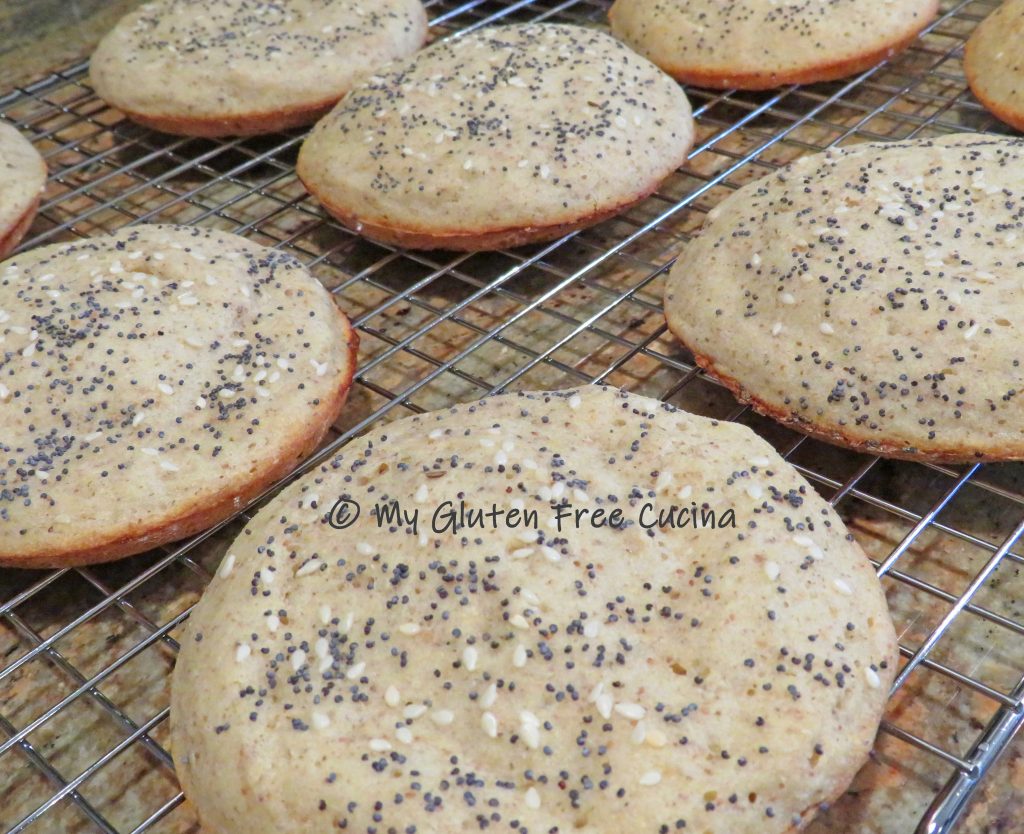
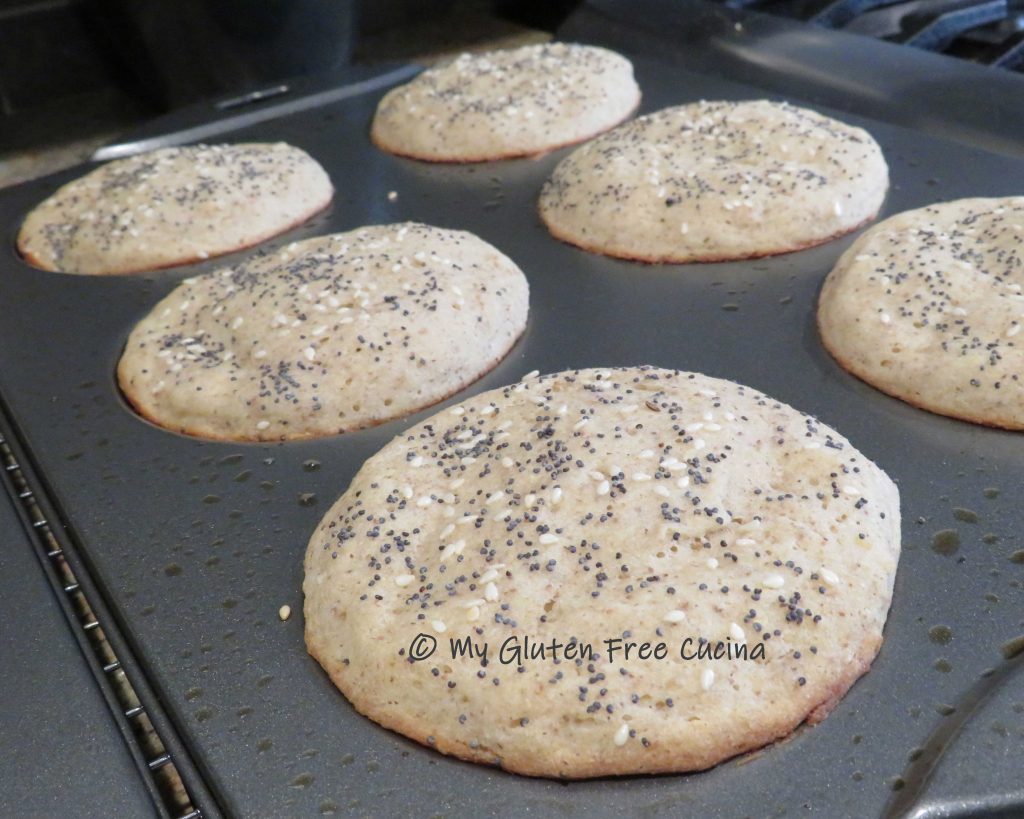
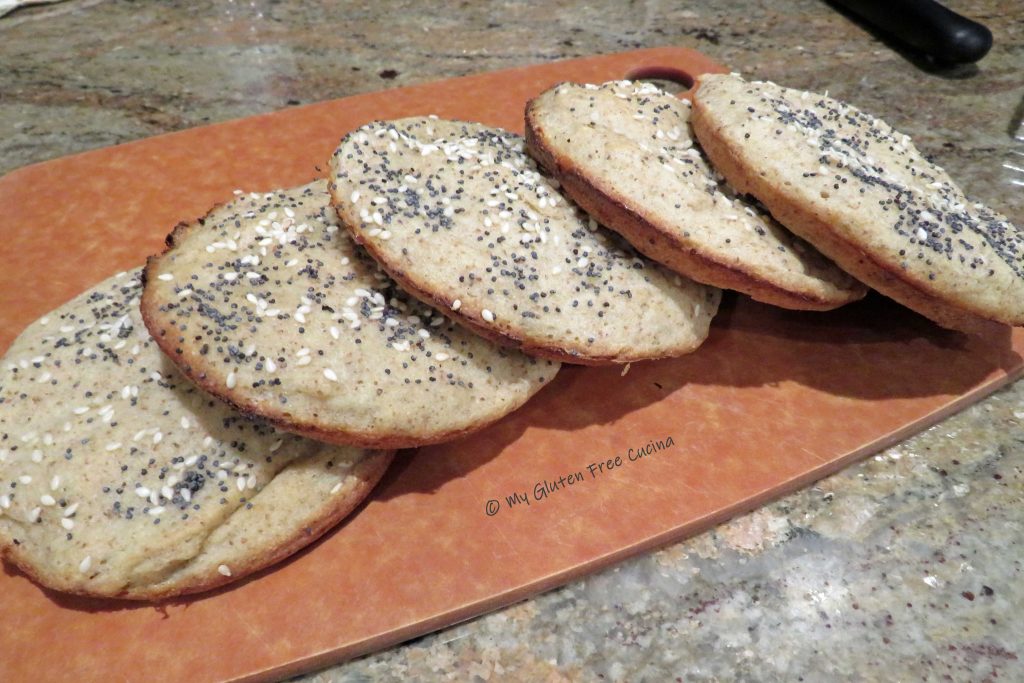


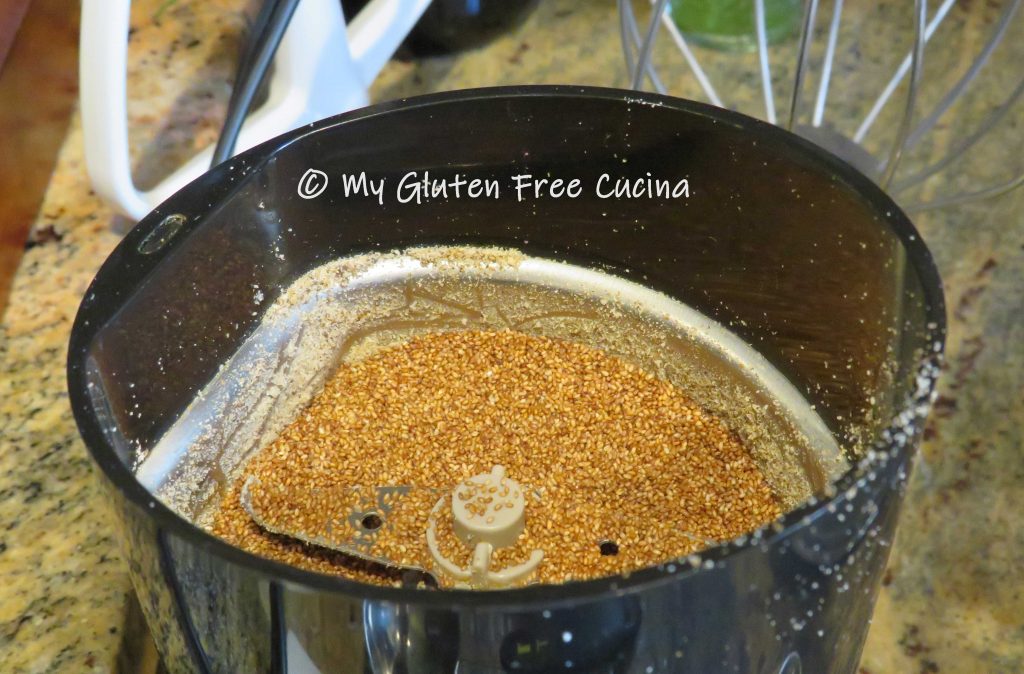
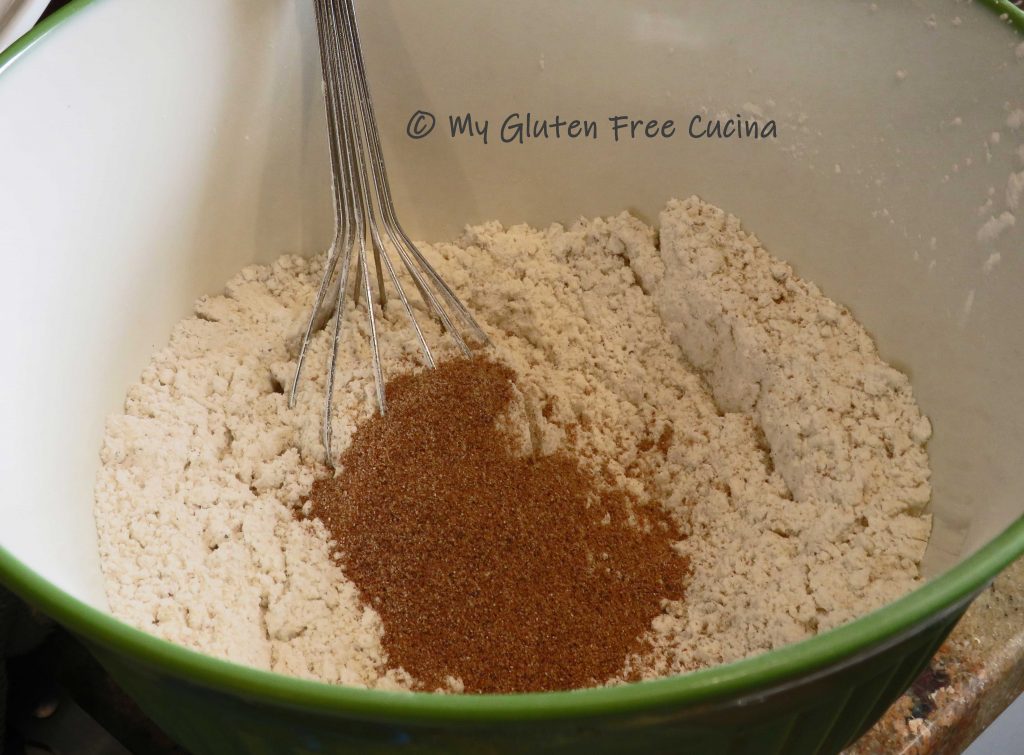
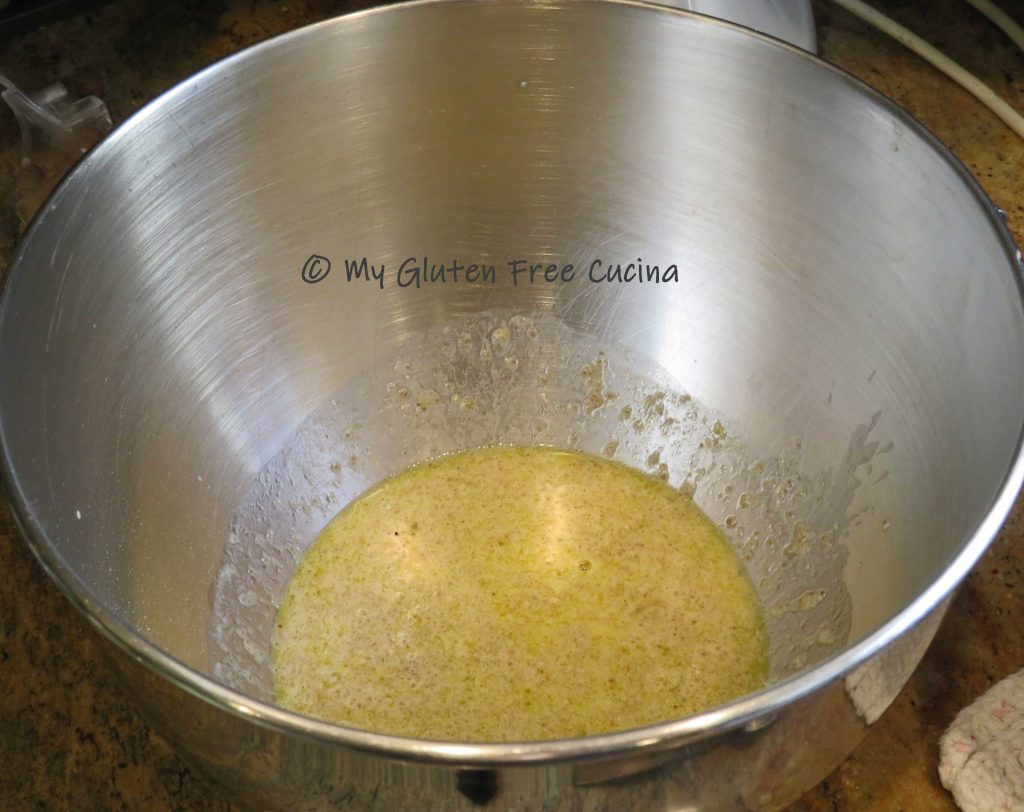

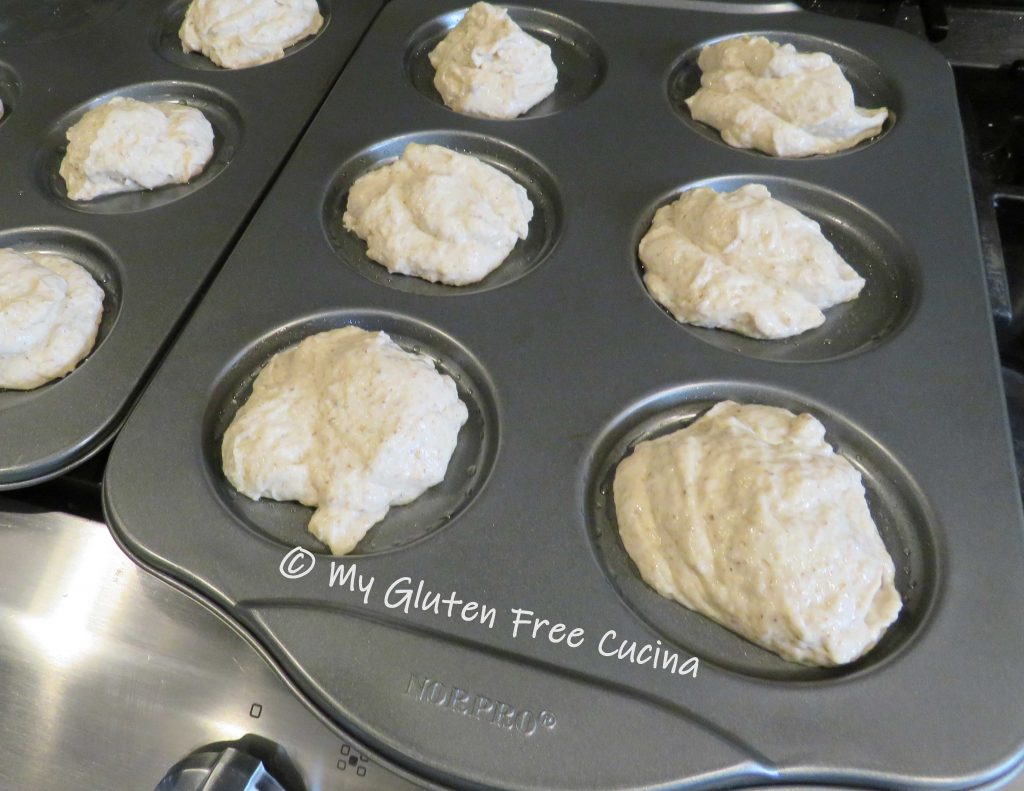
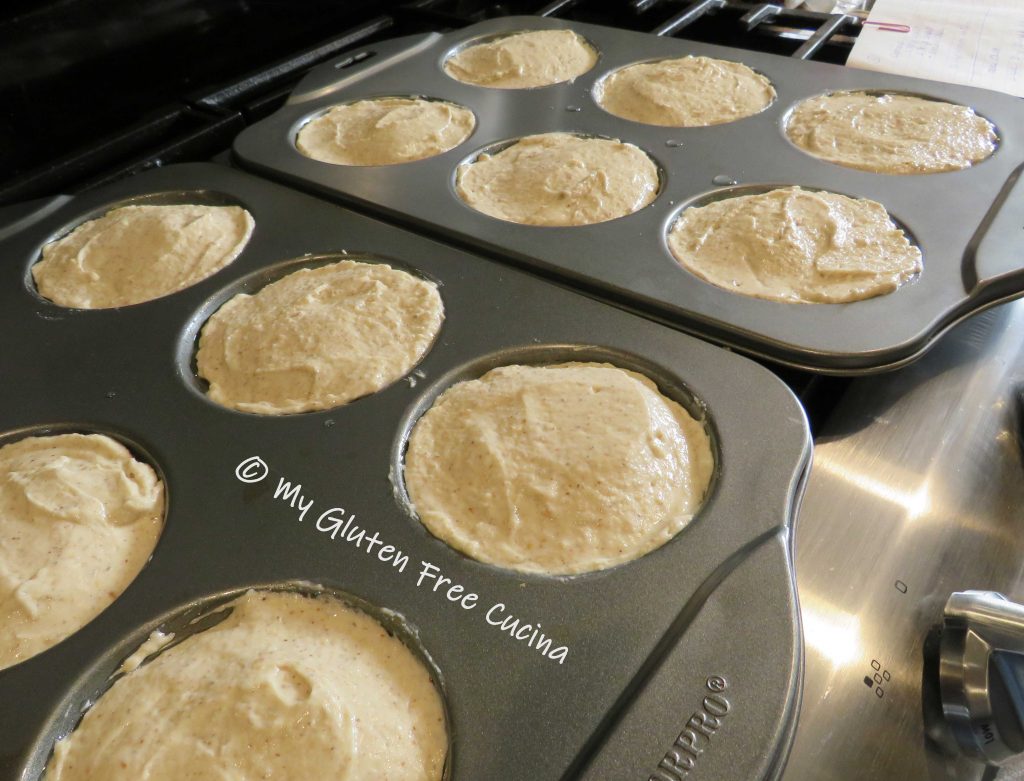
 Bake for 15 minutes, or until the buns reach an internal temperature of 205º.
Bake for 15 minutes, or until the buns reach an internal temperature of 205º.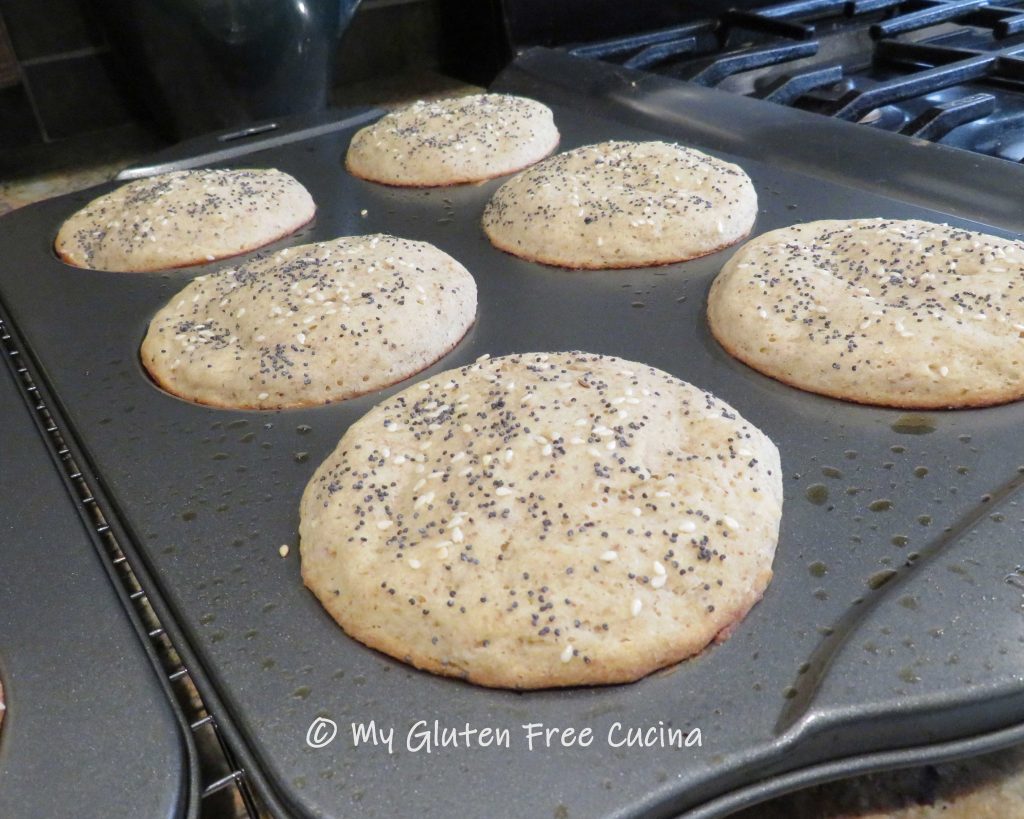
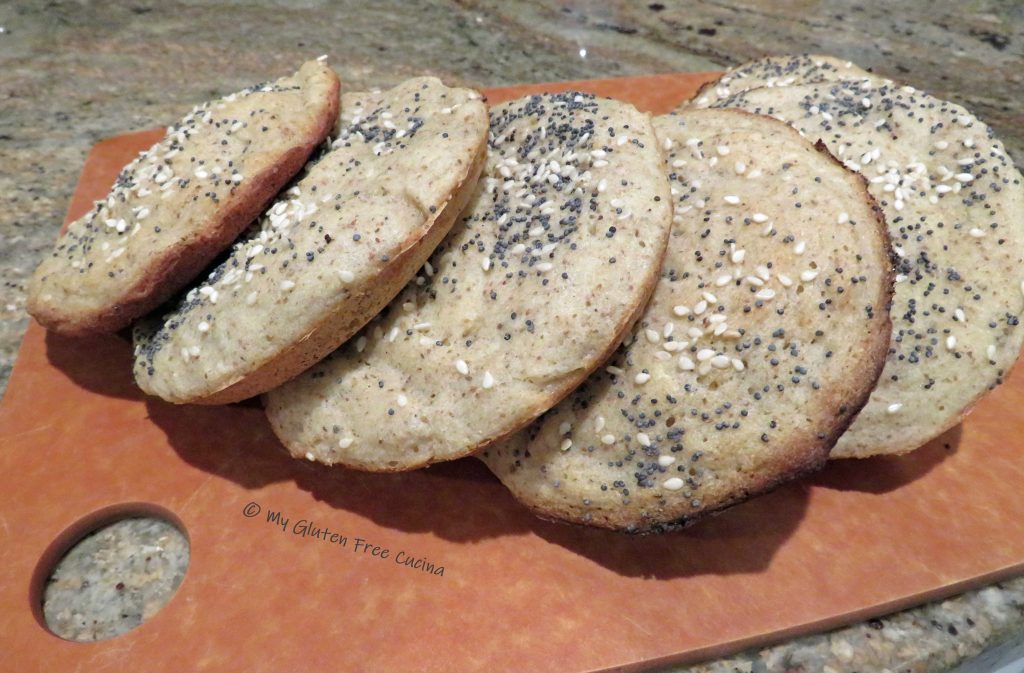
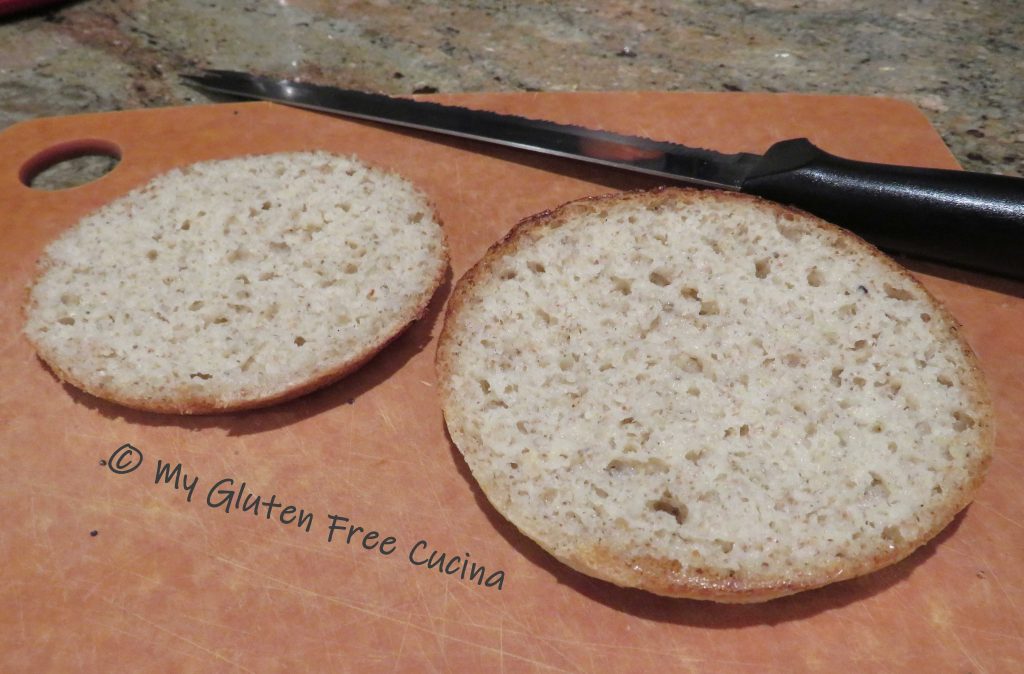
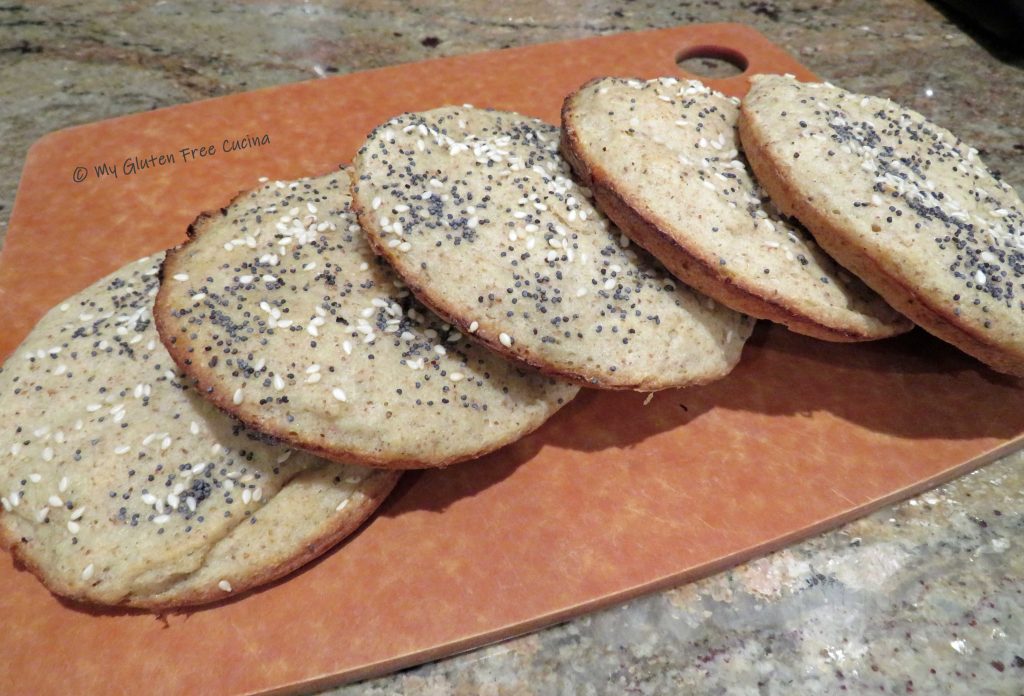
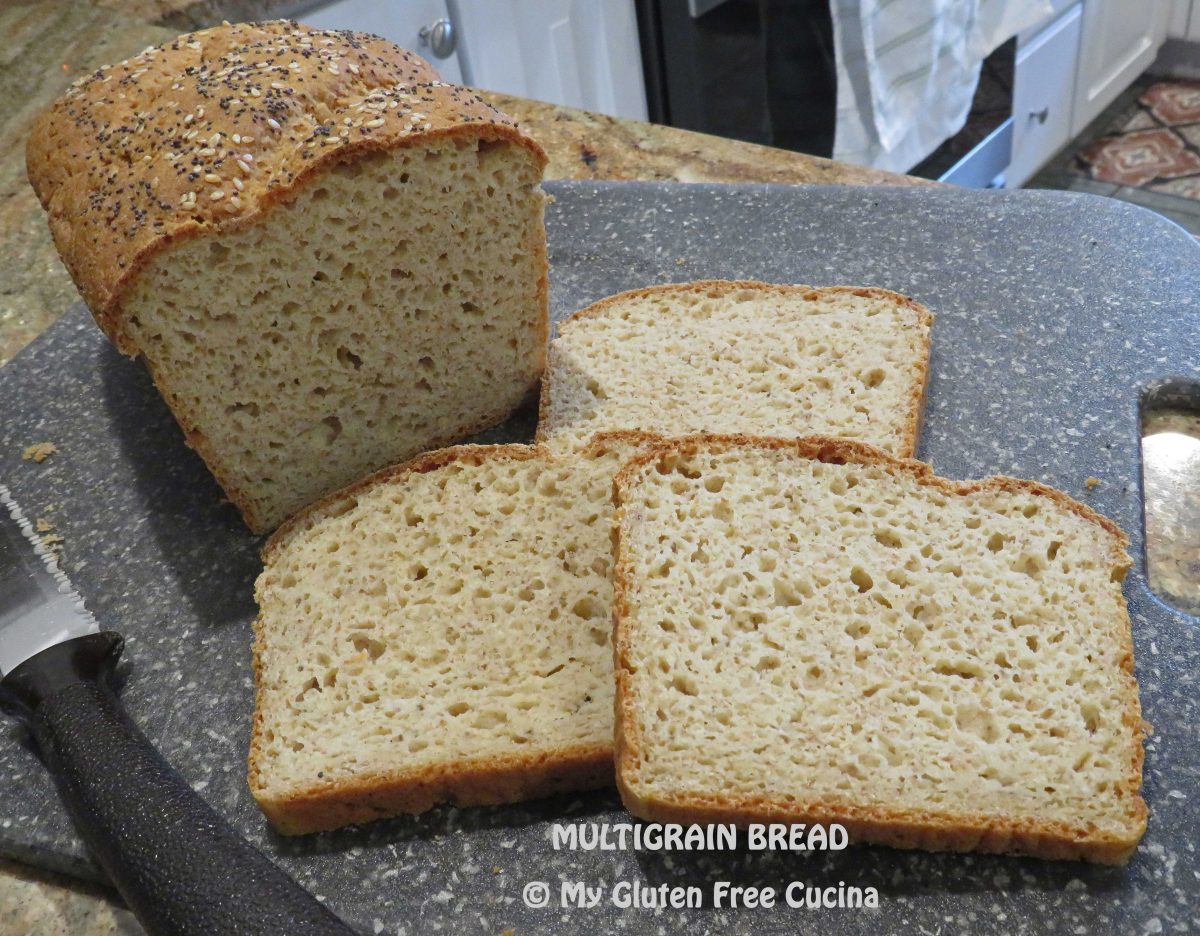
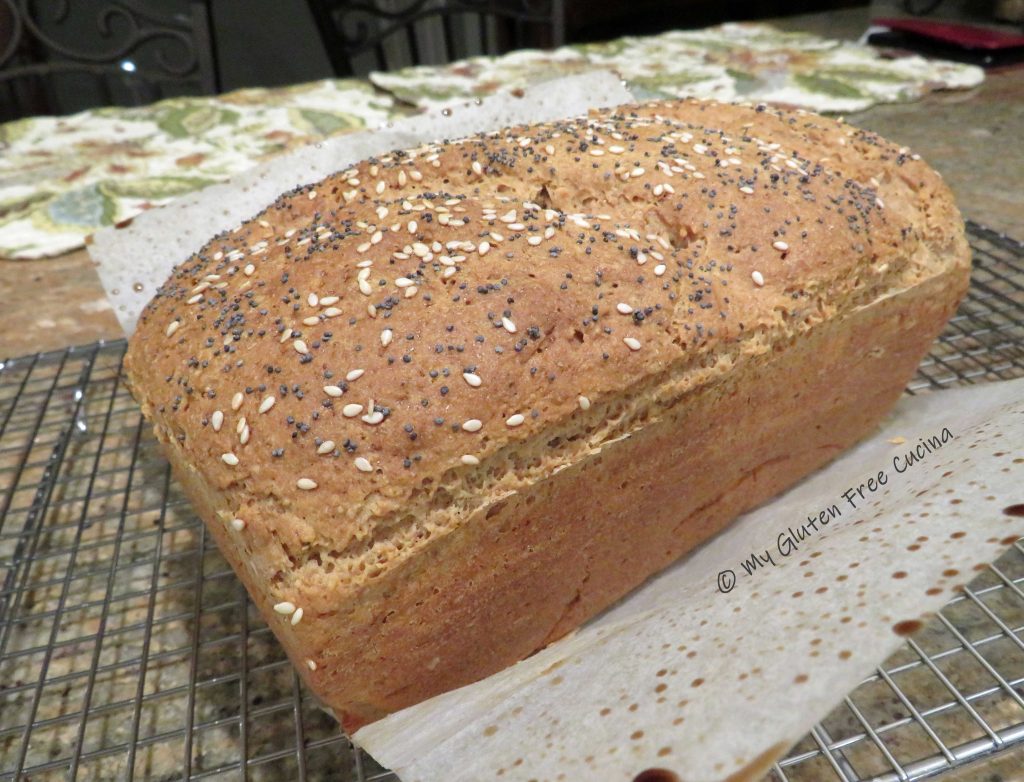
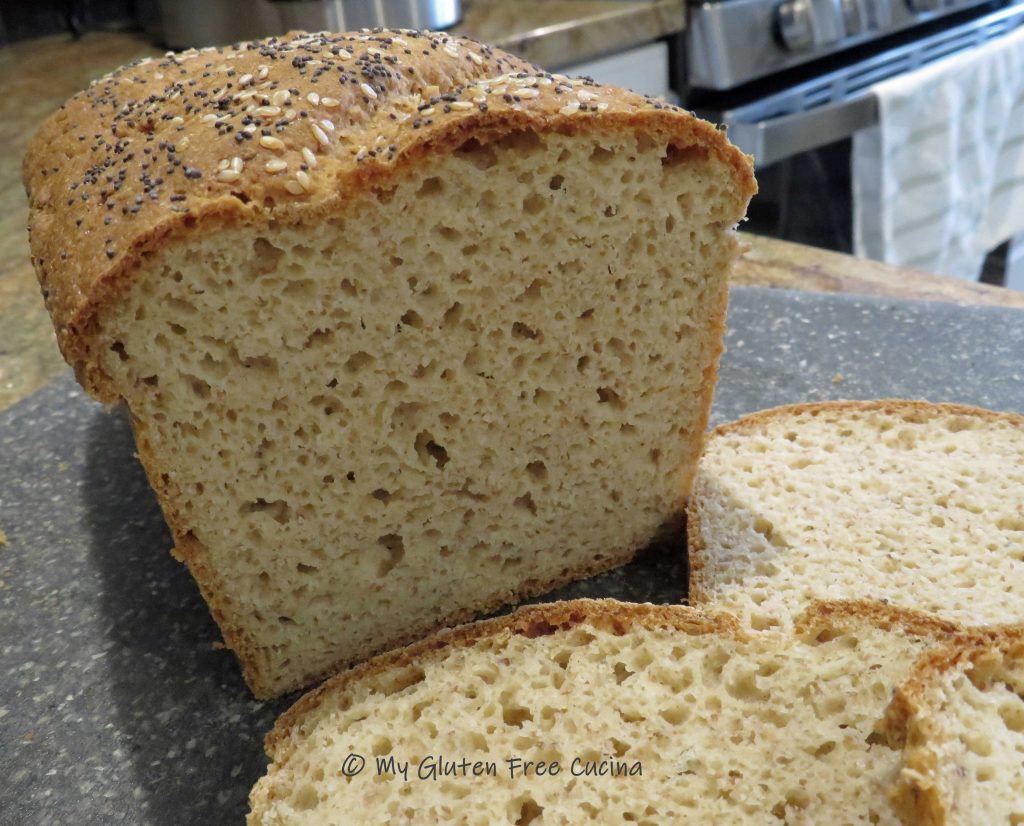
 Combine the yeast, ground chia seeds, sugar and 1/2 cup water in a small bowl or measuring cup. Let the mixture rest for 10 minutes.
Combine the yeast, ground chia seeds, sugar and 1/2 cup water in a small bowl or measuring cup. Let the mixture rest for 10 minutes.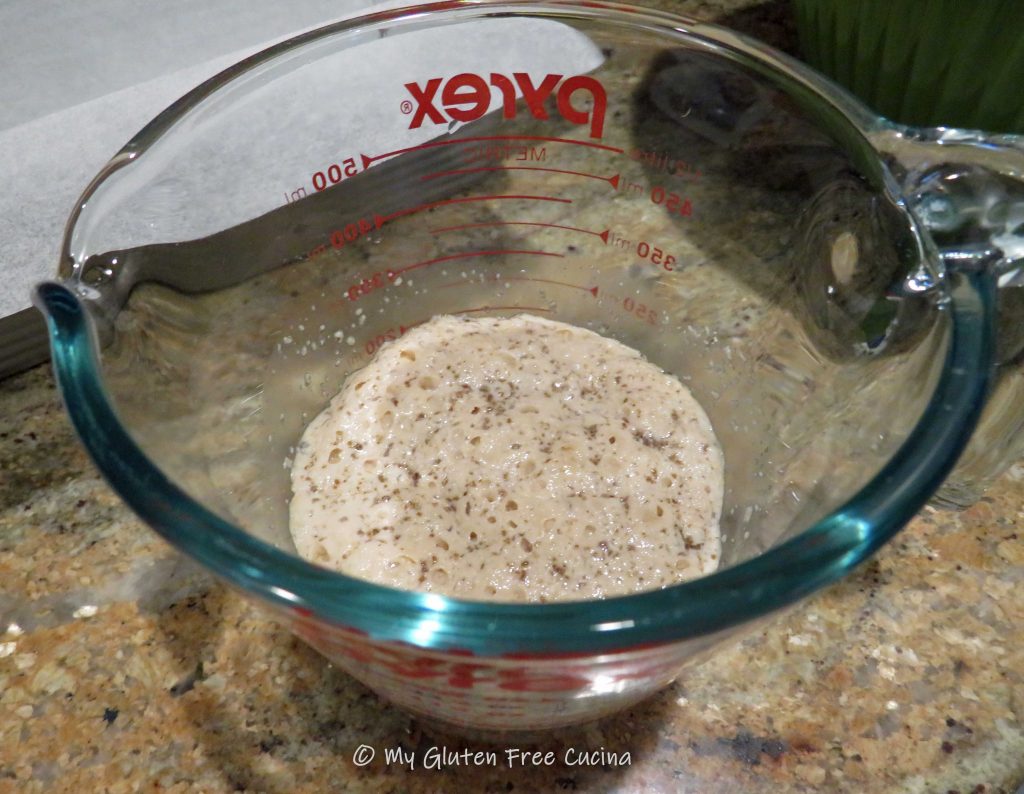
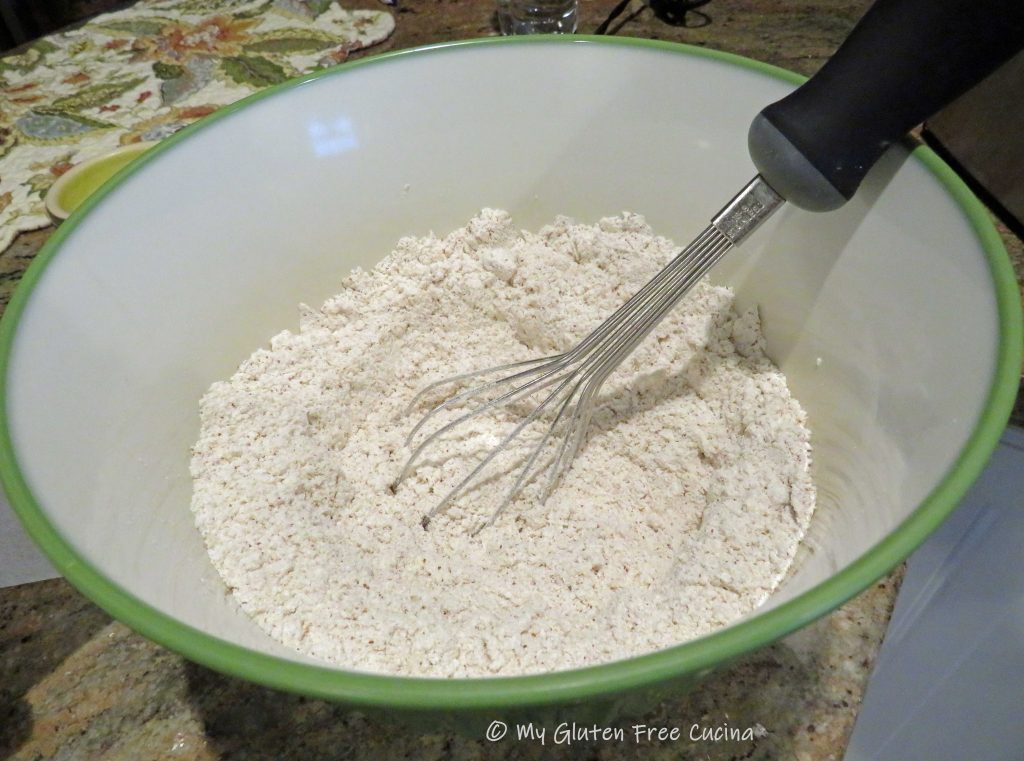
 Whisk it all together, and then add the dry ingredients into the wet. Mix for 5 minutes with the paddle attachment. The dough will be heavy and wet.
Whisk it all together, and then add the dry ingredients into the wet. Mix for 5 minutes with the paddle attachment. The dough will be heavy and wet.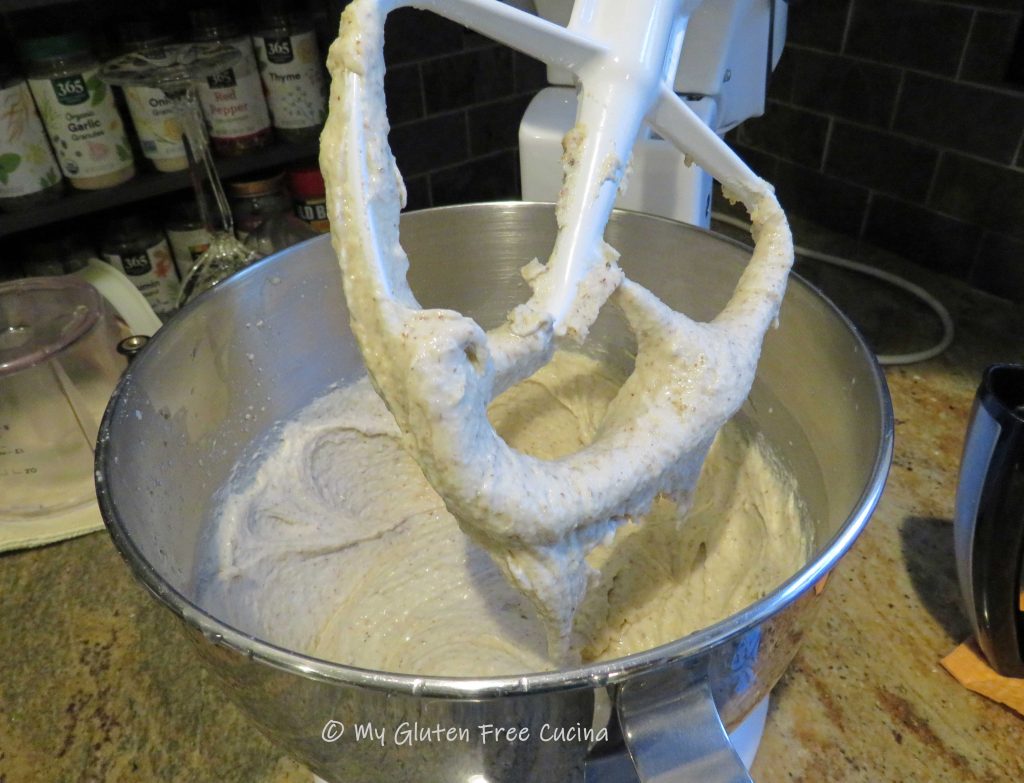
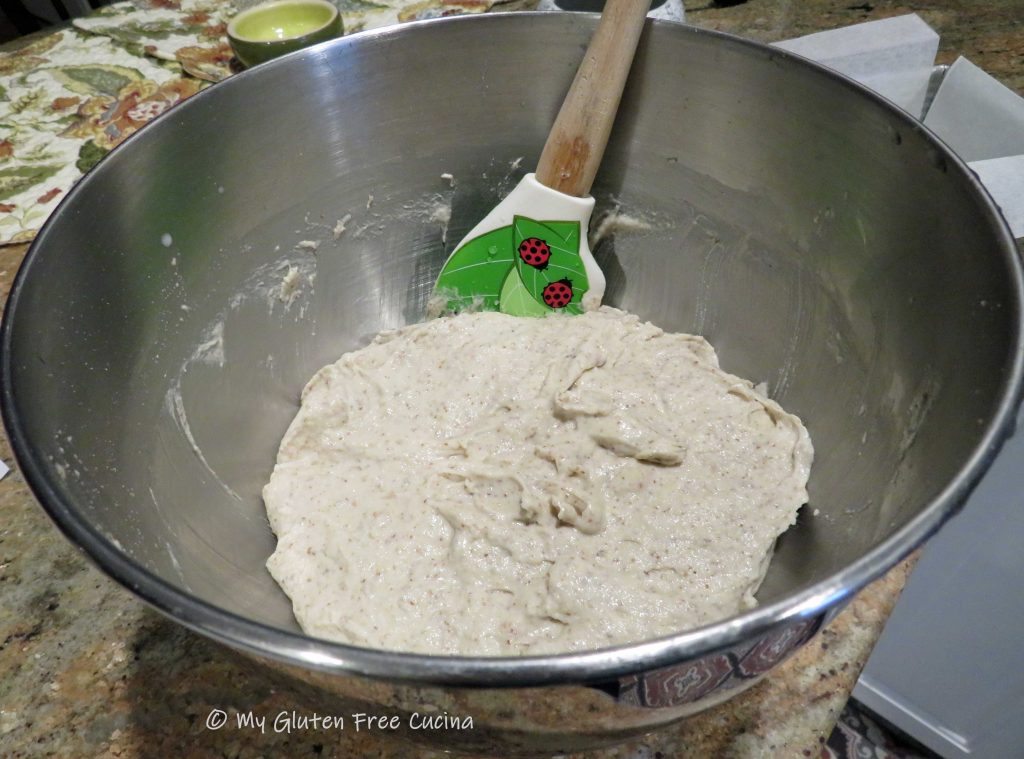 Scrape the dough into the prepared pan, smoothing out the top with a spatula dipped in water.
Scrape the dough into the prepared pan, smoothing out the top with a spatula dipped in water.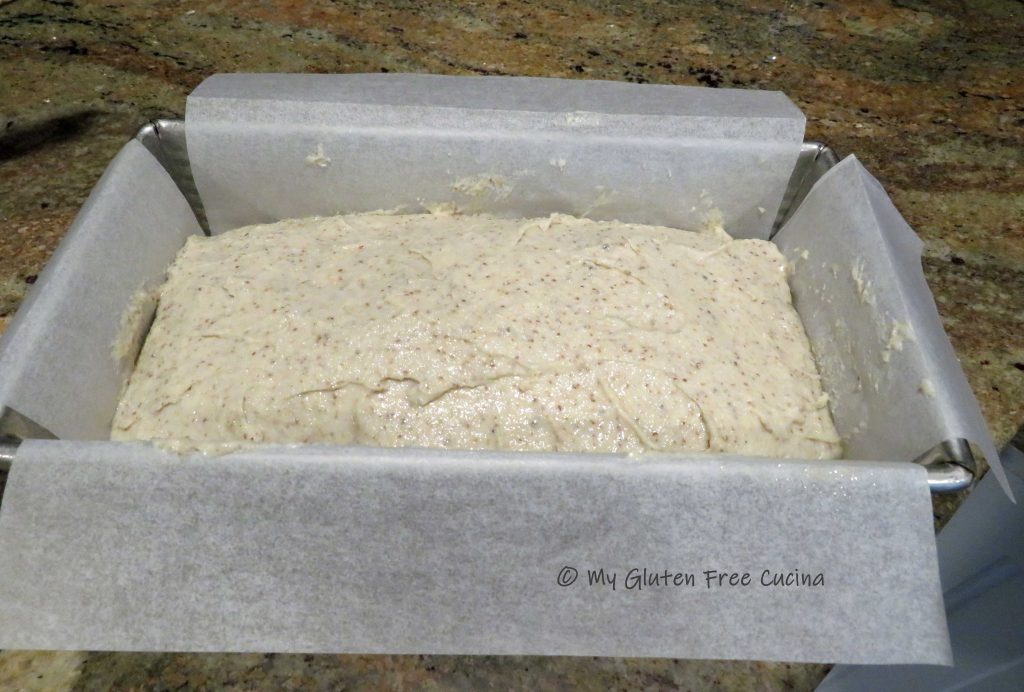
 Quickly make 2 diagonal slashes across the top of the loaf with a sharp knife.
Quickly make 2 diagonal slashes across the top of the loaf with a sharp knife.

 Cool to room temperature, then
Cool to room temperature, then 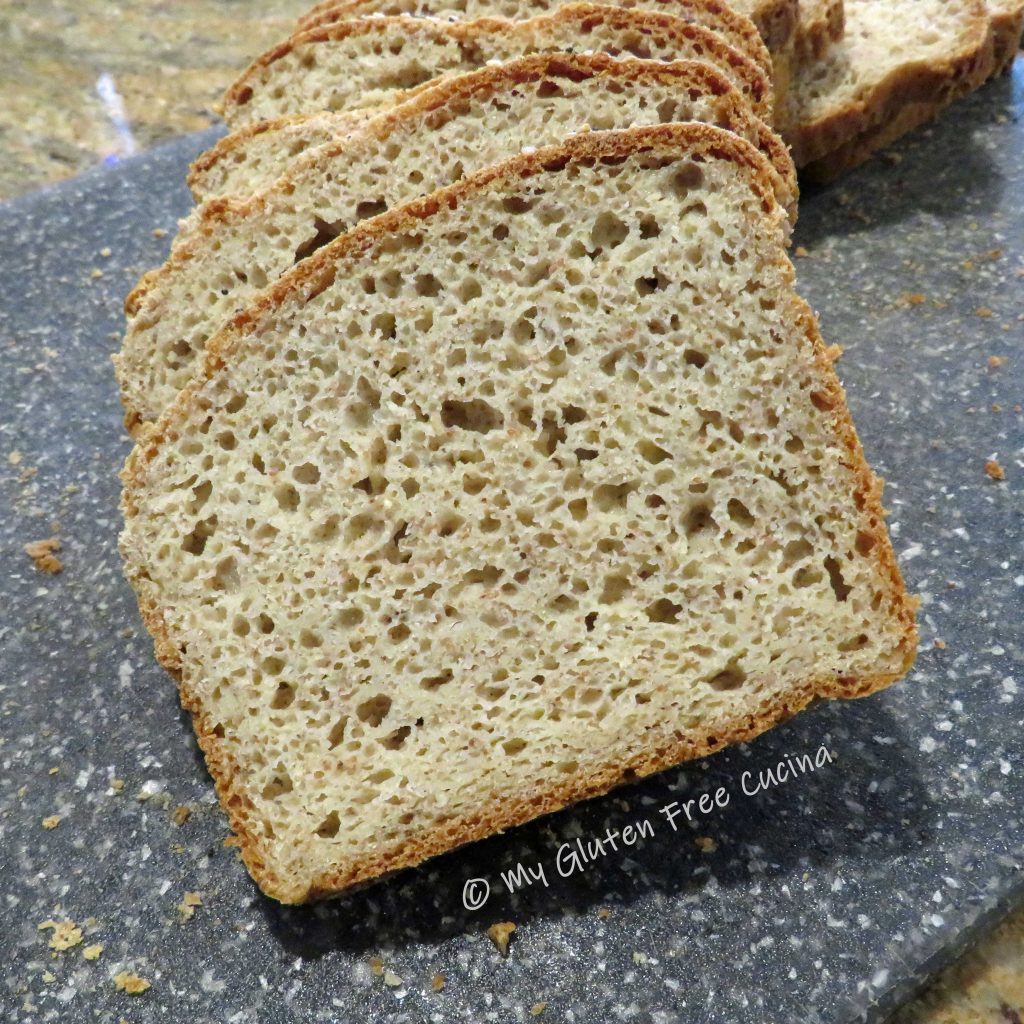
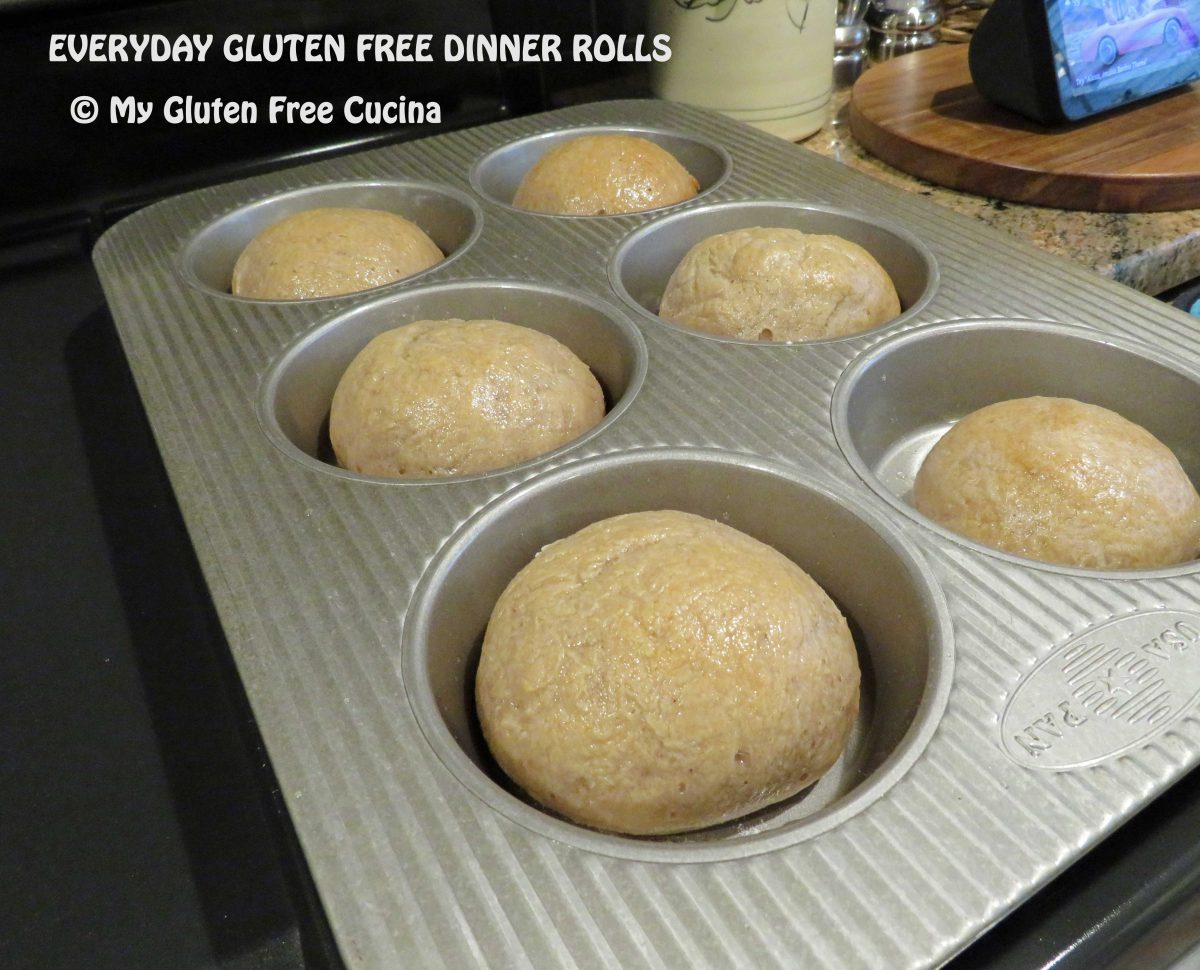

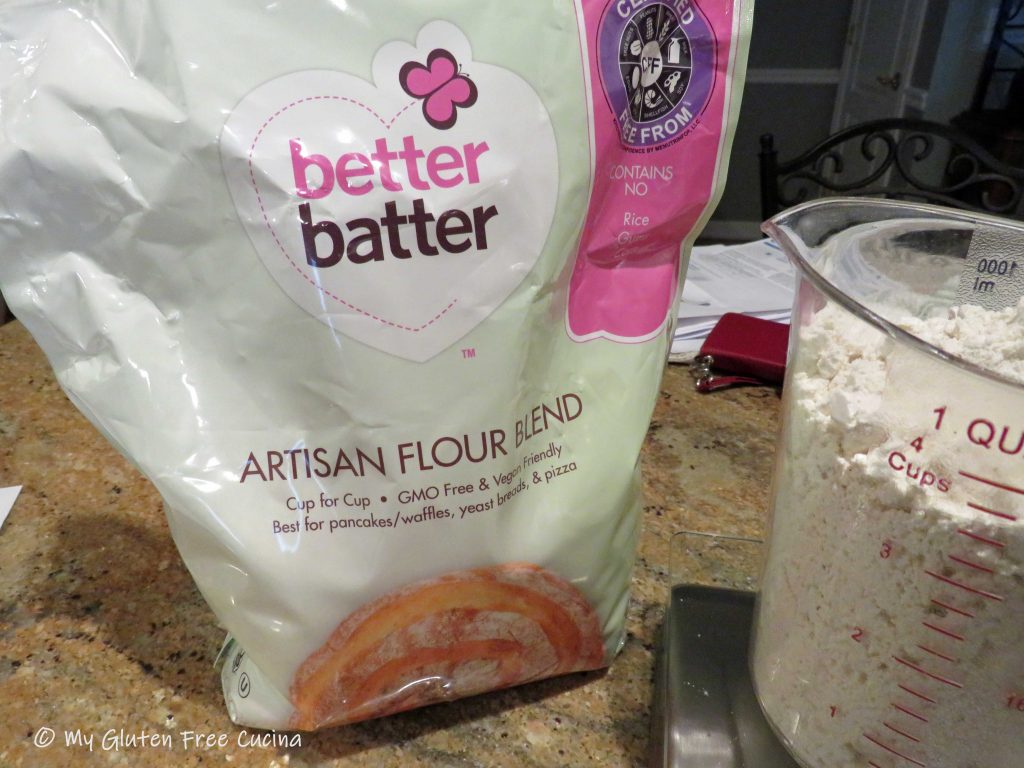
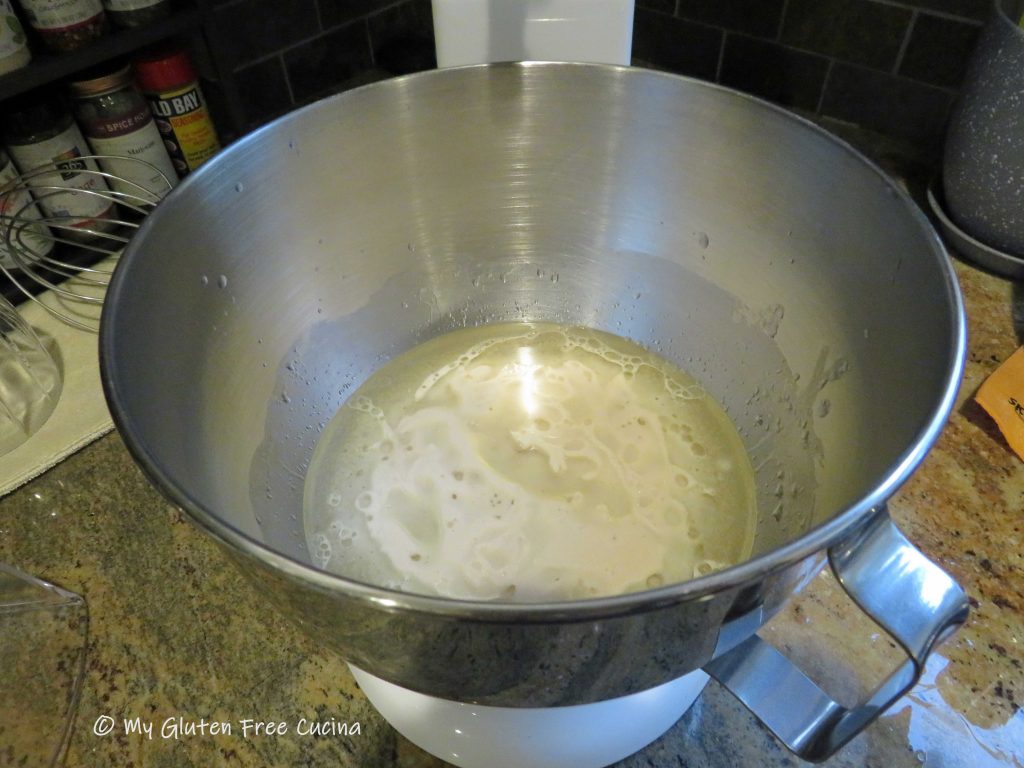
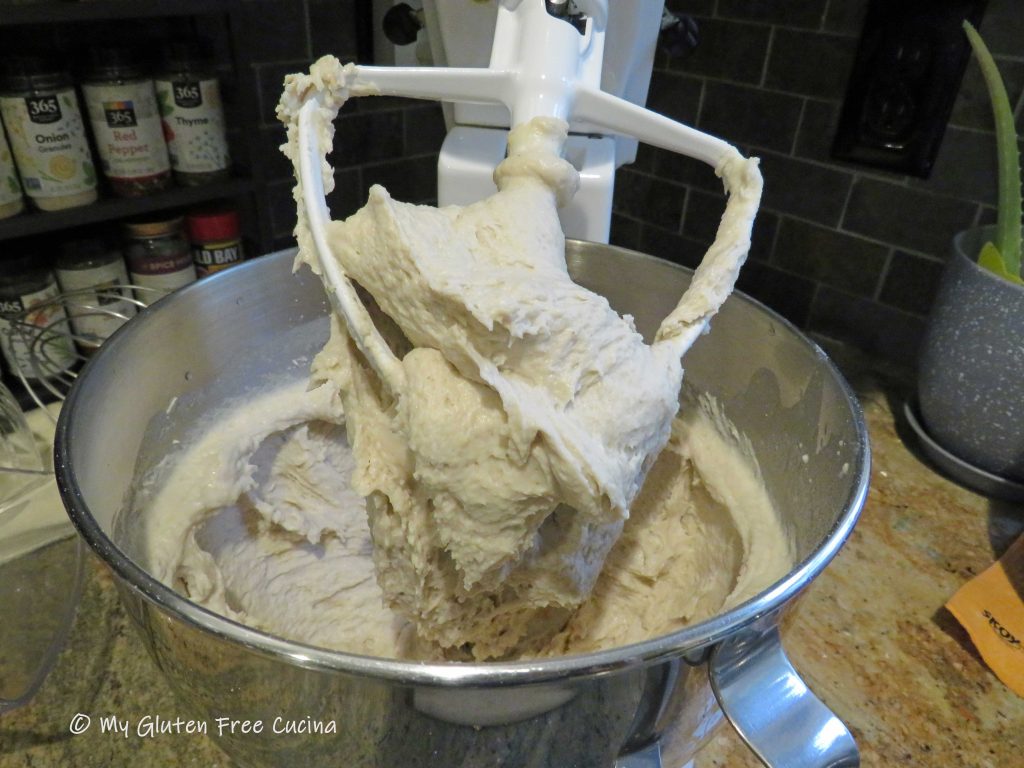
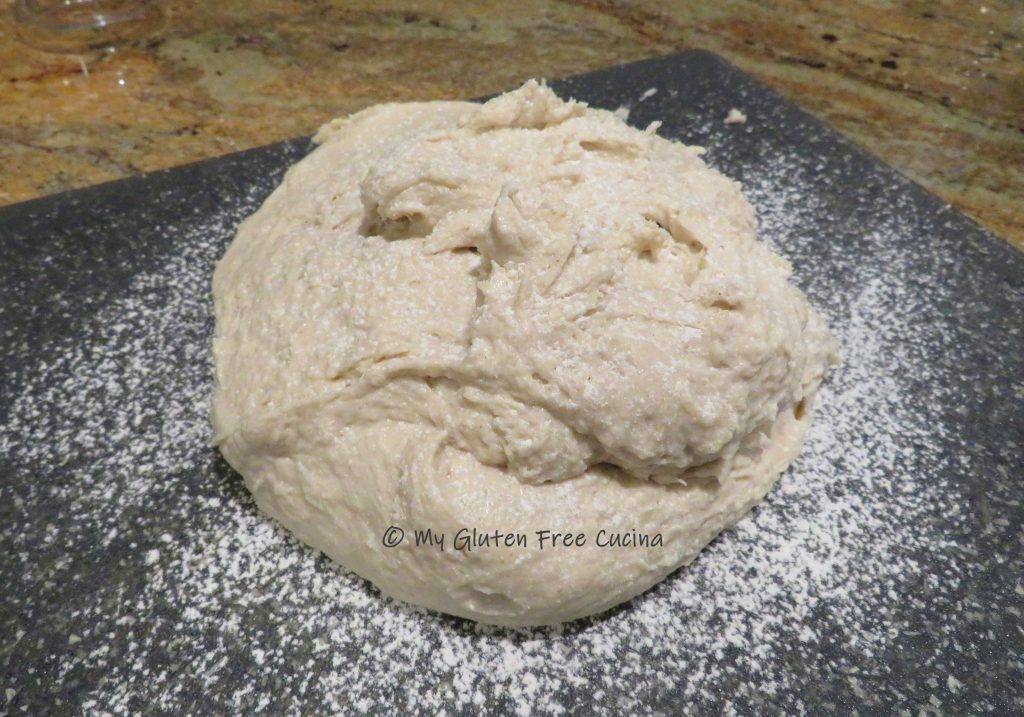
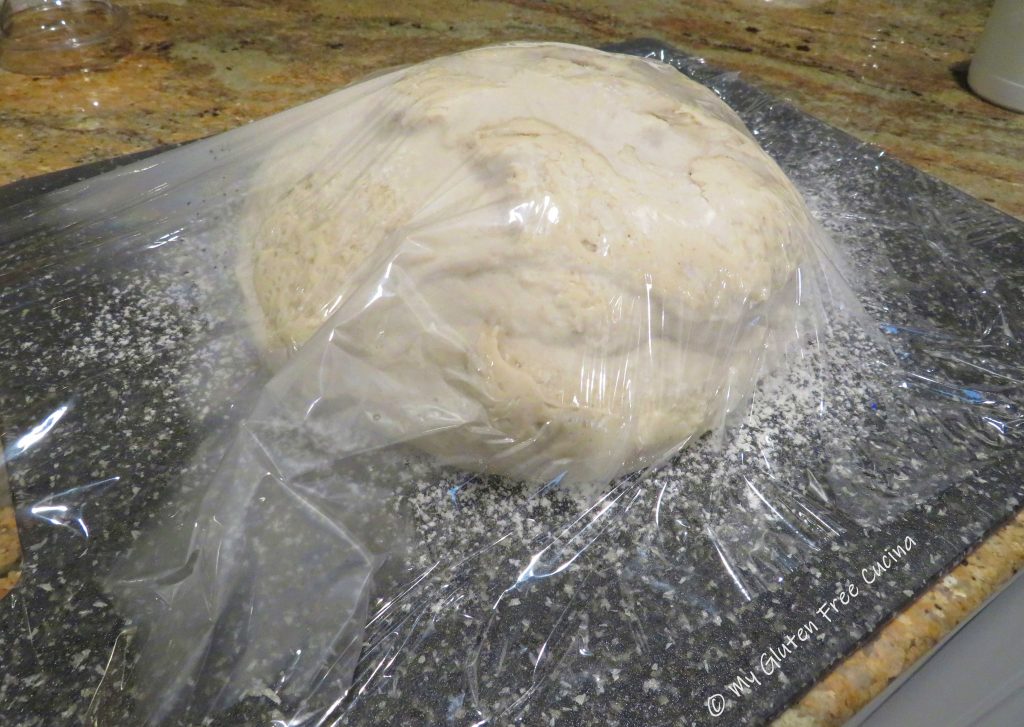
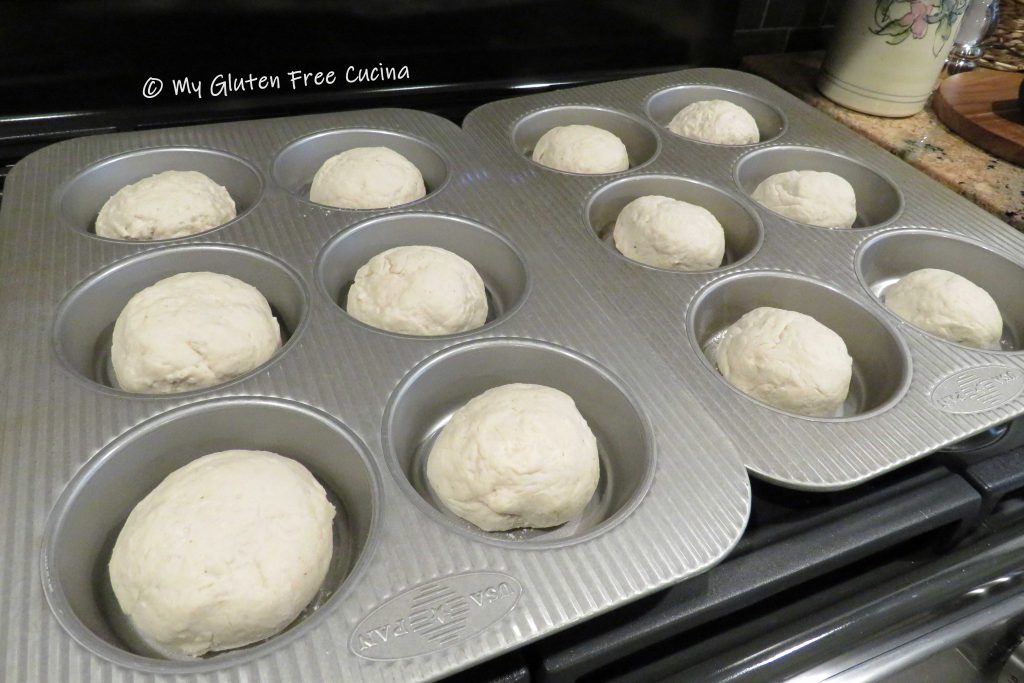
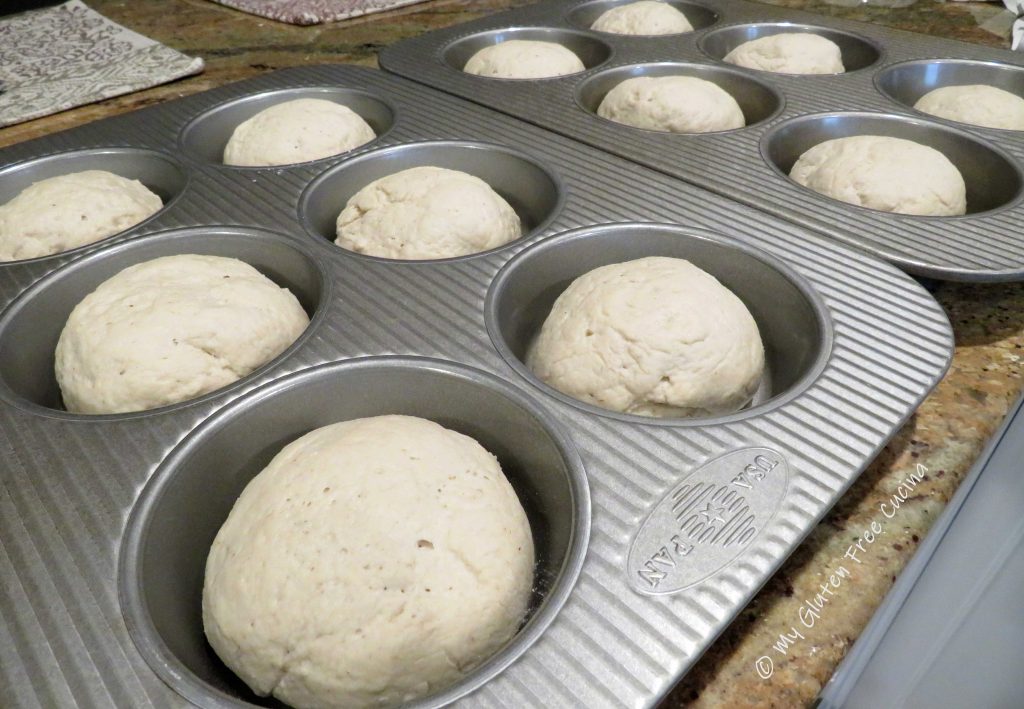
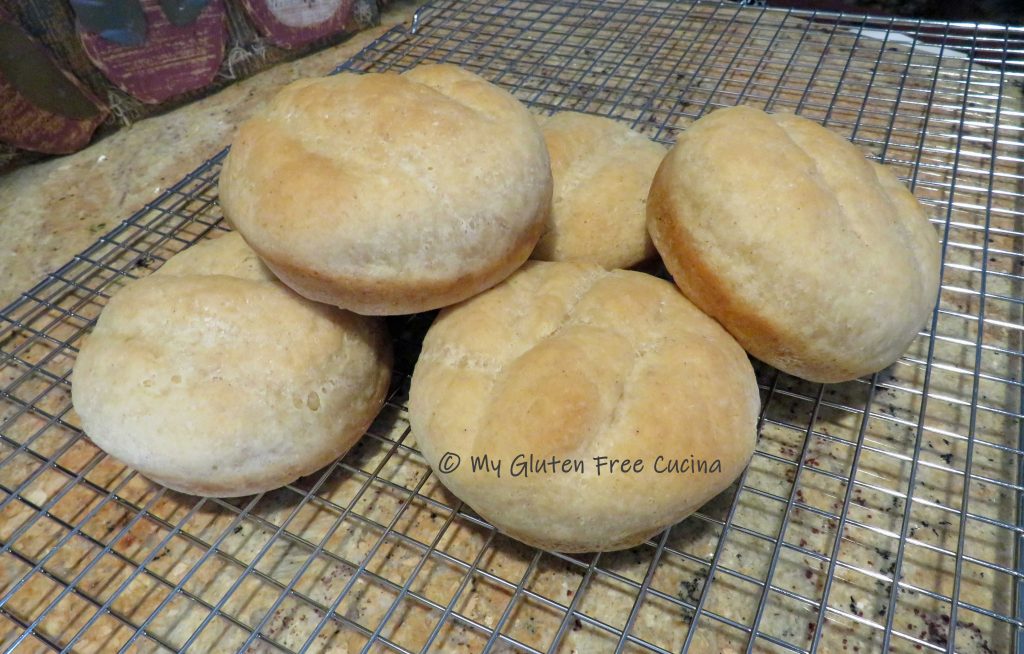

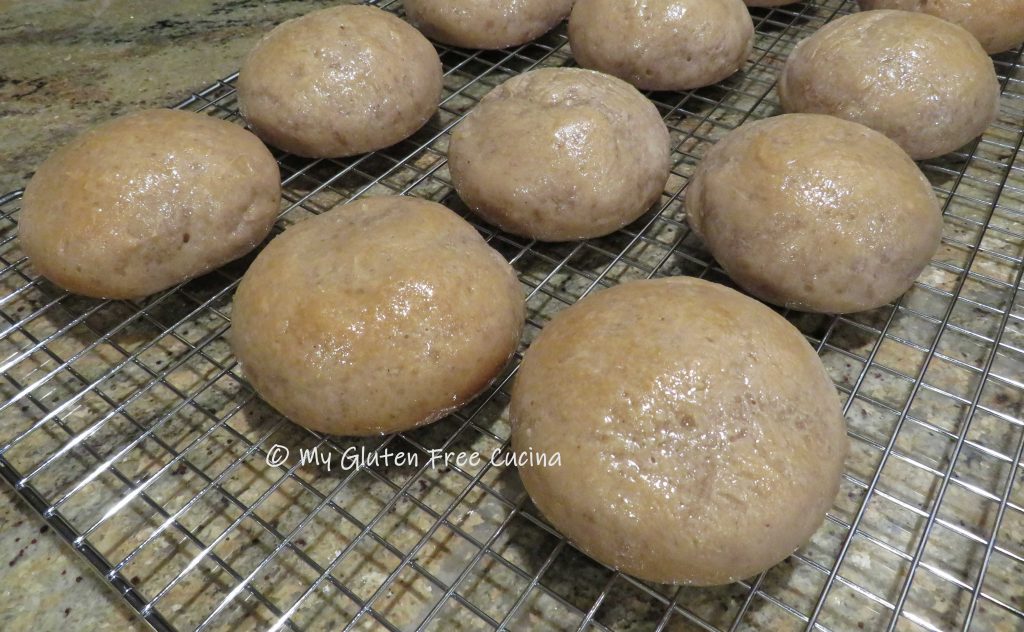 Cool to room temperature and store on the counter for up to 1 day, then freeze leftovers.
Cool to room temperature and store on the counter for up to 1 day, then freeze leftovers.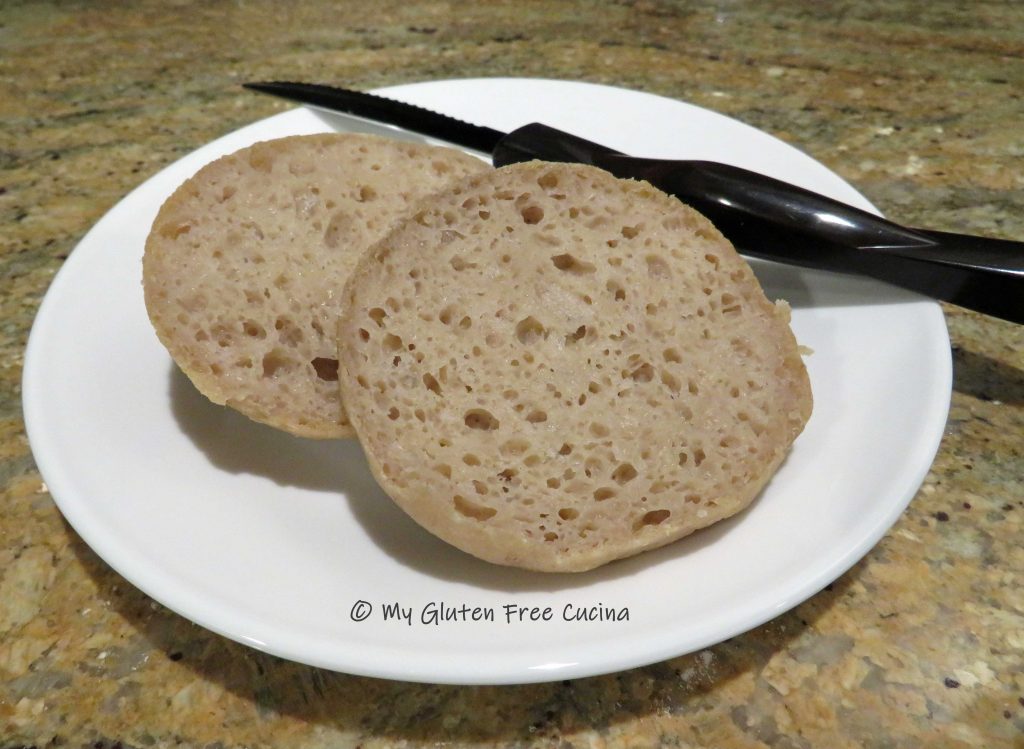
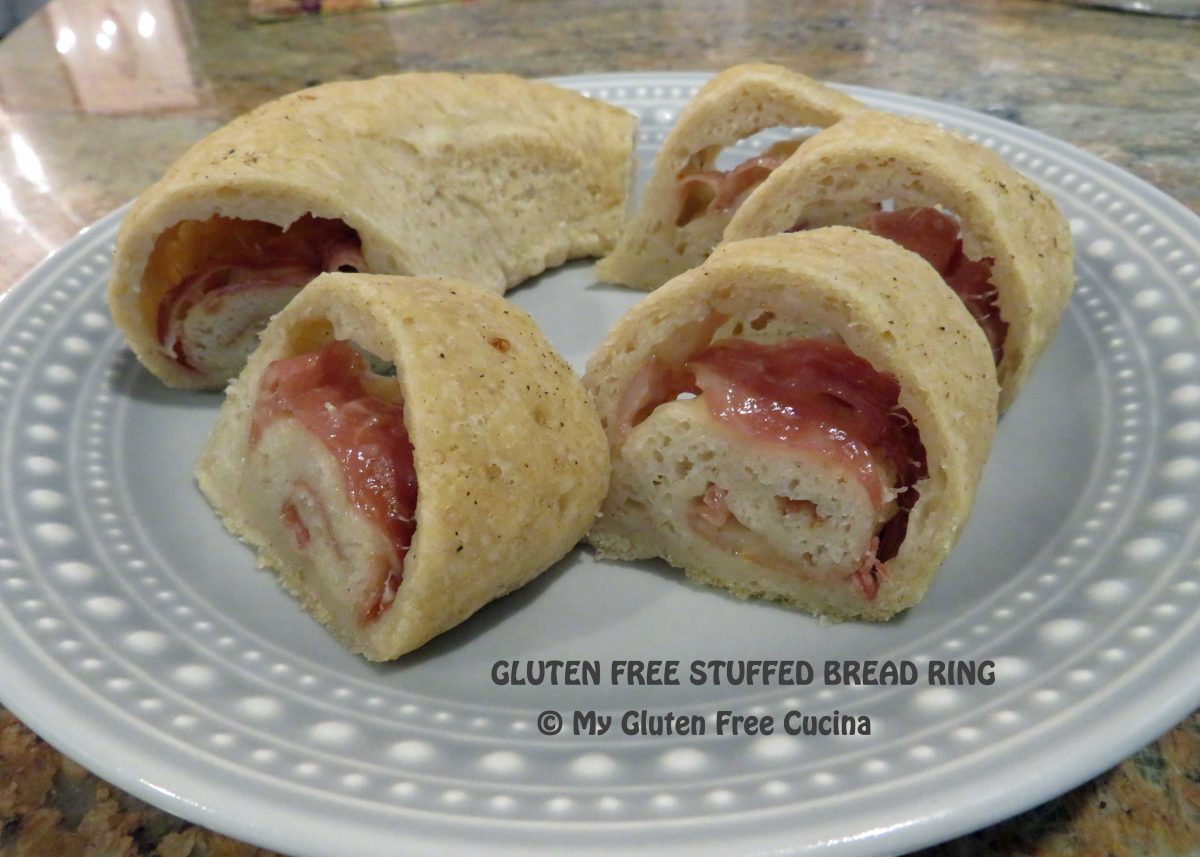
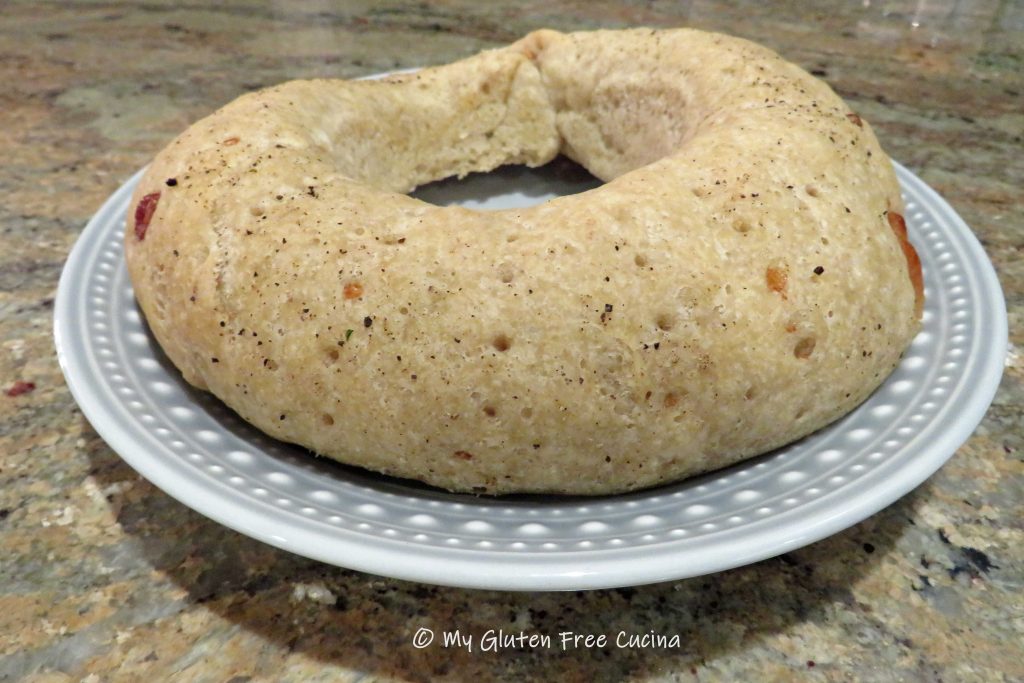

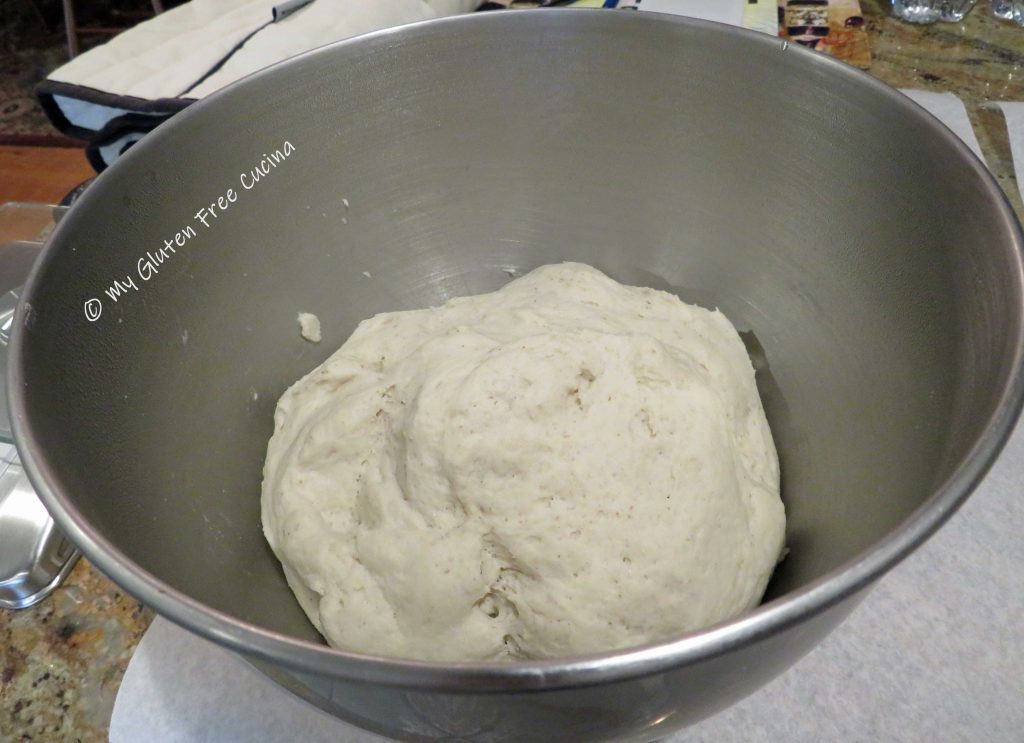

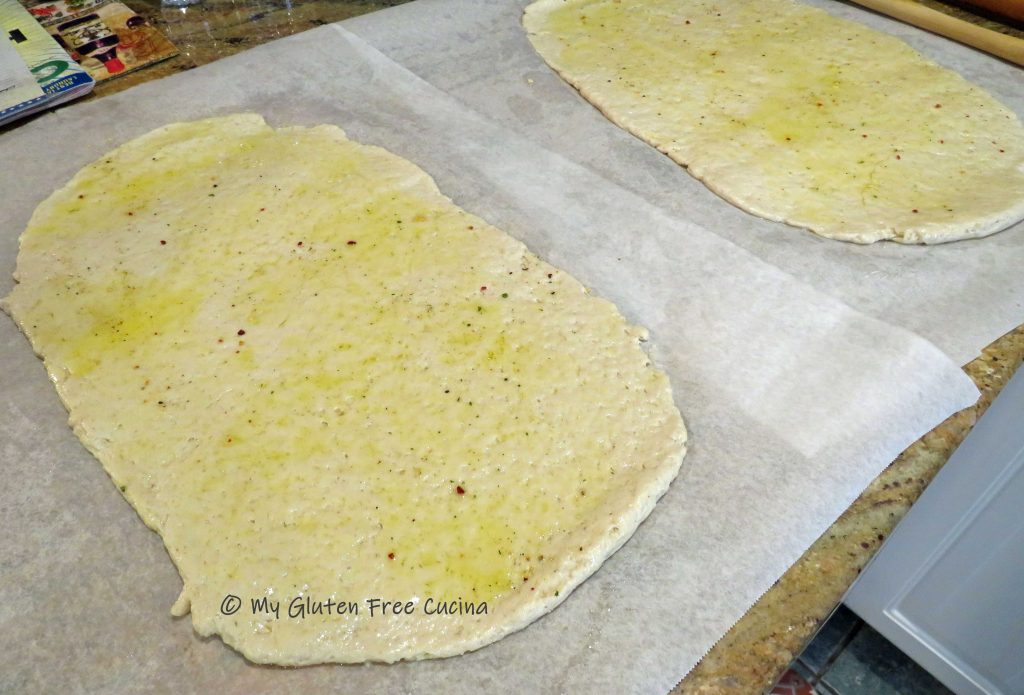
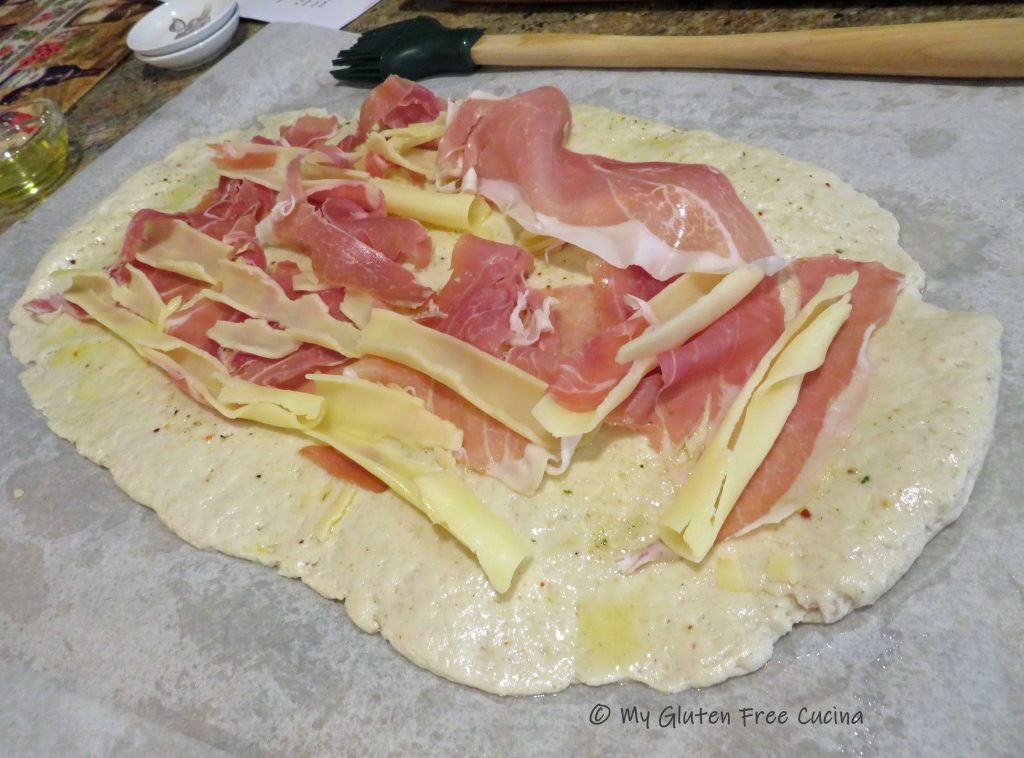
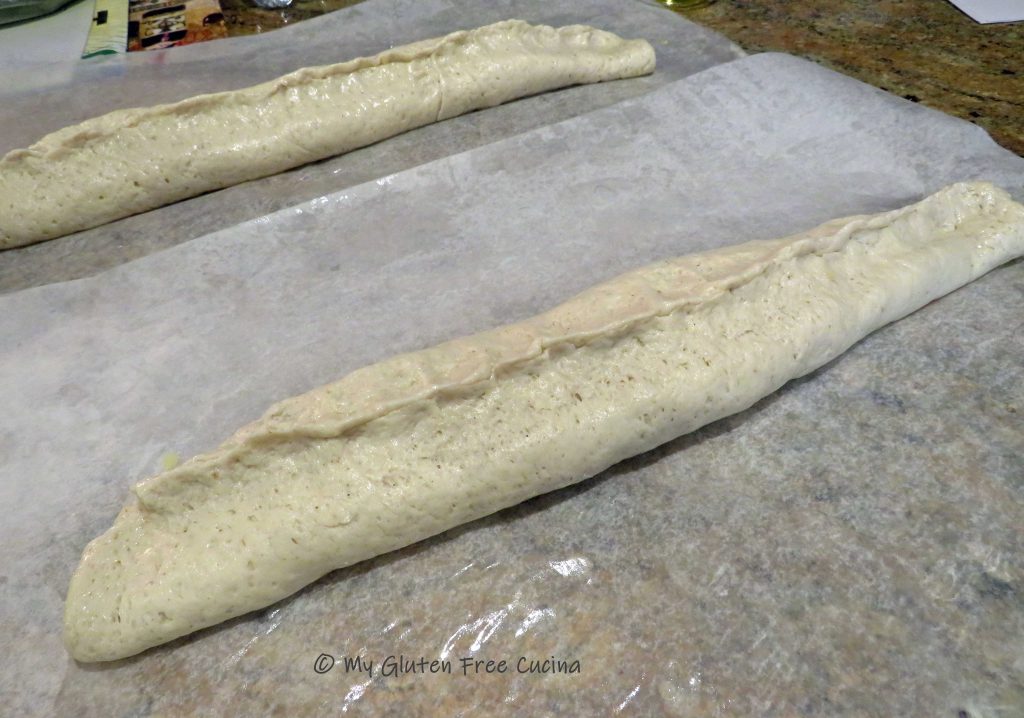

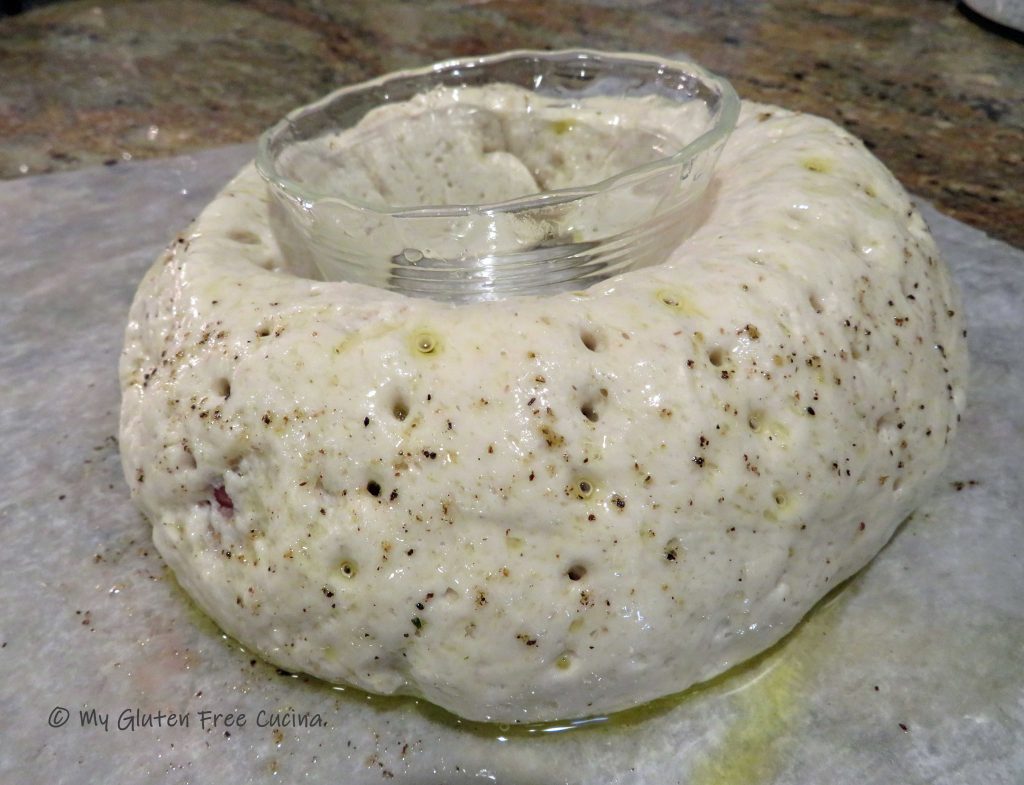
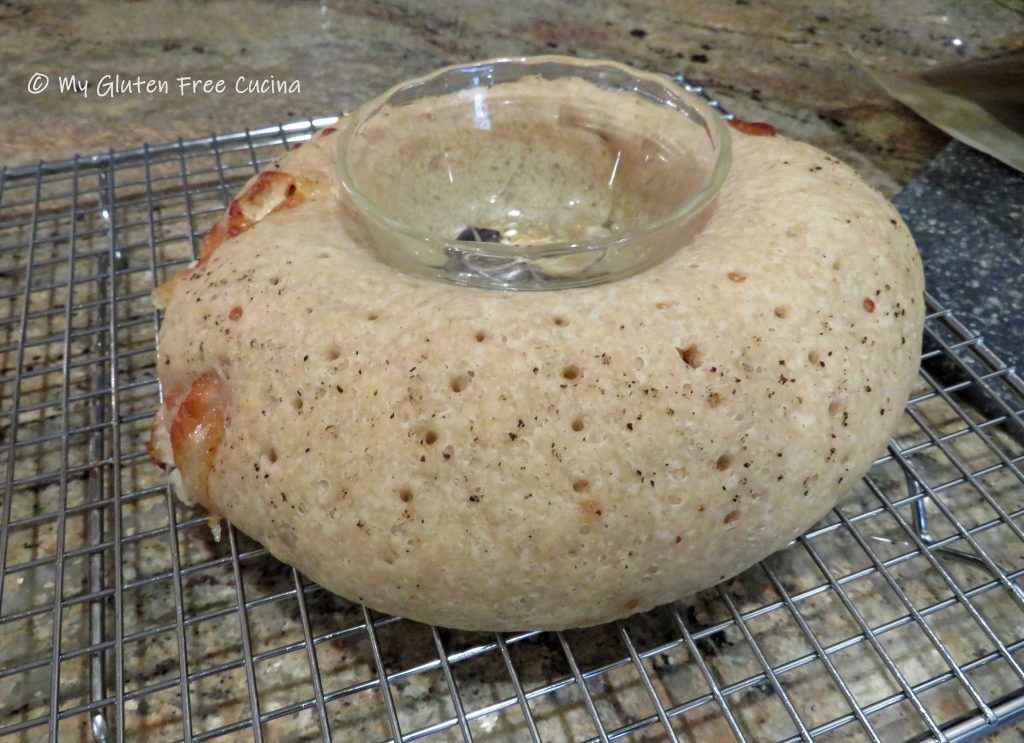 Cool on a rack for at least 15 minutes before attempting to remove the Pyrex bowls (they will be very hot). You may need to run a paring knife around the edges to loosen the bowls.
Cool on a rack for at least 15 minutes before attempting to remove the Pyrex bowls (they will be very hot). You may need to run a paring knife around the edges to loosen the bowls.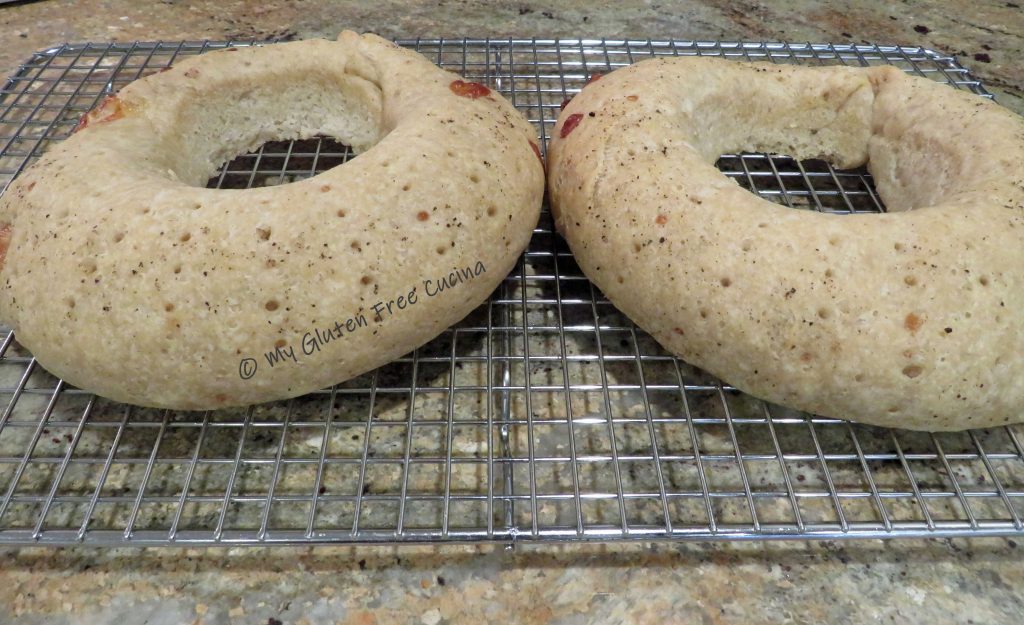
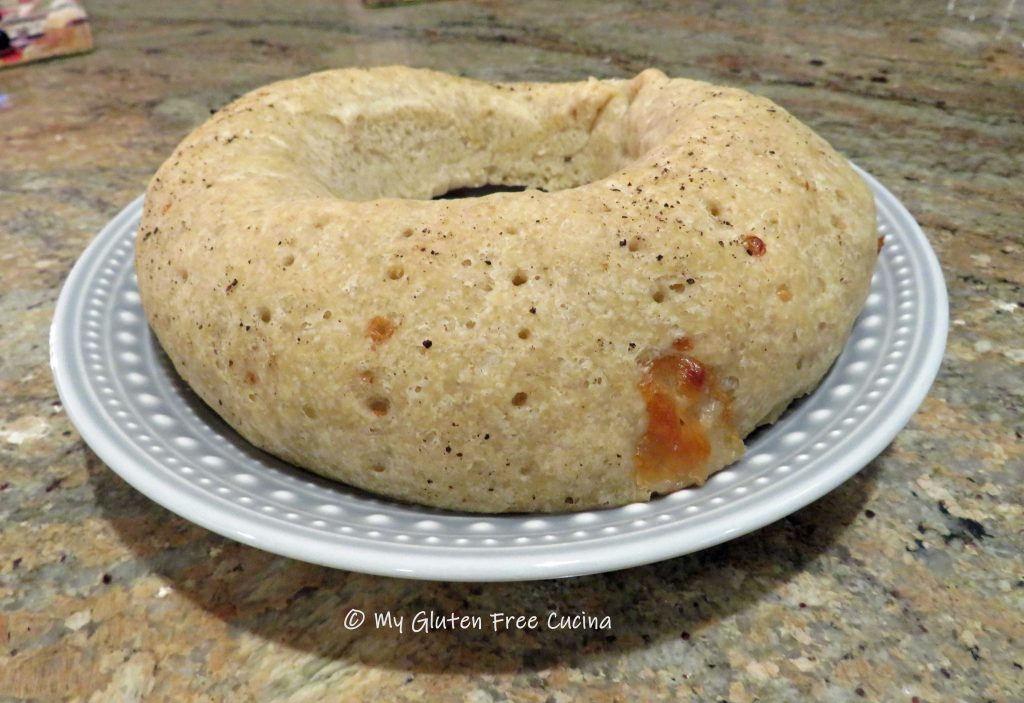

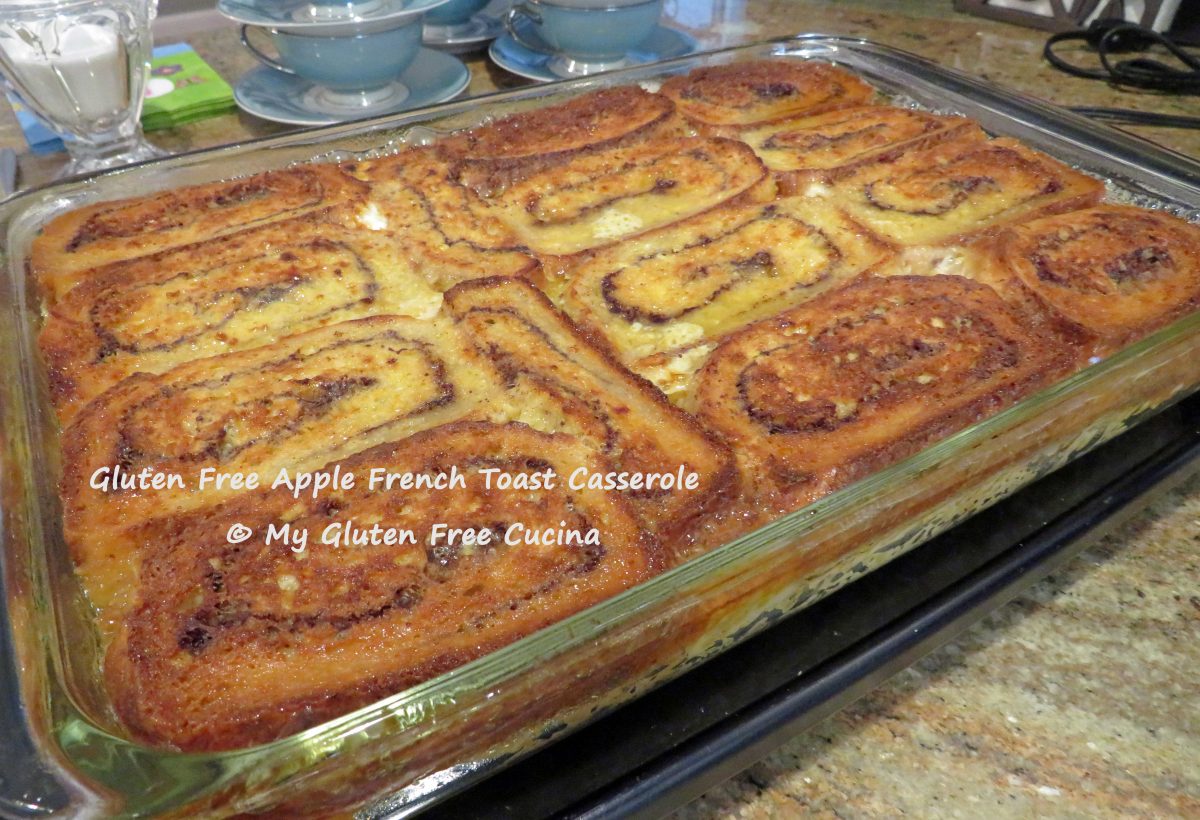

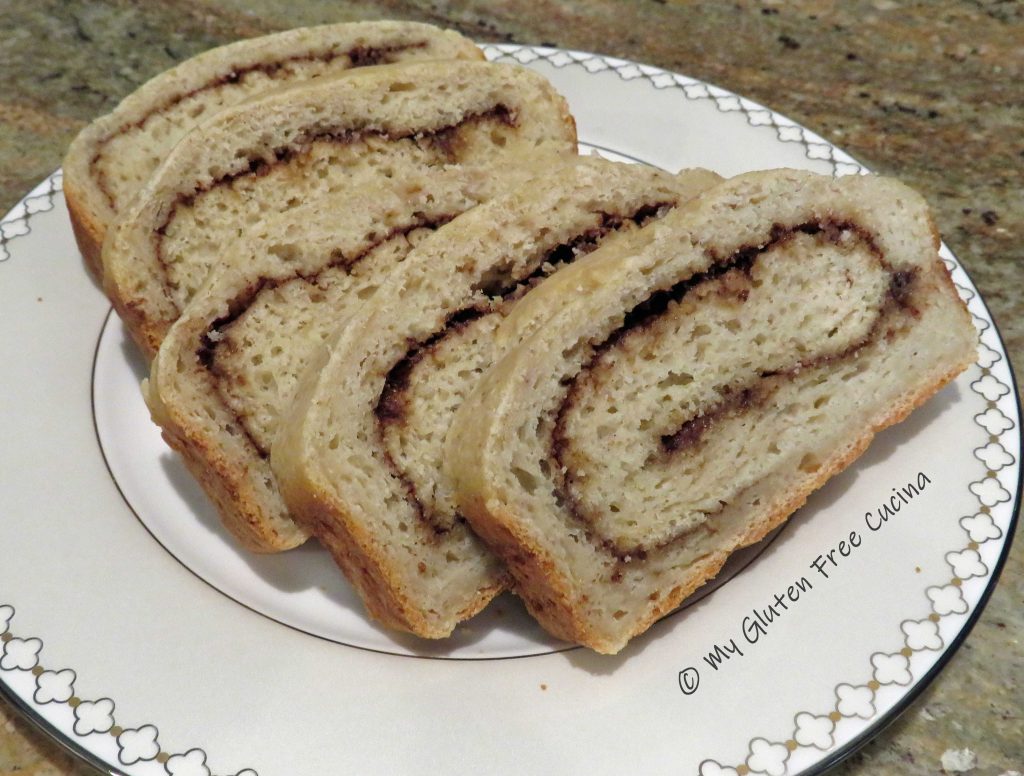

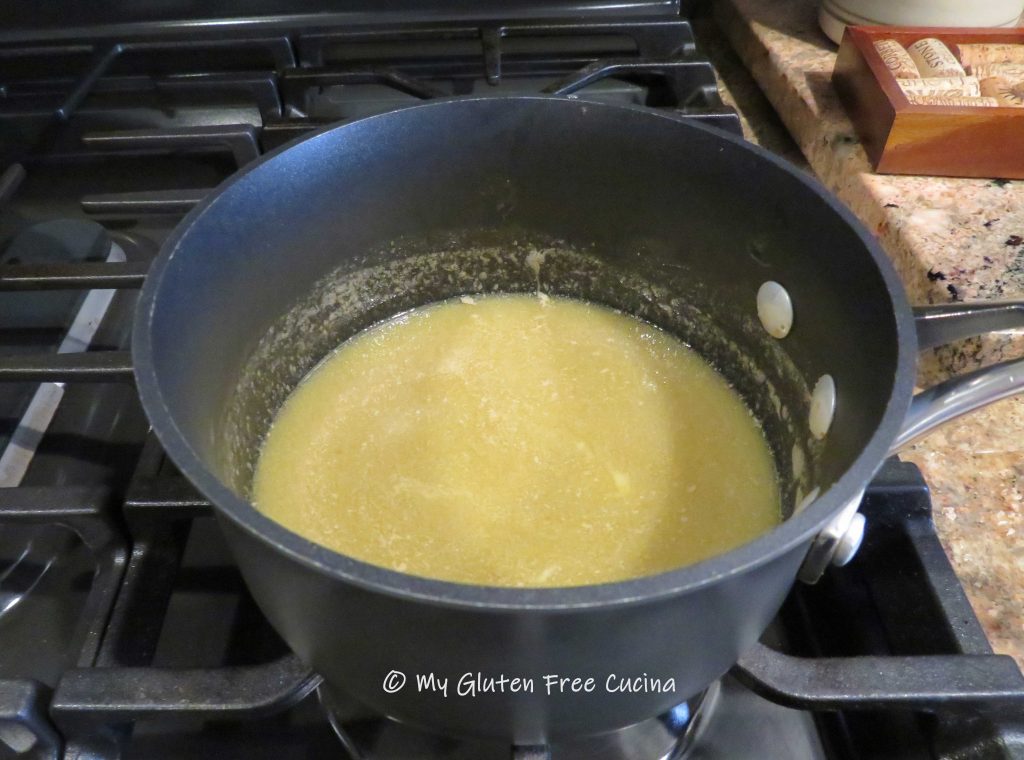
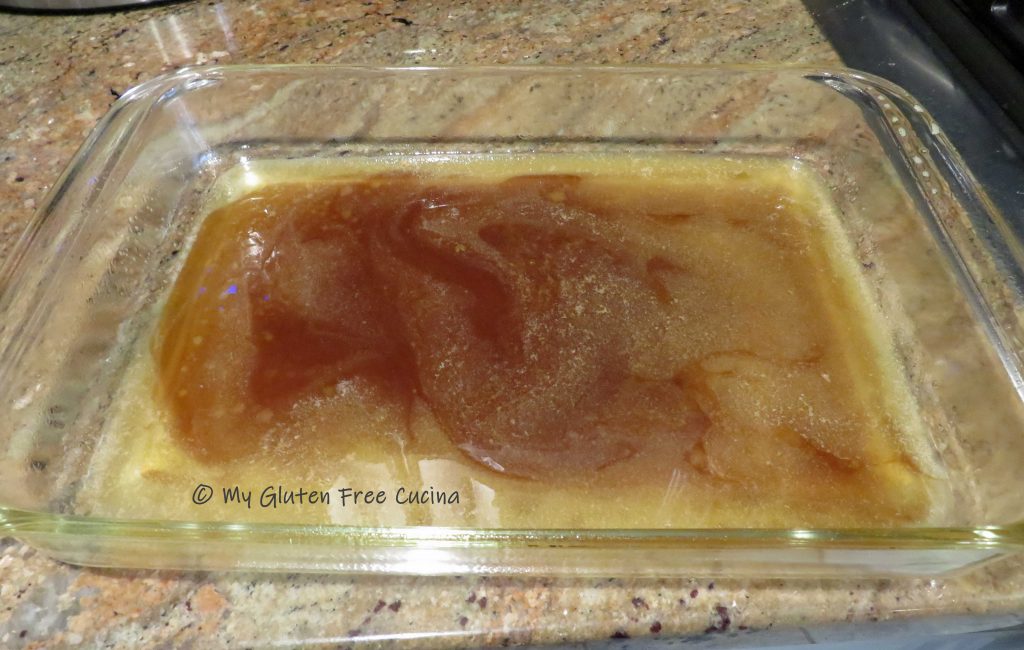
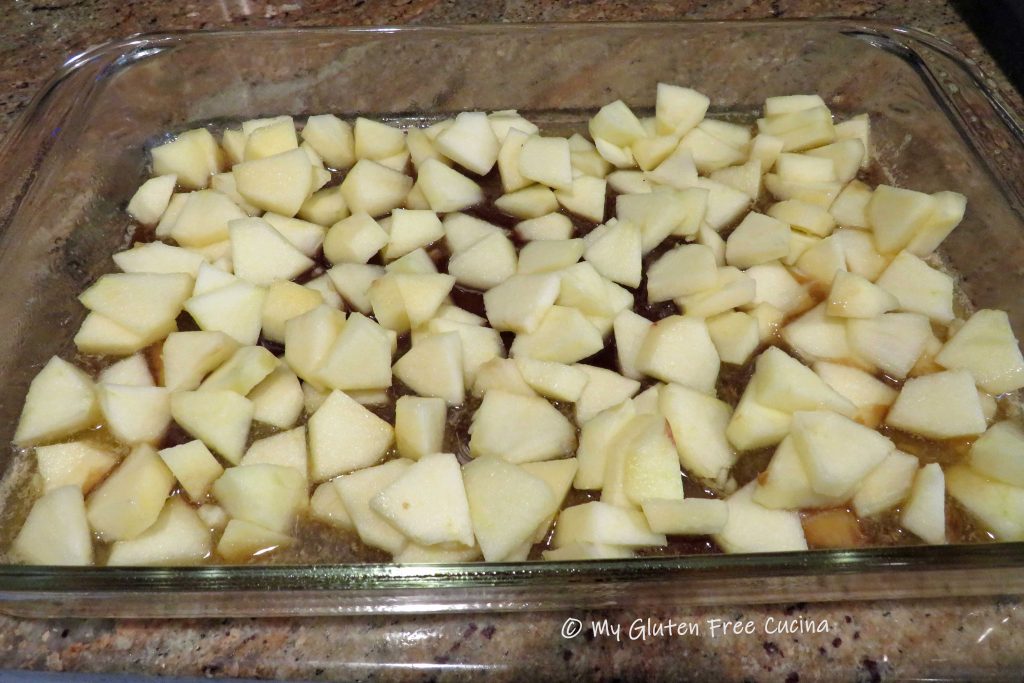

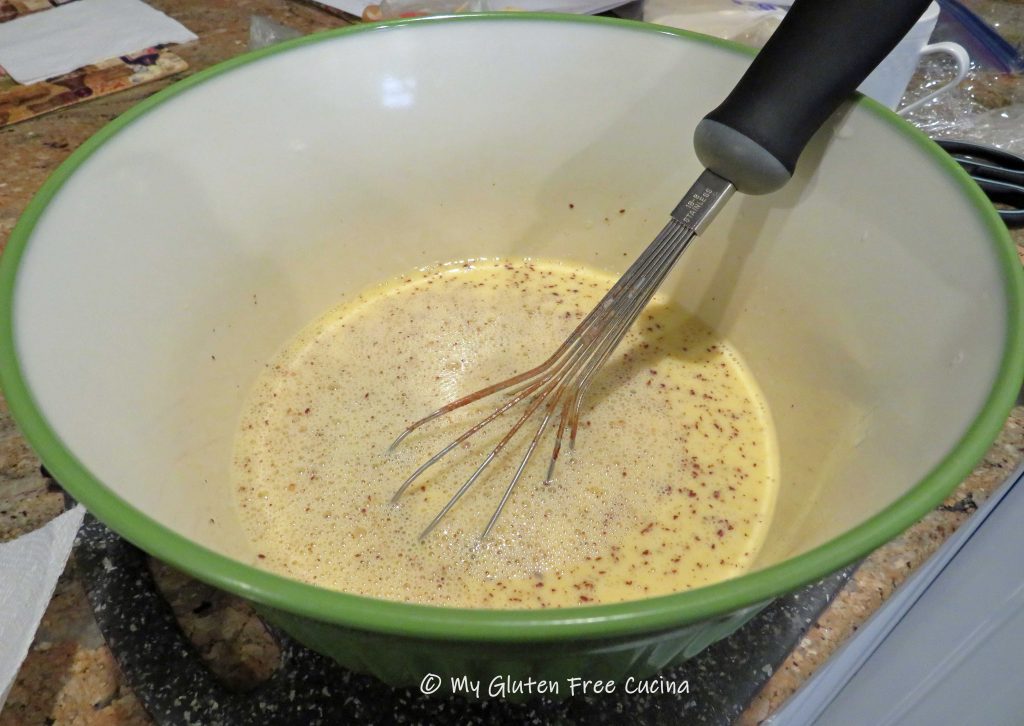 Pour the egg mixture over the bread slices and press down with a spatula.
Pour the egg mixture over the bread slices and press down with a spatula.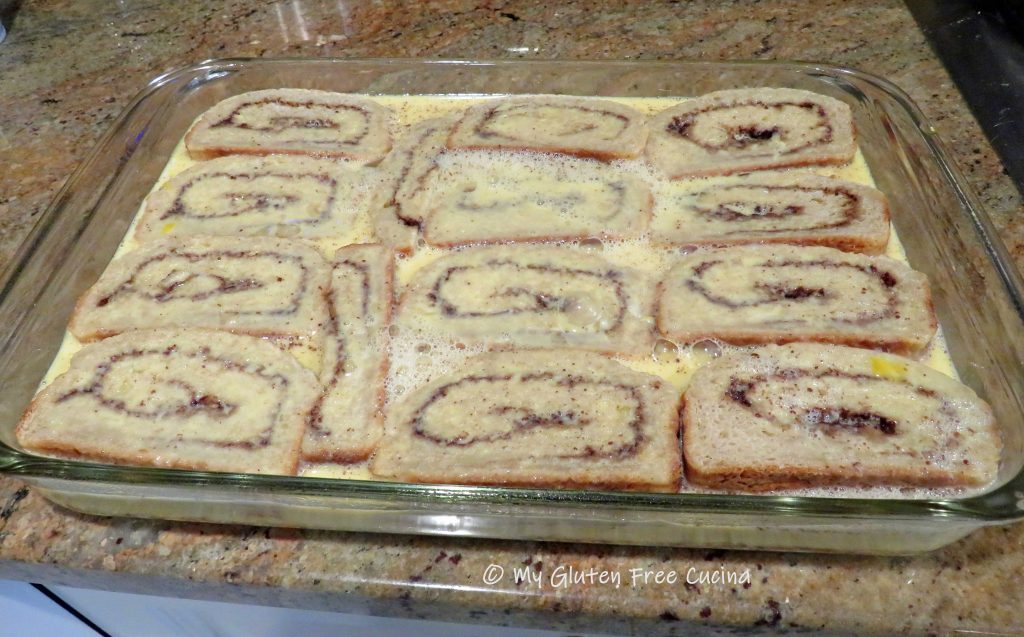
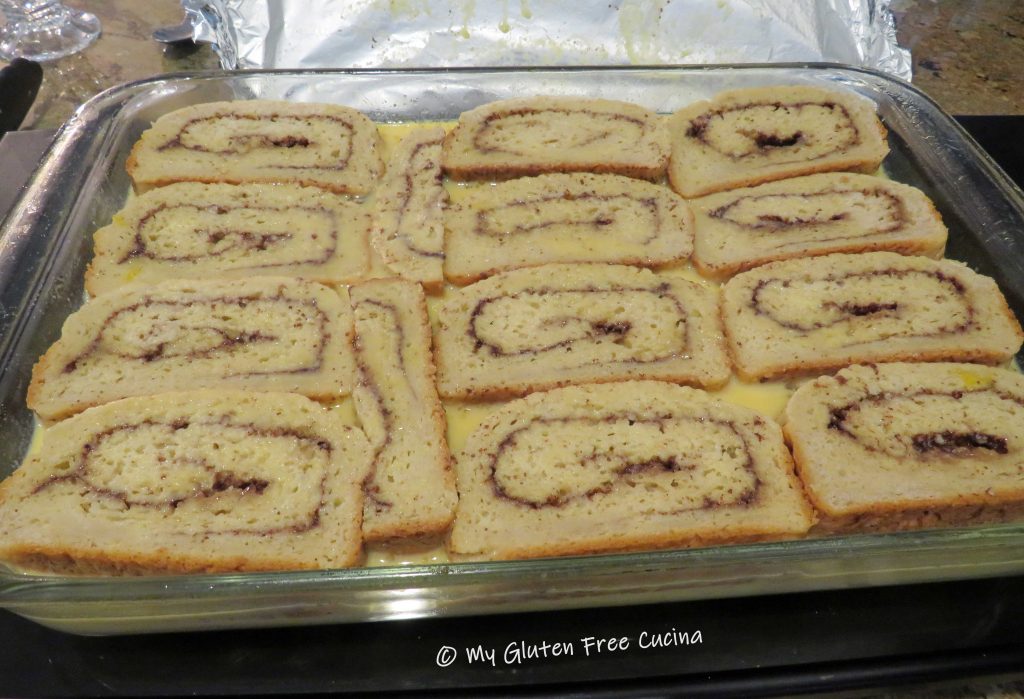

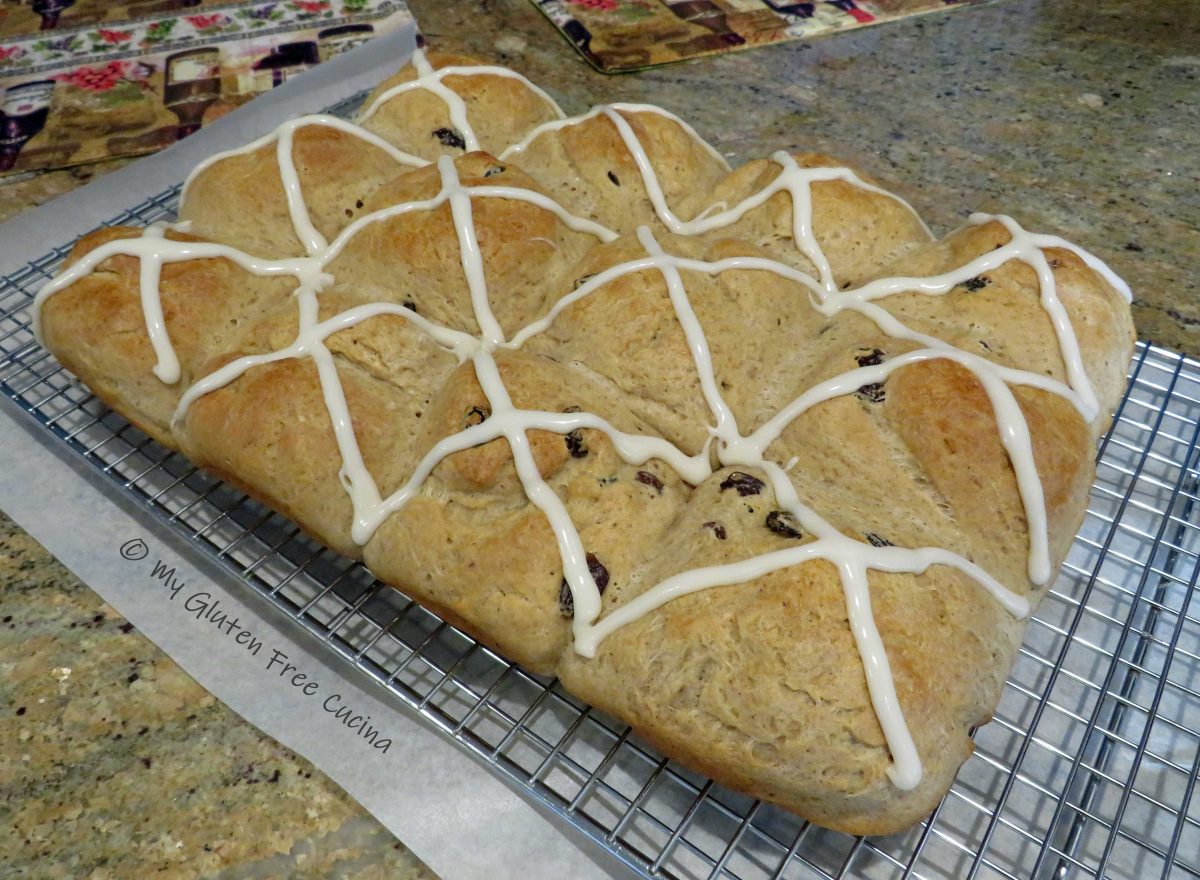




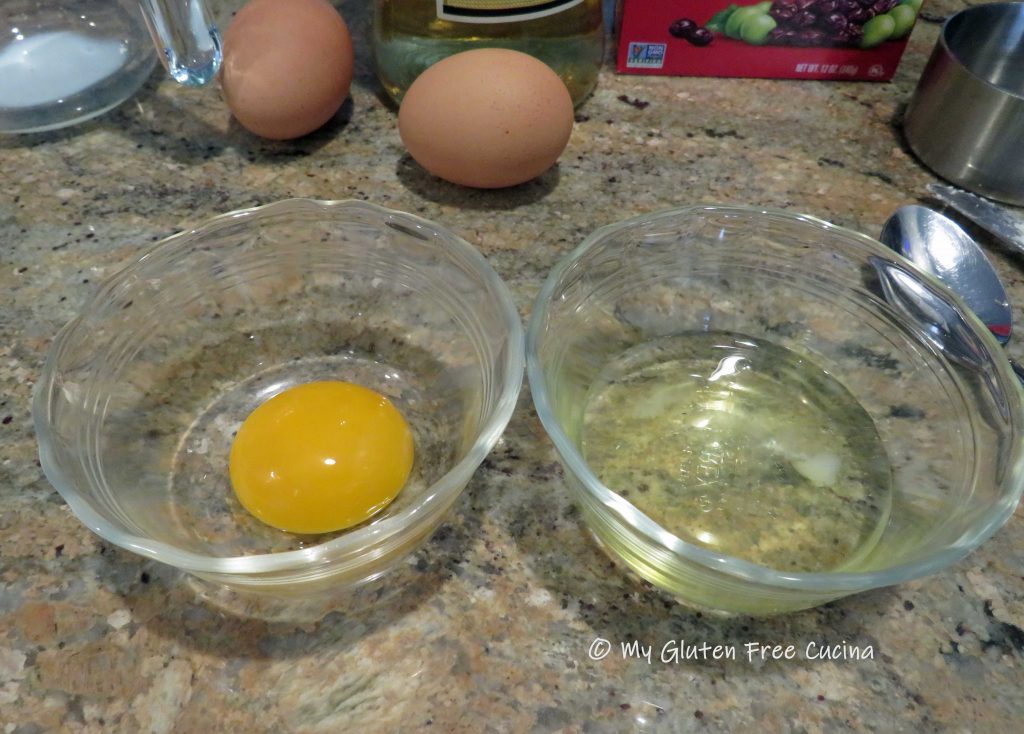
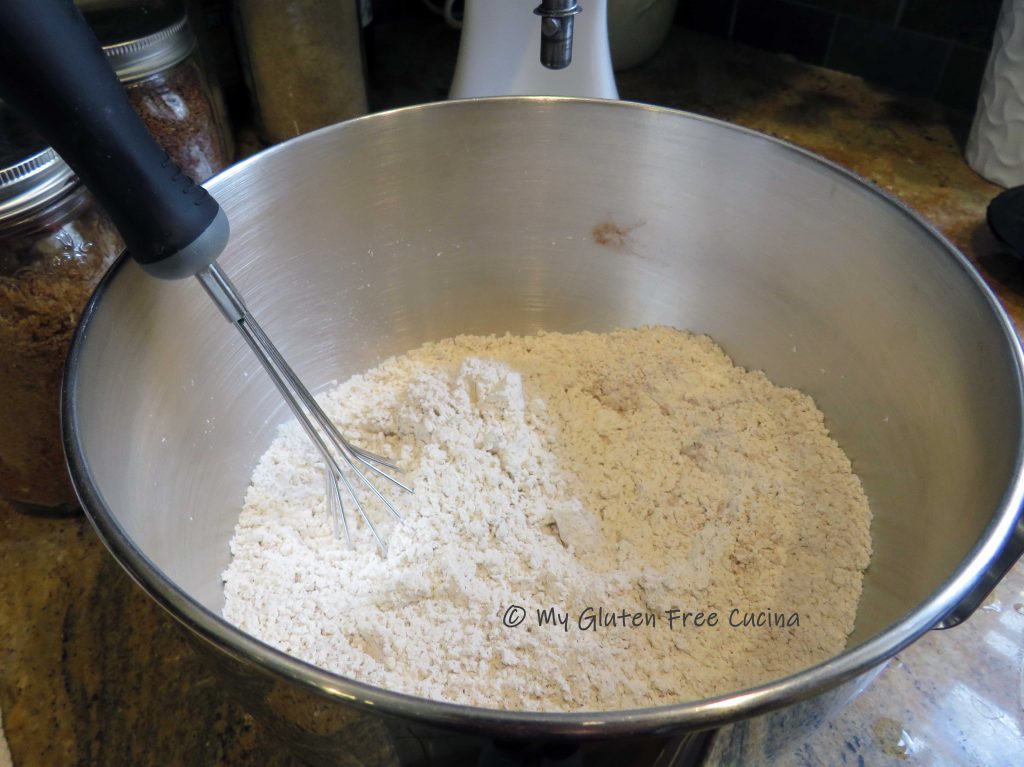 Add the butter, eggs and milk/yeast mixture and mix together on low with the paddle attachment. It will look like wet pancake batter at this point. Increase the speed and beat for 5 minutes to form a soft, smooth dough.
Add the butter, eggs and milk/yeast mixture and mix together on low with the paddle attachment. It will look like wet pancake batter at this point. Increase the speed and beat for 5 minutes to form a soft, smooth dough.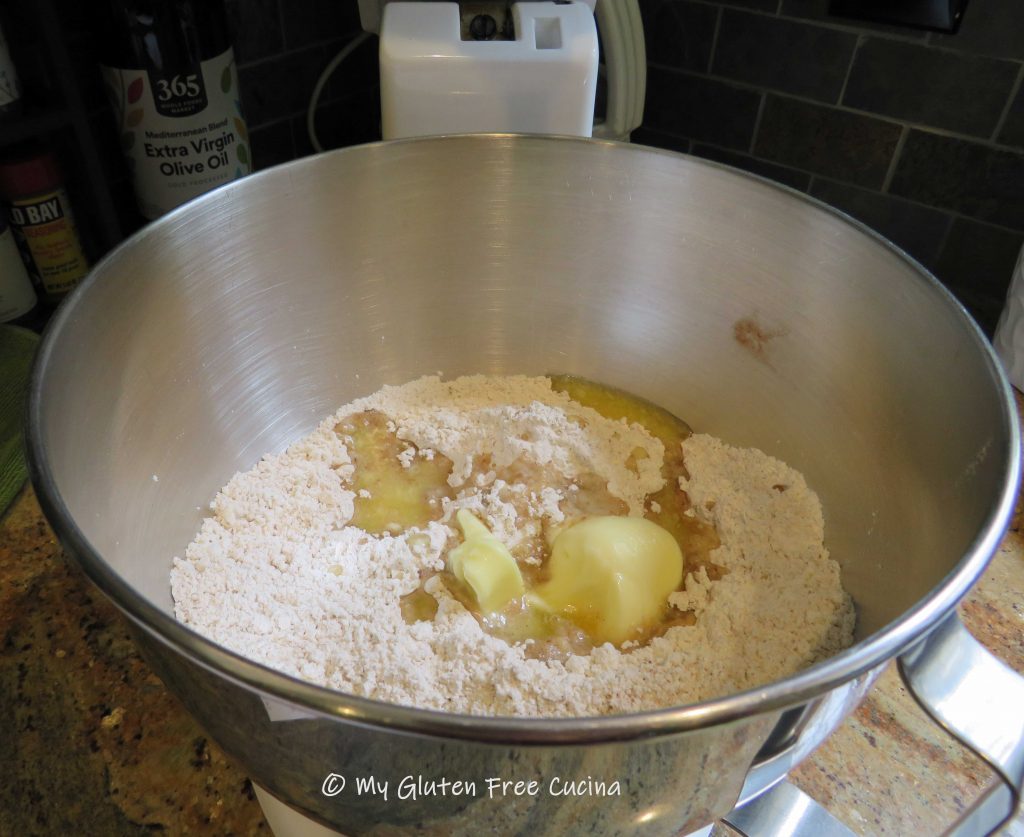
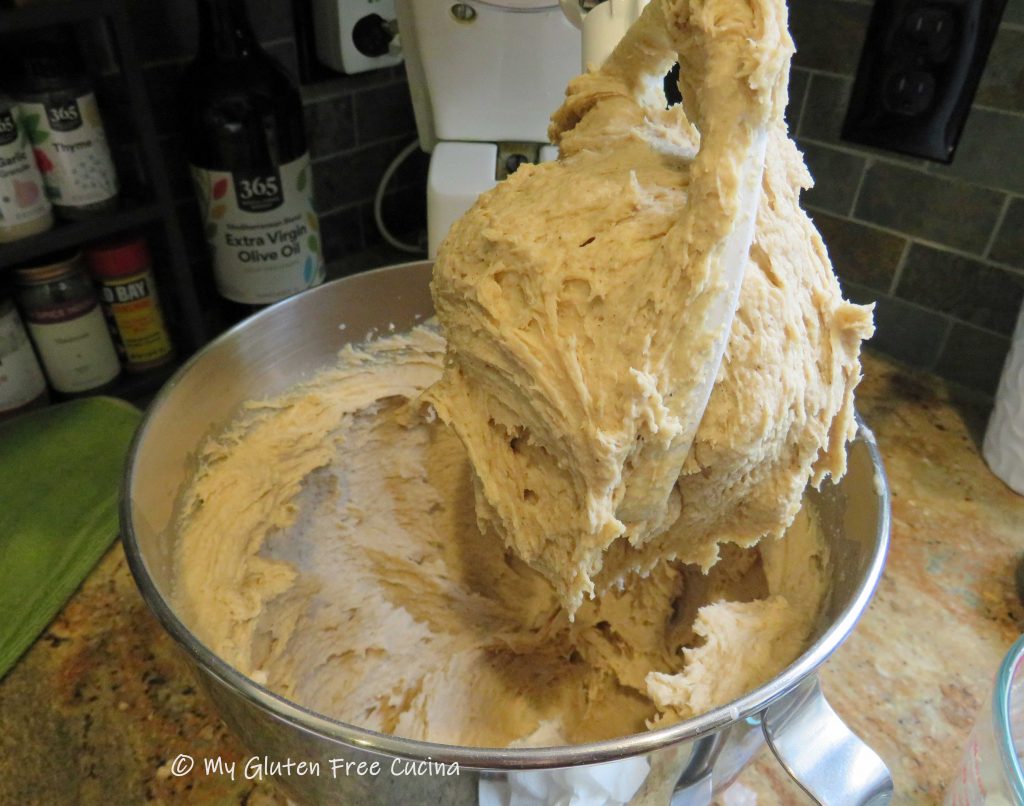 Finally, add the rum-soaked raisins and their liquid, mixing for one more minute to incorporate.
Finally, add the rum-soaked raisins and their liquid, mixing for one more minute to incorporate.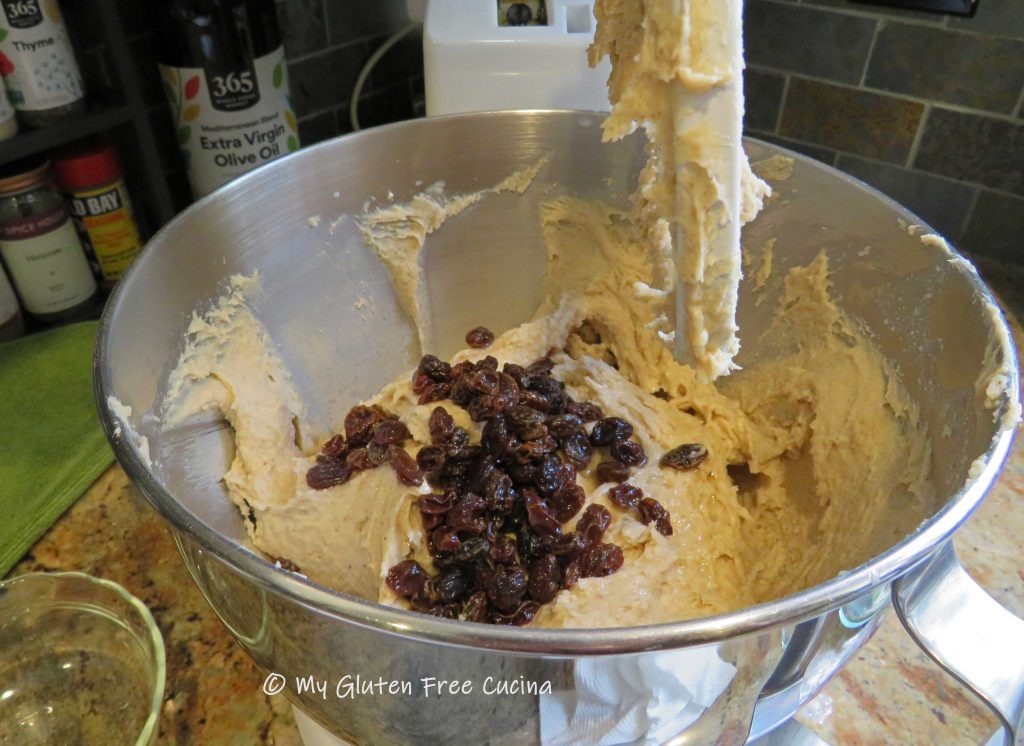
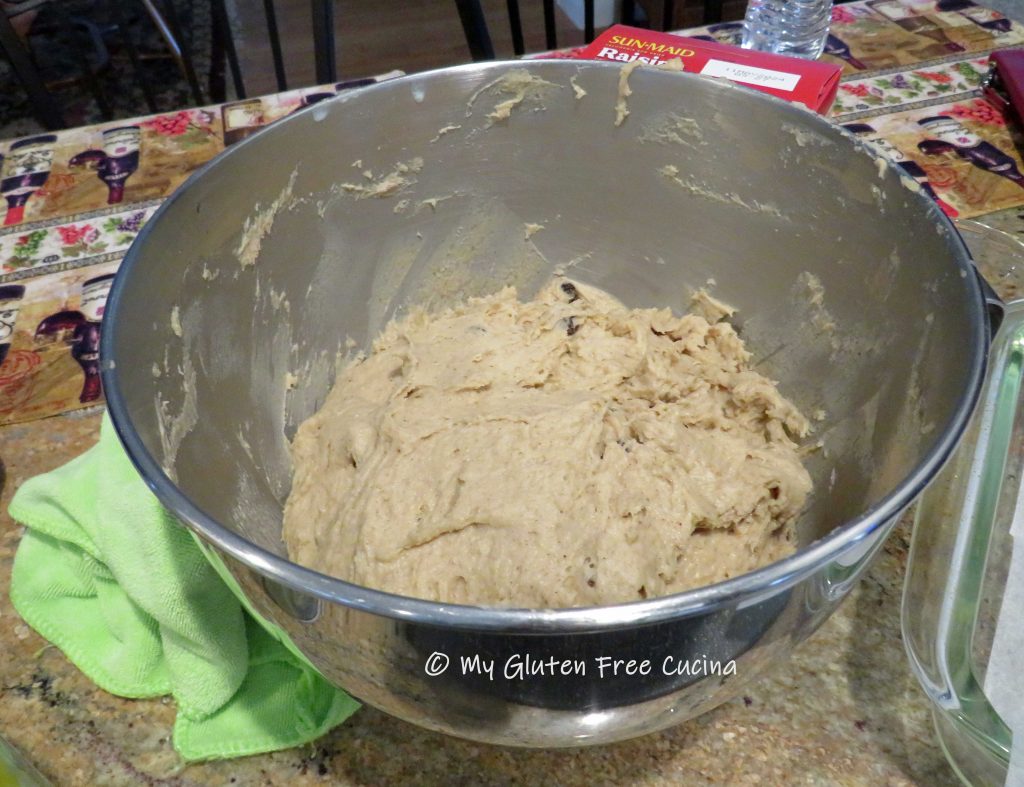
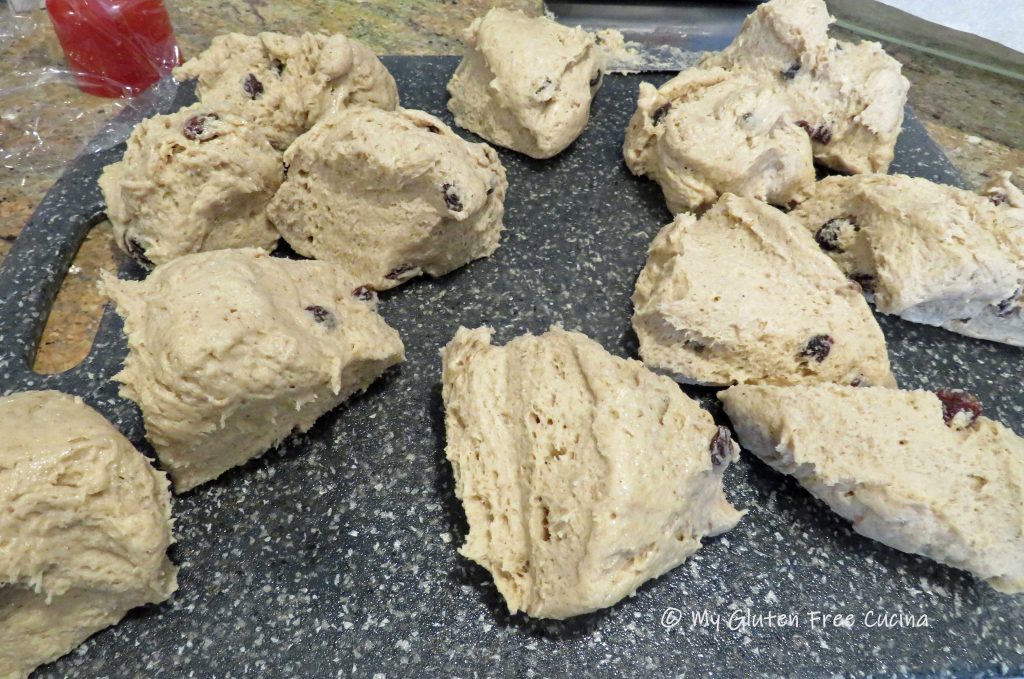



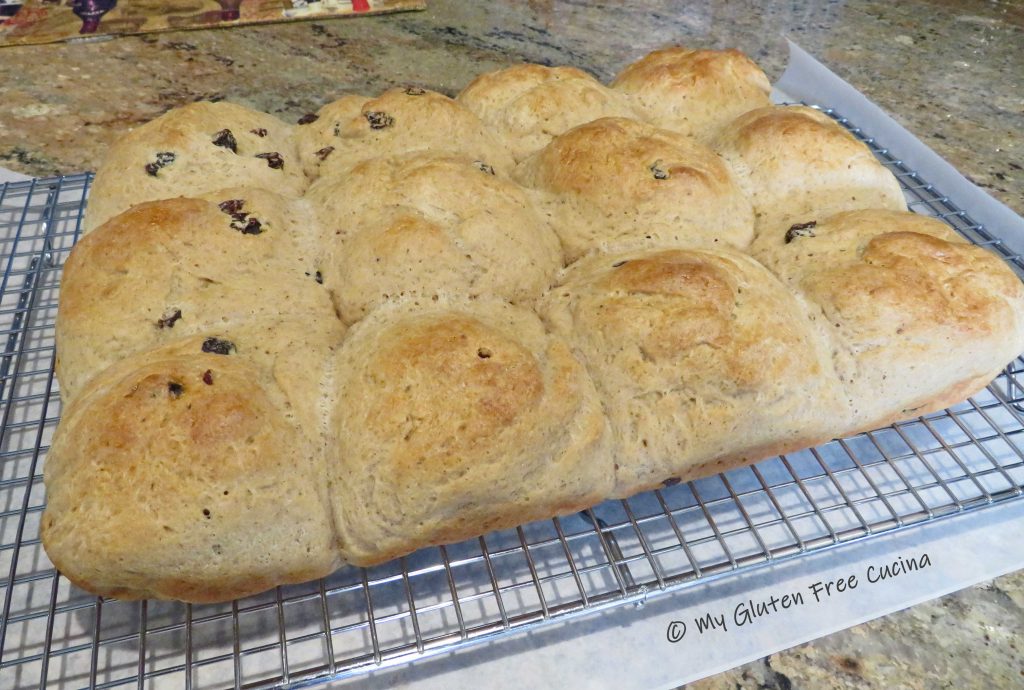

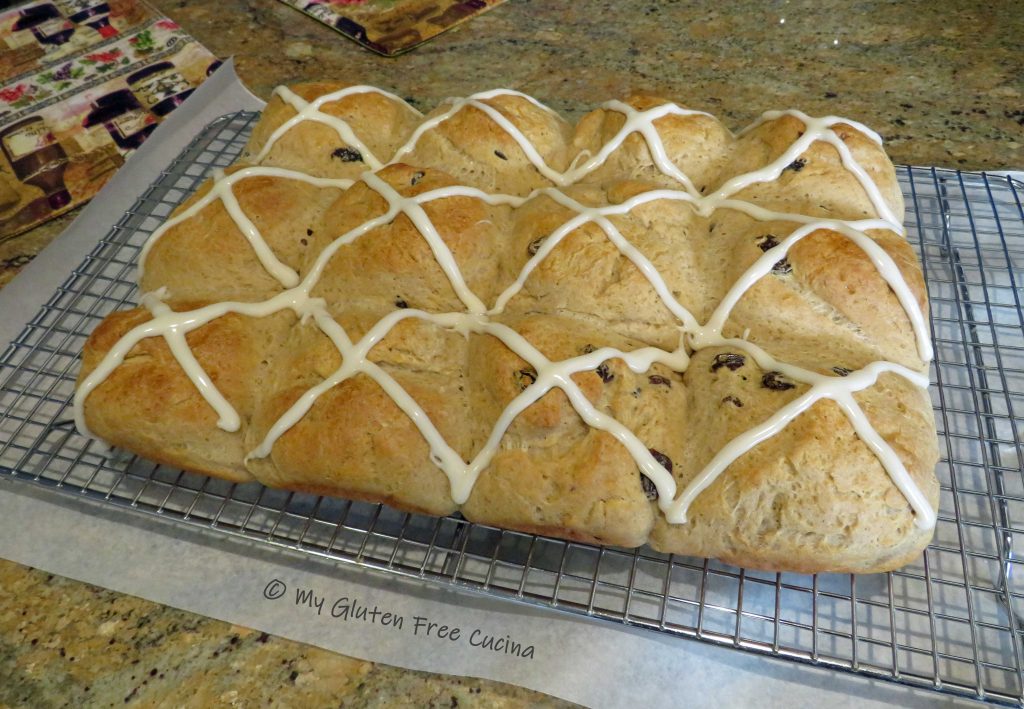

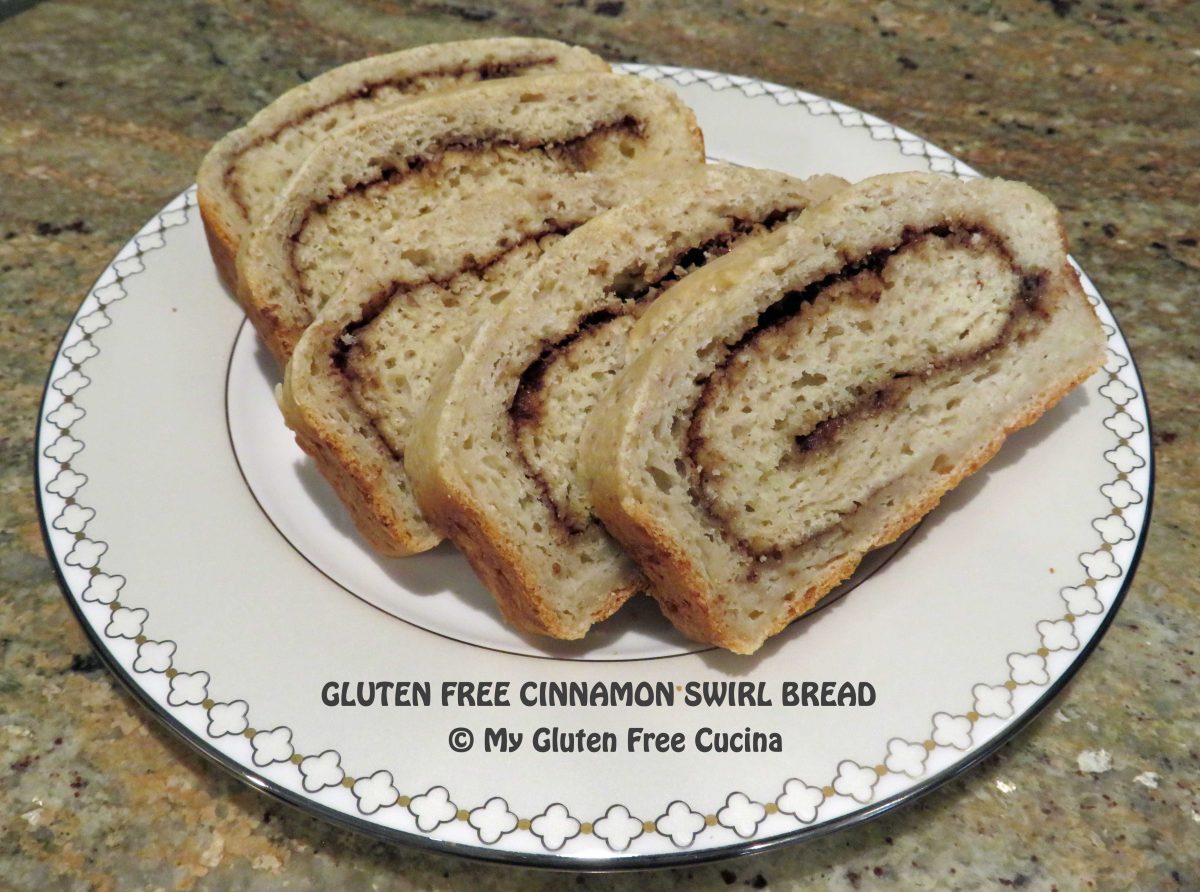
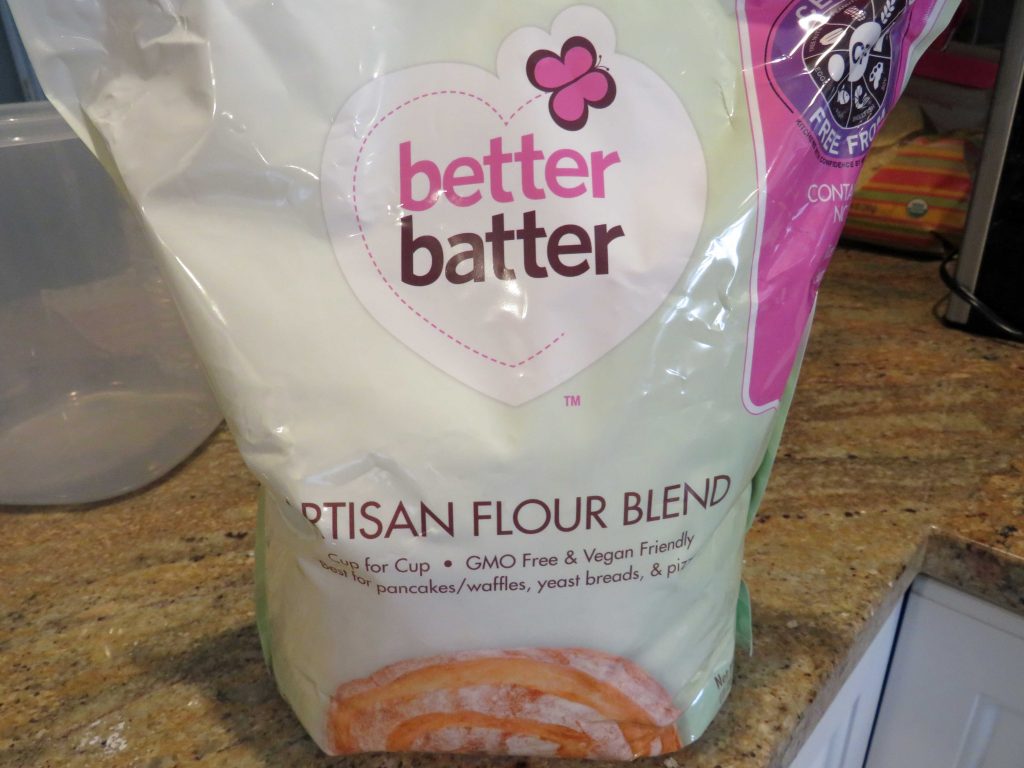
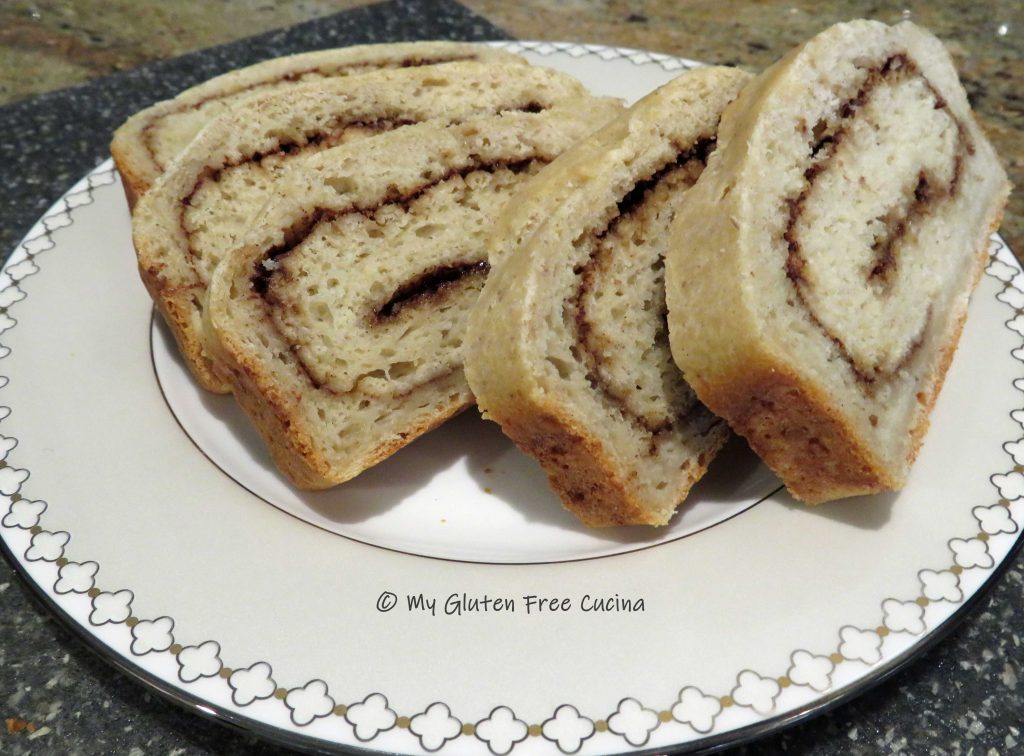
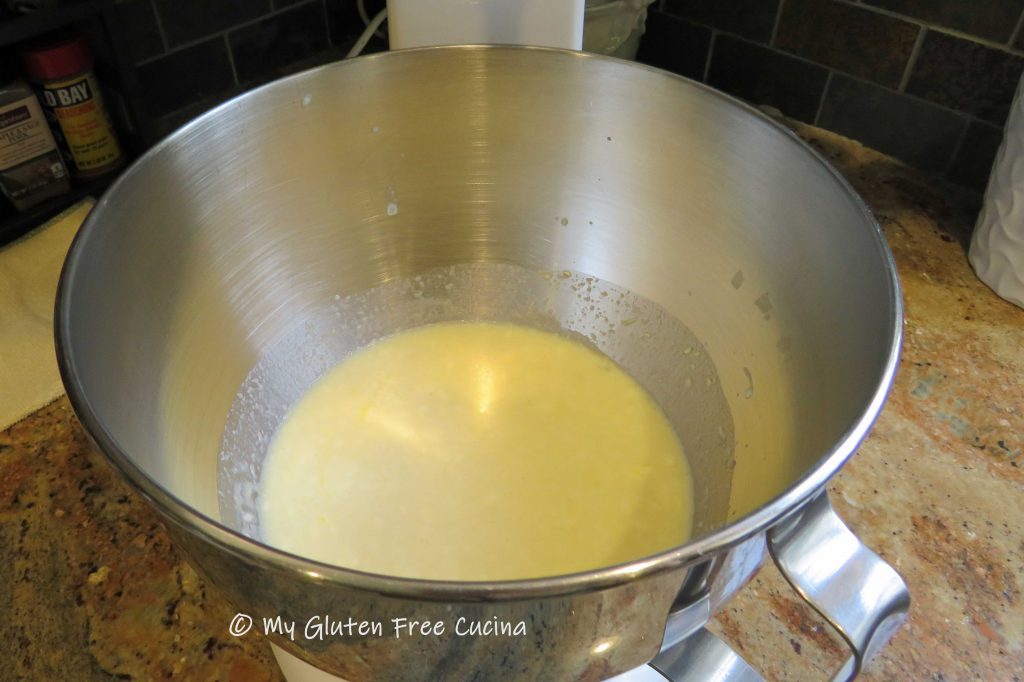
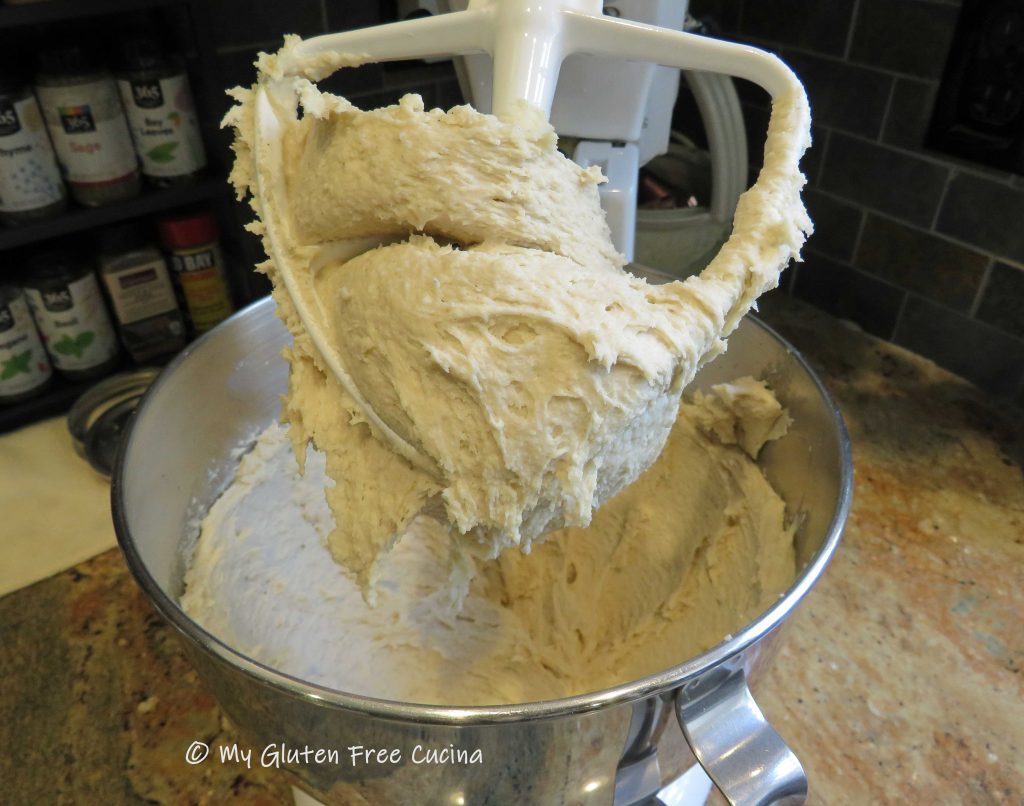

 Spread the brown sugar and cinnamon mixture evenly over the dough, leaving a 1″ border all around.
Spread the brown sugar and cinnamon mixture evenly over the dough, leaving a 1″ border all around.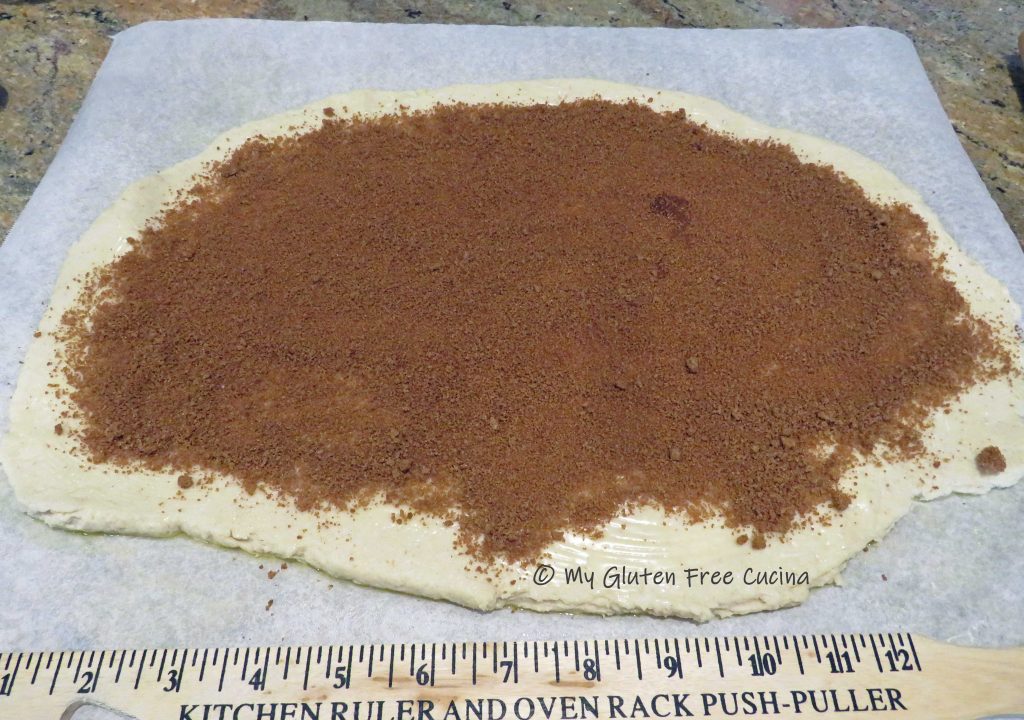
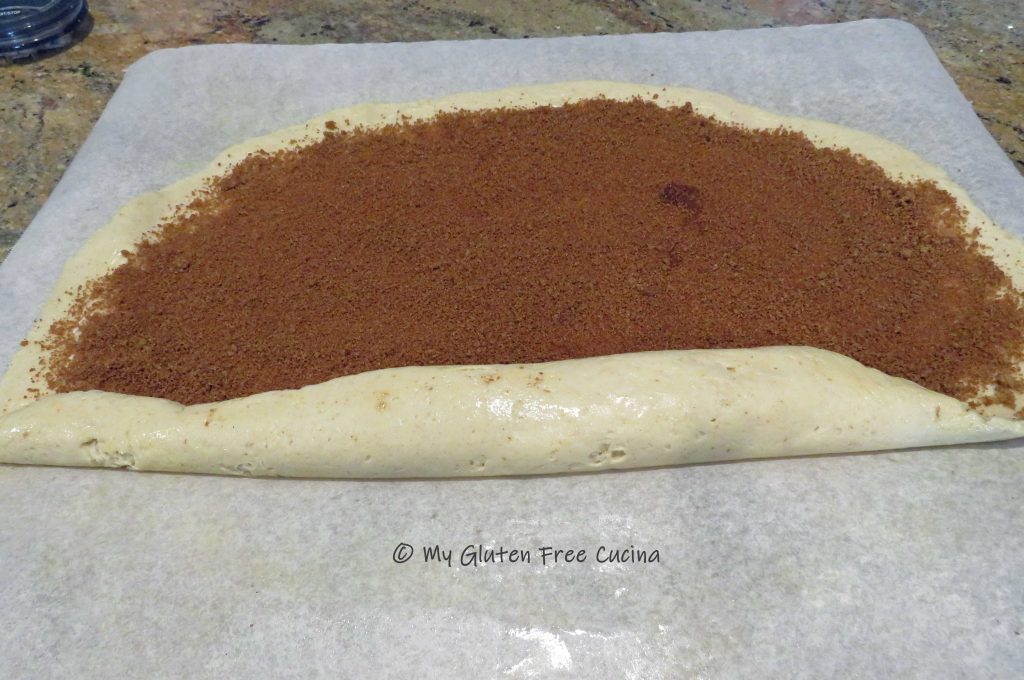
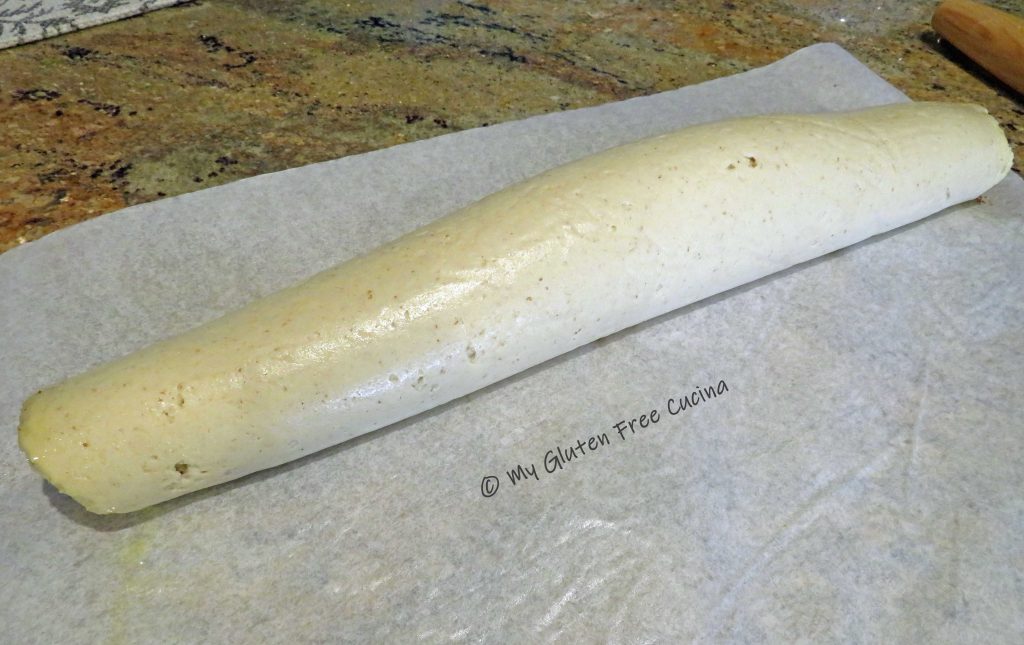
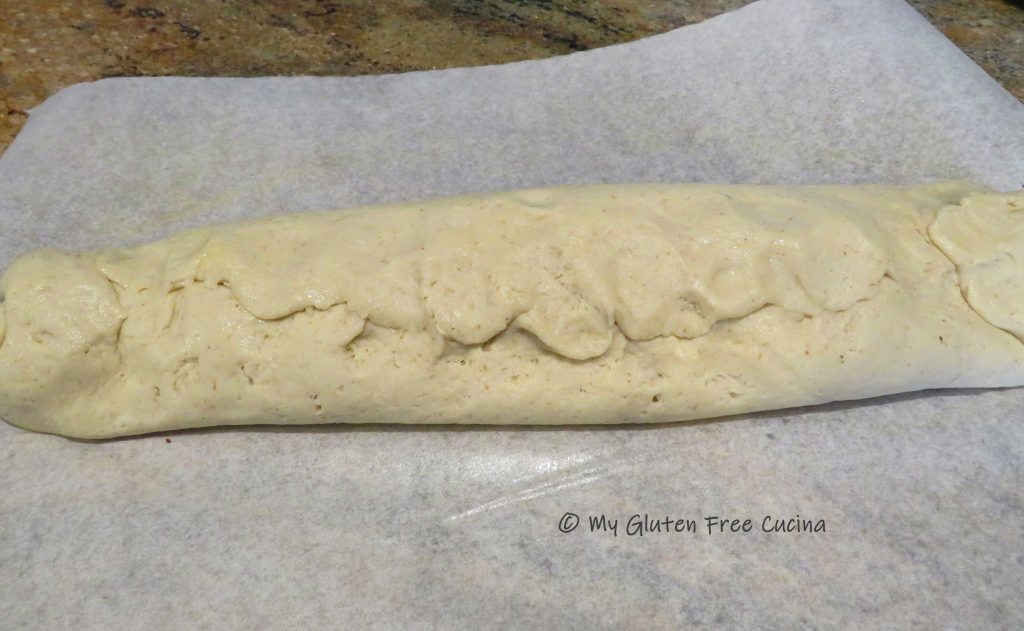
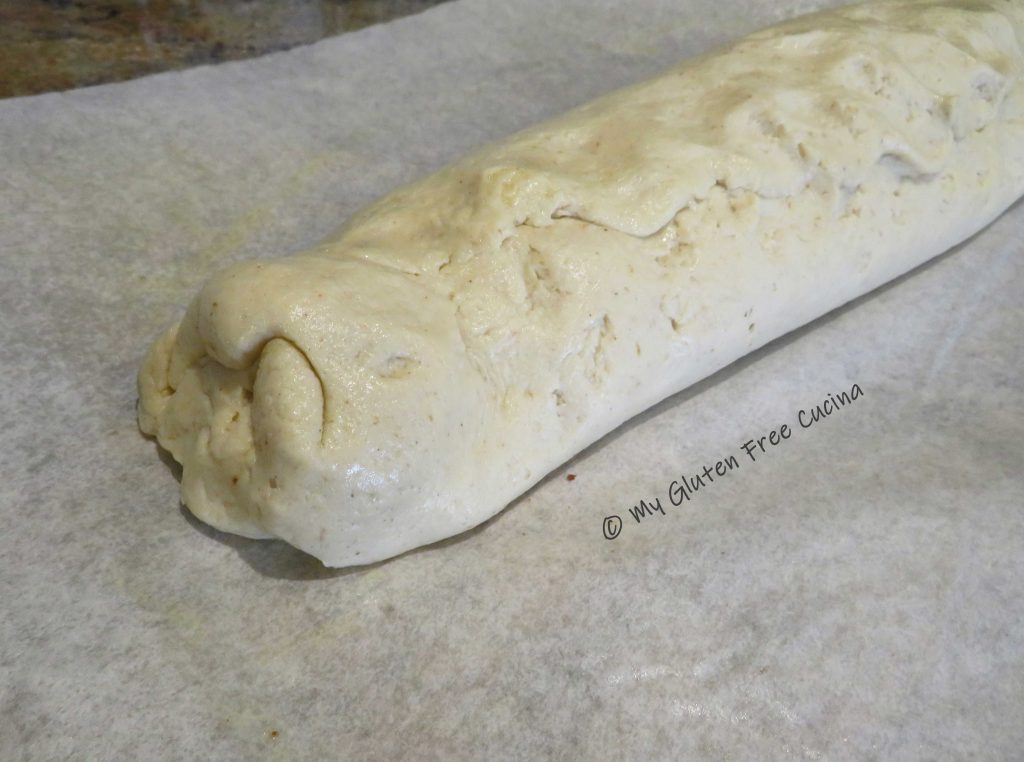
 Bake for 40 minutes or until the internal temperature reaches 200º. Remove from the oven and brush the top with 1 tbsp. melted butter.
Bake for 40 minutes or until the internal temperature reaches 200º. Remove from the oven and brush the top with 1 tbsp. melted butter.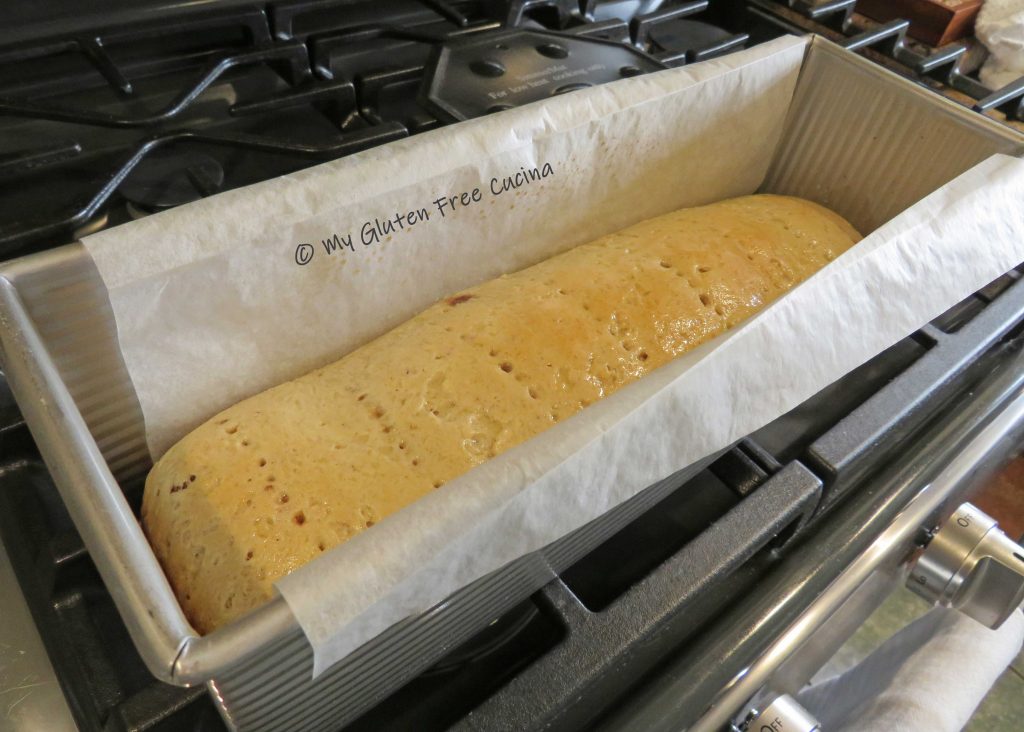 Grasp both sides of the parchment to lift the loaf out of the pan to a cooling rack.
Grasp both sides of the parchment to lift the loaf out of the pan to a cooling rack.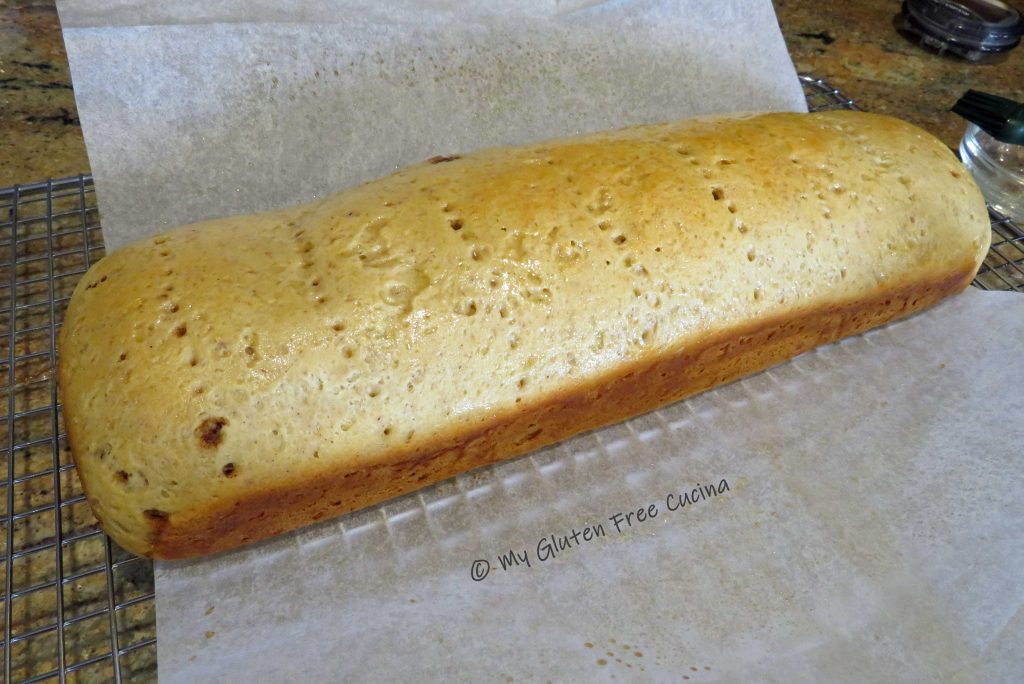 Slide the parchment out and let the loaf cool completely before slicing.
Slide the parchment out and let the loaf cool completely before slicing.